Nomadic Matt's Travel Site
Travel Better, Cheaper, Longer

Italy Travel Guide
Last Updated: November 17, 2023

Italy is one of Europe’s most iconic and popular destinations. Home to incredible food, fabulous wine, tons of ancient ruins, undying romance, and picturesque landscapes, it should come as no surprise that this is one of the most sought-after travel destinations in the world.
I’ve been visiting since 2006 and I never tire of it.
The vineyards in Tuscany, history in Florence , ancient streets of Rome , gorgeous views and hills Cinque Terre , romantic canals in Venice — I love it all.
Italy is best experienced slowly so pace yourself. Soak in the atmosphere and way of life as you explore. Italians move slowly and enjoy la dolce vita and so should you! Relax, take in the scenery, enjoy a cappuccino or a glass of wine. The slower you go, the better you’ll be able to appreciate the charms and nuance of this iconic southern European gem.
This travel guide to Italy can help you plan your trip, save money, and make the most of your time here.
Table of Contents
- Things to See and Do
- Typical Costs
- Suggested Budget
- Money-Saving Tips
- Where to Stay
- How to Get Around
- How to Stay Safe
- Best Places to Book Your Trip
- Related Blogs on Italy
Click Here for City Guides
Top 5 things to see and do in italy.
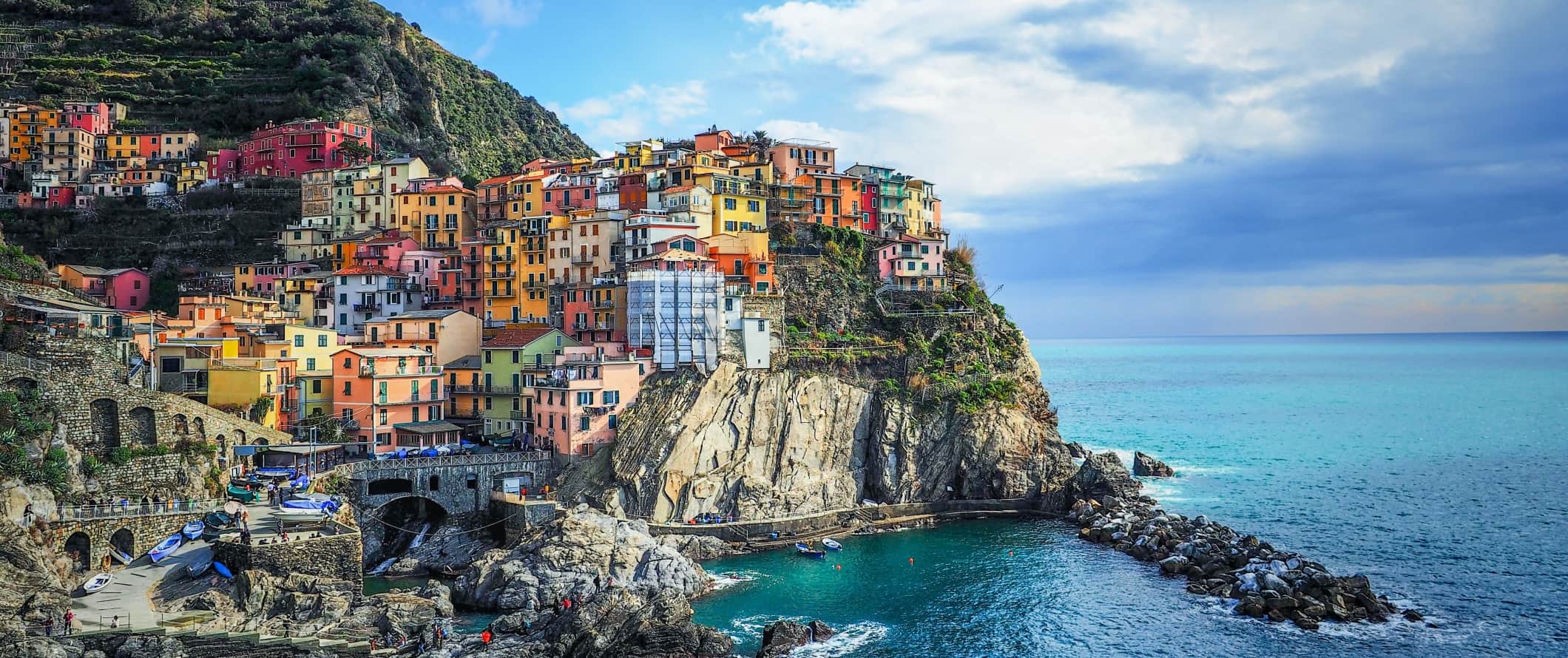
1. Explore Venice
While crowded, Venice is an astounding place to visit. I love the city’s iconic architecture and picturesque canals. Don’t miss the Piazza San Marco, Doge’s Palace, Rialto Bridge, the Basilica San Marco, and the city’s countless museums. Moreover, be sure to head to the old Jewish Ghetto for hip bars and cheap drinks (the English word ghetto comes from this area of Venice). Venice is also home to several world-class festivals. In late winter, the epic Carnival takes place here and, in August, the prestigious Venice Film Festival takes over the nearby island of Lido. If you have time, be sure to explore the neighboring islands on a day tour. They are charming in their own right.
2. Wander Rome
Rome has so much to see and do that you’ll need to make several trips to even scratch the surface. Besides obvious highlights like the Colosseum, Forum, Palatine Hill, and Trevi Fountain, make sure you explore the Trastevere neighborhood. It’s my favorite area in Rome and feels almost like a village inside a big city. Trastevere offers delicious food, funky bars, and ancient winding streets. I love the family pizzerias and cafes here for people-watching and the gelato. Vatican City, the smallest independent city-state in the world, is nestled within the heart of Rome and is home to the Pope, St. Peter’s Basilica, the Sistine Chapel, and many fantastic museums. You can fill an endless amount of time here so don’t try to rush your visit!
3. Tour Pompeii
Located a 20-40-minute train ride from Naples , Pompeii is an ancient city that was destroyed by a volcano, preserving it in a blanket of ash still frozen in time. Walk around the Roman city as it stood the day that Mount Vesuvius exploded in 79 CE, moving in and out of homes, villas, baths, and businesses where pots and vases still lay. What really struck me was entering the houses and seeing that the fountains and most of the beautiful frescoes are still intact. Admission is 16 EUR while a guided tour with a professional archeologist is 50 EUR. It’s a huge site and will take a full day to visit in depth.
4. Hike the Cinque Terre
The Cinque Terre consists of five colorful coastal villages on the west coast of Italy, backed by steep vineyards and mountains. These small towns are by no means undiscovered by tourists but still absolutely beautiful and teeming with great shops and cafes. Each village has its own unique charm and personality so be sure to visit all of them. I absolutely love the fun hikes in the stunning hills high above the sea between the villages that range in difficulty. The Cinque Terre express train makes it super easy to pop around to the different villages if you don’t want to hike between the towns. Trail #7 is my favorite.
5. Relax on the Amalfi Coast
Other things to see and do in italy, 1. party at the venice carnival.
Carnival is ten days of masquerade madness every February leading up to Mardi Gras. The tradition goes back centuries, starting in the 12th century and reaching the height of popularity in the 18th century. Today, it’s one of the biggest festivals in Italy, with millions of people attending every year. The iconic and diverse masks are a central part of the festivities and every year there is a contest for the most beautiful mask. If you want to splash out, you can even attend a traditional masquerade ball! Just be sure to book your accommodation early as the city fills up months in advance.
2. Explore Milan
Milan is the fashion capital of Italy. Spend some time taking in the glamor but don’t spend more than a day or two here unless you’re looking to splash out. While you’re here, don’t miss the beautiful Milan Cathedral, which boasts 3,500 statues, 135 spires, and five bronze doors. Sforzesco Castle, a 15th-century castle that houses Michelangelo’s last sculpture, is also worth a visit. There’s also Leonardo da Vinci’s The Last Supper , located inside Santa Maria delle Grazie church (which is itself a UNESCO World Heritage Site) as well as Leonardo’s Horse, one of the largest equine statues in the world. To get away from the crowds, spend some time relaxing in Parco Sempione, Milan’s most famous city park. It’s a vast oasis of green space and perfect for a picnic when the weather is nice.
3. See the Leaning Tower in Pisa
The entire city of Pisa is focused on taking photos of this famed tower. Started in 1173 and finished in 1399, it’s the bell tower of Pisa’s cathedral, located next door. Although it was meant to be perfectly vertical, the tower started leaning during construction due to the weight of the building on an unstable foundation. Admission to the top is 20 EUR or 27 EUR for a ticket that includes all the monuments in the complex. DiscoveryPisa runs a guided tour of all three sites for 30 EUR if you want a more in-depth experience.
4. Visit Siena
Everyone who visits Siena walks away loving it. Located in Tuscany, it’s one of the best-preserved medieval cities in Italy and boasts a labyrinth of lanes gathered around the arena of Piazza del Campo. Spend a few days admiring this charming city and exploring one of Italy’s most popular and famous regions. The main draw to the city is the stunning Siena Cathedral, which was constructed with white and black marble and is one of the most beautiful cathedrals in the country (the interior is massive and ornately decorated and lined by huge columns). Be sure to also visit the Torre del Mangia, a narrow 14th-century tower that offers stunning views of the area, as well as the 14th-century Fonte Gaia fountain, which is decorated by centuries-old marble panels.
5. Wander Naples
Naples , made famous as the birthplace of pizza, is a gritty city home to a wealth of historical treasures. There’s the medieval Naples Cathedral, the 18th-century Villa Comunale Park, and nearby Naples , Pompeii , one of the most amazing and important sites to visit in the country. The Archaeological Museum of Naples is also worth a visit, and if you enjoy hiking you can climb up the iconic Mount Vesuvius. Naples is the gateway to the south so you’re very likely to come here if you’re crisscrossing the country. Its location near Pompeii, Capri, and Sorrento makes it the perfect starting point for exploring the region. Best of all, it’s a foodie city like no other; I ate my weight in pizza during my visit!
6. Explore Florence
There’s no real need to explain why one should visit Florence — the city speaks for itself. Everything people say about it is true: great food, amazing museums, ancient buildings, small streets, awesome gelato. The city has it all. Be sure to visit The Uffizi, which holds the world’s most important collection of Renaissance art (including the The Birth of Venus and La Primavera by Botticelli, Bacchus by Caravaggio, and Doni Tondo by Michelangelo). The famous David statue is also in Florence, housed in the Galleria dell’Accademia. It’s one of the most impressive sculptures in the world and at 5.17 meters (17 feet) tall, it’s a lot bigger and more detailed than you think it would be! While here, make sure you take a few wine tours throughout the region to get a feel for the verdant countryside.
7. Drive around “the Heel”
Few travelers ever visit the southern heel of the Italian “boot.” But, if you have time, it’s worth the trip. This is where most of the fruits and vegetables in Italy come from so a trip down here will give you the best glimpse into rustic Italian life far from the maddening crowds of Rome and Italy’s other tourist hotspots. Don’t miss the picturesque Polignano a Mare, with its rugged cliffs and white-washed houses. Gallipoli, with its labyrinth of narrow lanes and historic port, is also worth visiting. There are tons of amazing beaches in this part of the country too, including Marina di Pescoluse (Salento), Cala Porto (Polignano a Mare), and Torre Guaceto (Brindisi).
8. Eat your way around Sicily
There’s Italian culture and then there’s Sicily. Sicily has its own unique cooking style, traditions, and customs. It’s unlike the rest of Italy. Be sure to spend some time in Taormina and Palermo (the capital of Sicily). The UNESCO Valley of the Temples is also in Sicily, a national park home to incredible Greek ruins that are over 2,000 years old. Don’t miss the stunning Mount Etna , an active volcano that you can ski on it in the winter or take a tour of the top in the summer.
9. Stroll through Sorrento
Sorrento is a small city in southwestern Italy surrounded by a dreamy landscape of rolling hills, deep valleys, and the Lattari Mountains. There’s not a lot to do in the town itself but Sorrento makes an ideal starting point for numerous excursions to nearby cities and islands around the famous Amalfi Coast, like Capri and Ischia. I especially love driving along the winding coastal roads overlooking the sea. Don’t miss a visit to the nearby Blue Grotto .
10. Attend Settimana Santa (Holy Week)
This is the last week of Lent, known as Holy Week. During this time, there are several processions throughout Italy, drawing crowds of thousands. Throughout the week, there are various gatherings in Puglia, Abruzzo, and Sicily but the major event occurs on Easter Sunday and is led by the Pope himself. It’s an amazing time to visit, but expect huge crowds and for accommodation to sell out months in advance.
11. Visit Alberobello
A UNESCO World Heritage Site, this is an interesting and picturesque little town just south of Bari (a port city on the Adriatic Sea) known for its unusual white cone-shaped houses (they’re super peculiar). It’s well worth a visit between the months of November and April (to avoid the flocks of tourists) as there are a couple of museums to peruse, in addition to some great restaurants, bars, and markets.
12. Tour the Vatican Museums
Founded in the early 16th century, it is a complex of museums spanning over 12 acres. There are so many priceless highlights, including Michelangelo’s works in the Sistine Chapel. You could easily spend hours here. Consider getting a guide to make the museum come to life. Admission is 17 EUR and skip-the-line guided tours with Get Your Guide cost 50 EUR. For a more unique experience, check out the
13. See Chiesa di Sant’Efisio
When you find yourself in Cagliari on Sardinia, wander over to the Stampace quarter to see this church. Dedicated to the patron Saint Ephisius, this is the most important church in the city. The original building dates to the 13th century, though it was rebuilt and expanded in the 16th century and then again in the 18th century, this time in the Baroque style. Admission is free.
14. Take a cooking class
Italy is a dream destination for foodies and the best way to learn about this amazing cuisine is to take a cooking class . You’ll get to visit a local market, learn about the history of some of the country’s best dishes, and then learn how to make them yourself so you can impress friends and family back home. You can find cooking classes all over the country. They are very common. Prices vary depending on what city you take a class in, but most cost at least 70 EUR and last a few hours.
15. Take a walking tour
Walks of Italy offers incredible, detailed tours all around the country. They are my favorite tour company in the country. And they are relatively inexpensive and you definitely get your money’s worth. If you are big into history, culture, or architecture these tours are for you. You’ll walk away with a much richer understanding of the country. Don’t miss them.
For information on specific cities in Italy, check out these city guides:
- Cinque Terre Travel Guide
- Florence Travel Guide
- Milan Travel Guide
- Naples Travel Guide
- Pisa Travel Guide
- Rome Travel Guide
- Sorrento Travel Guide
- Venice Travel Guide
Italy Travel Costs
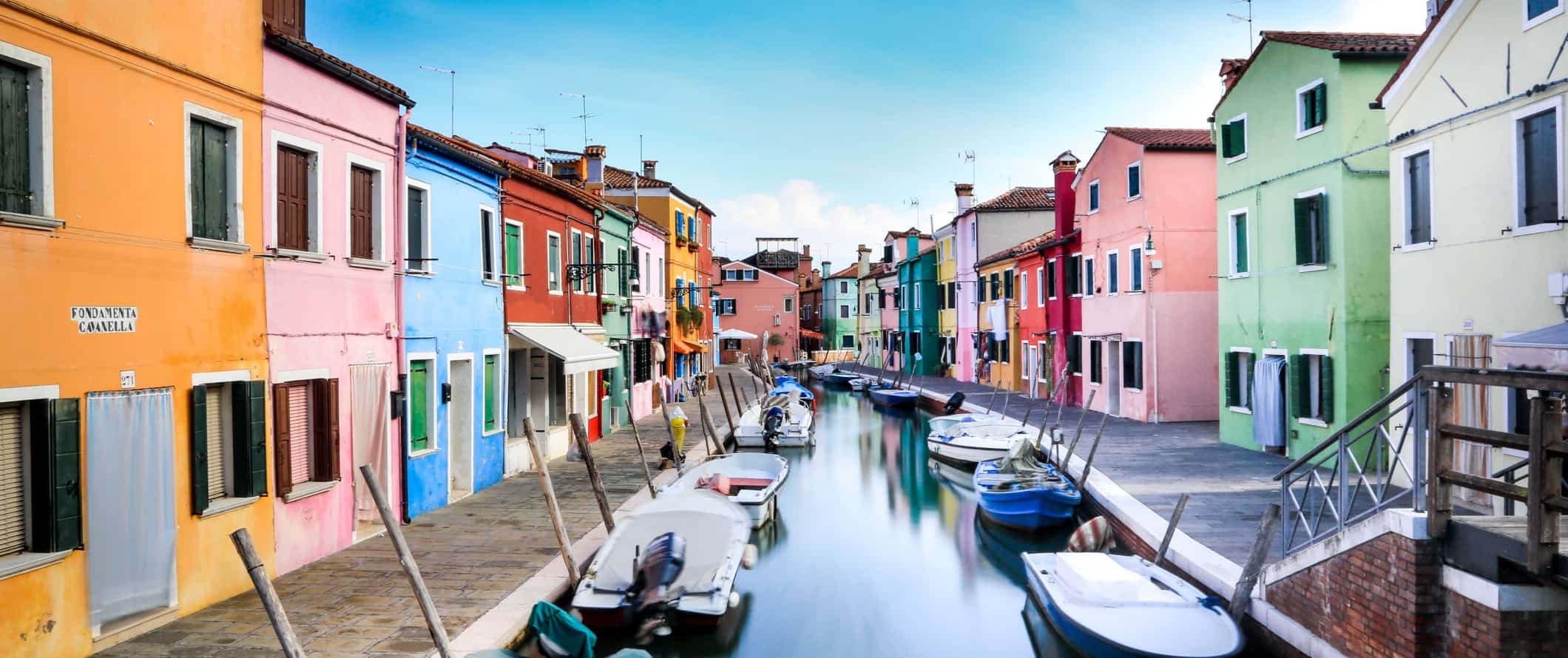
Accommodation – Hostel dorms average 27-40 EUR per night for rooms with 6-8 beds. Private rooms are usually between 55-100 EUR per night. Free Wi-Fi is standard and most hostels also have self-catering facilities and include breakfast. During the summer months, expect prices to double. In Rome and Florence, prices throughout the year are about 20% higher than anywhere else.
For those traveling with a tent, campgrounds are available around the country, usually costing between 15-30 EUR per night for a basic plot for two people.
A night in a two-star budget hotel ranges between 70-125 EUR per night. Expect basic amenities like free Wi-Fi, TV, AC, and occasionally free breakfast. Prices are on the higher end in cities like Rome and Venice and also double during the summer.
On Airbnb, private rooms start around 45-90 EUR, while entire apartments usually start around 100-150 EUR. Expect prices on the higher end in hotspots like Rome and Venice. Prices can also double (or triple) when not booked in advance. Additionally, expect even higher prices in the busy summer months.
Food – Italian cuisine is beloved around the world, though every region in Italy offers its own distinct flavor. Tomatoes, pasta, olives, and olive oil form the backbone of most dishes, with meat, fish and various cheeses rounding out the menu. Gelato and pizza, of course, are also super popular. Some traditional dishes include bigoli in salsa (pasta in anchovy sauce), risotto al nero di seppia (risotto with cuttlefish ink), gnocchi alla Sorrentina (potato gnocchi), cassoeula (a meat and cabbage stew), and tagliatelle funghi porcini e tartufo (pasta with mushrooms and truffles).
A casual restaurant meal of pizza or pasta usually costs 10-20 EUR. In tourist hot spots, add 5-10 EUR to that.
Quick eats like pizza by the slice, paninis, and light snacks cost between 3-8 EUR. Snacks like croissants are less than 2 EUR.
Fast food (think McDonald’s) costs around 8-10 EUR for a combo meal while Chinese, Thai, or Indian food is 10-12 EUR for a main dish. Dessert is usually around 4-8 EUR for something like tiramisu.
Your average restaurant meal costs around 30 EUR with a drink. Most main dishes cost around 15-20 EUR while a pizza is around 10-15 EUR. For higher-end meals, expect to spend about 70 EUR for a three-course meal with a drink.
Beer costs around 4-5 EUR while a glass of wine costs 4-8 EUR. For non-alcoholic drinks, a latte or cappuccino is around 1.50 EUR and bottled water is 1 EUR.
If you plan on cooking your own groceries, expect to spend 50-65 EUR per week. This gets you basic staples like pasta, rice, seasonal produce, and some meat or fish.
Backpacking Italy Suggested Budgets
If you’re backpacking Italy, my suggested budget is 60 EUR per day. This assumes you’re staying in a hostel, cooking all your meals, limiting your drinking, taking public transportation to get around, and sticking to mostly free activities like hiking, free walking tours, and the beaches. If you plan on drinking a lot, add at least 15 EUR to your daily budget.
On a mid-range budget of 140 EUR per day, you can stay in an Airbnb or budget hotel, eat out for a couple of meals, enjoy a few drinks, take the occasional taxi, and do more paid activities like touring the Colosseum or exploring Pompeii.
On an upscale budget of 255 EUR or more per day, you can stay in a budget hotel, eat out for all your meals, drink as much as you want, rent a car, and do whatever tours and activities you want. This isn’t a real luxury budget but it’s a budget that affords you the ability to do anything you want. If you want real luxury, you’ll need to read a different blog for that!
You can use the chart below to get an idea of how much you need to budget daily, depending on your travel style. Keep in mind these are daily averages — some days you’ll spend more, some days you’ll spend less (you might spend less every day). I just want to give you a general idea of how to make your budget. Prices are in EUR.
Italy Travel Guide: Money-Saving Tips
It’s very easy to break the bank in Italy, owing to all the historic sites, expensive accommodation, and delicious but pricey restaurants. After all, Italy is one of the most expensive Eurozone countries. You’re going to be spending a lot on a visit here. However, there are still lots of ways to reduce your expenses. Here are some tips to help you save money in Italy:
- Skip the bread – Many restaurants offer you bread when you sit down — but they don’t mention that it’s not free. If you’re on a budget, decline the bread and save a few Euros each dining experience.
- Picnic – Head to the store or one of the many markets in the country and grab food for a picnic. It’s cheaper than eating out and you can lounge in one of the many parks to watch the day go by. Food markets are a good place to try things, get fresh cheese and cold cuts, pasta, and snacks like ‘arancini,’ a super-filling rice ball stuffed with meat or cheese.
- Drink the tap water – When out at a restaurant, ask for tap water or you will automatically get expensive bottled water included on your bill. Since the tap water is safe to drink, bring a reusable water bottle to save money and reduce your plastic use. LifeStraw is my go-to brand as their bottles have built-in filters to ensure your water is always clean and safe.
- Buy wine at the store – You can buy a great bottle of wine for 6-10 EUR at the store. It’s a lot cheaper than drinking at the bar. Take it outdoors and sit around and enjoy the day/evening or skip expensive nightlife and go out for a long dinner and just drink it at the hostel. Just make sure you have a travel corkscrew on you if you’re going to sit outside somewhere!
- Take the bus – Budget bus companies like Flixbus can take you across the country for cheap. It isn’t glamorous, but with tickets starting at 6 EUR you really can’t complain! (And it’s cheaper than the train.) Taking the bus in town inside big cities instead of taking taxis everywhere or renting a car will save you lots of money.
- Take a free walking tour – Most cities in Italy offer free walking tours that cover all the main highlights. It’s the best budget-friendly way to explore and also a great way to meet other travelers if you’re alone. Just be sure to tip your guide at the end!
- Stay with a local – Accommodation is expensive in Italy, even in the hostels. Use Couchsurfing to stay with locals who have extra beds or couches for free. It’s the best way to save money and meet people. Just be sure to send your requests early (especially in the summer). Also, it’s a good idea to research the area you’re staying in first so you’re not so far away from the city center (or city!) that you need to spend a lot of time/money getting into town to see the sites.
- Get a city tourist card – Many tourism offices offer tourist cards that provide free or discounted entry to the main attractions. Some even include restaurant discounts and free transportation. If you plan on sightseeing a lot, these cards can cut your costs drastically. Check the local tourism board in each city for info when you arrive.
- Rideshare – If you’re flexible in your schedule, use the ridesharing service BlaBlaCar to catch rides with locals between cities. I used this service and not only did I save money, I got to meet interesting people and learn more about life in Italy. This is a good option to book a few days in advance. Just make sure to pick someone who has good ratings because newer drivers can have a tendency to be unreliable or cancel at the last minute.
Where to Stay in Italy
There’s a lot of hostels and hotels in Italy to choose from. To help you save money on accommodation, here’s a list of my recommended hostels and budget hotels in Italy:
- Loly Boutique Hotel (Rome)
- The Beehive (Rome)
- Hotel Montecarlo (Venice)
- Generator (Venice)
- Hostel of the Sun (Naples)
- Ulisse Deluxe (Sorrento)
- Hotel Bologna (Pisa)
- Hostel Pisa Tower (Pisa)
How to Get Around Italy
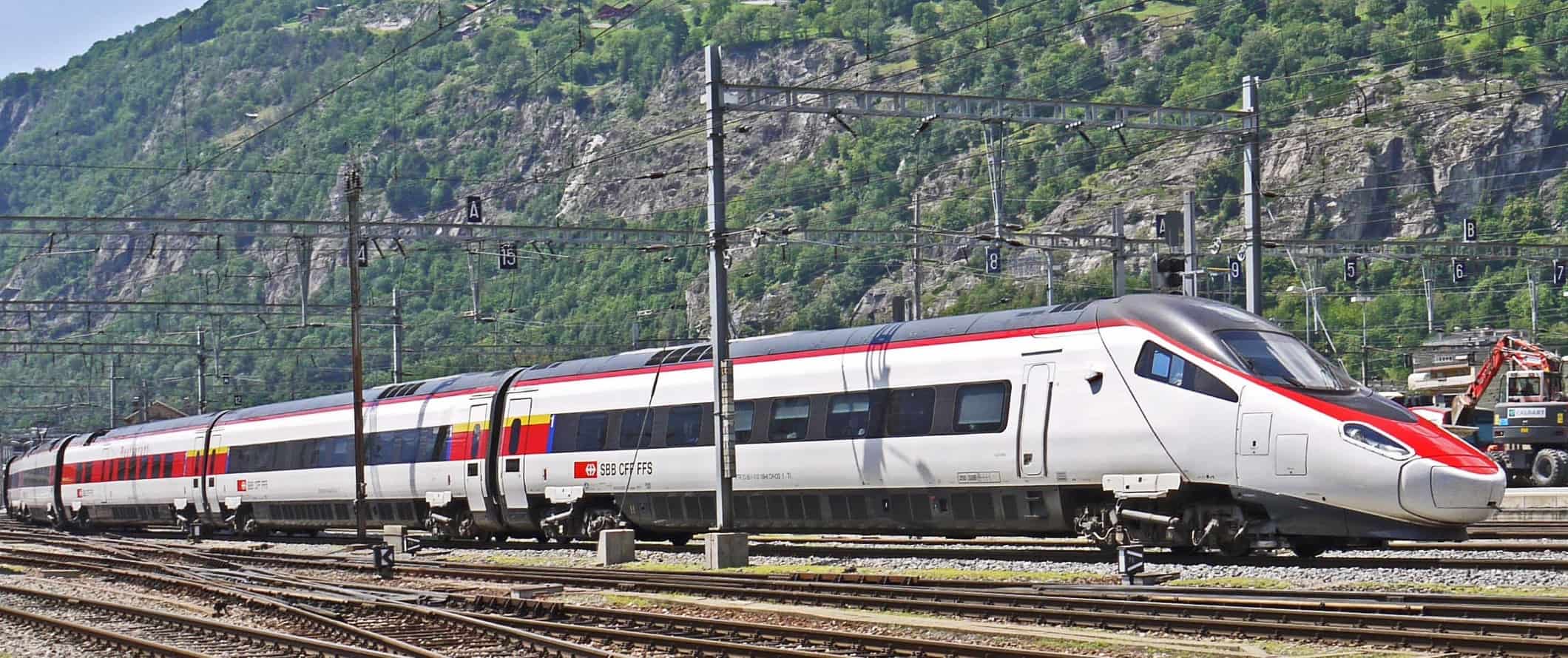
Public transportation – Public transportation is available in all the major cities in Italy (many of which have comprehensive metro systems). Tickets usually cost between 1-2 EUR for a single journey. Some cities also have day passes that offer unlimited travel. In Rome, you can purchase a one-day pass for unlimited travel for 7 EUR. A one-week pass costs 24 EUR, for example. While public transportation is generally reliable, traffic can be a nightmare — especially in Rome.
Train – The best way to get around Italy is via their extensive train network. Prices are affordable too, with most trips costing just 10-30 EUR. Rome to Florence takes just 90 minutes (on the fast train) with tickets starting at 20 EUR. Rome to Venice takes around 4 hours with tickets starting around 30 EUR. Rome to Naples is just over one hour and costs around 20 EUR.
Italo and Trenitalia are the two main rail systems. Tickets on Trenitalia are often a standard price, while Italo’s ticket prices fluctuate more widely. It’s worth it to check both.
Bus – The bus is slower than the train but cheaper, with prices on FlixBus starting as low as 6 EUR. This isn’t the most convenient or fastest way to travel, but the buses are comfortable and good for short and medium journeys. Most buses come with outlets and free Wi-Fi too.
The 4-hour trip from Rome to Florence costs around 7-15 EUR, while a longer trip like Venice to Naples takes 10-15 hours and costs just 20-32 EUR.
Flying – If you’re pressed for time and are looking to jump from one city to the next, a budget airline might be the way to go. Prices can be incredibly low — just 20-100 EUR round trip on airlines like Ryanair.
That said, when you factor in the time spent at airports, you’re likely not going to save much time. Also, keep in mind that you’ll have to pay to check your baggage on these cheap flights and you usually need to print your boarding pass out too (or pay a fee).
Ferry – If you want to visit some of Italy’s amazing islands, you’ll have to book a ferry. Ferries are frequent and you don’t need to book too far in advance, but during peak season it’s a good idea to book at least a few weeks ahead. You can use FerryHopper to find routes and prices. The popular one-hour ferry from Naples to Capri starts from 25 EUR.
Car rental – Car rentals are generally quite affordable here, usually starting around 25-35 EUR per day for a multi-day rental. Just make sure you have an International Driving Permit (IDP) as it’s required before you rent a car. Also, keep in mind that Italian drivers can be on the aggressive side so drive cautiously. For the best rental car deals, use Discover Cars .
When to Go to Italy
There’s no wrong time to visit Italy. Historically, the peak season has been July and August, but post-COVID cities like Rome, Florence, and Venice are busy pretty much year round. Temperatures can soar as high as 36°C (98°F) during the summer, and popular cities like Rome, Venice, and Florence experience a huge influx of visitors. I’d try to avoid visiting in the summer if you can as it’s just too crowded, too hot, and prices increase during this time as well.
Personally, I think the best time to visit Italy is during the shoulder season (March-May and September-October). It’s still warm but the crowds have thinned and prices are lower. This is a particularly great time to hang out in the Mediterranean. Expect daily highs around 22°C (72°F).
Winter is from November to February. It gets cold, and tourist crowds thin out considerably. Temperatures vary quite a bit from north to south, with it sometimes dropping to 2°C (36°F) in Milan and 4°C (39°F) in Rome. On the other hand, November to December is fantastic — you’ll find Christmas markets and festivals galore!
How to Stay Safe in Italy
Italy is a safe country to travel as violent crime against tourists is very rare. However, scams and pickpocketing are common, especially around high-traffic tourist sites in places like Rome and Venice. Always keep your valuables secure and out of sight on public transportation and when out and about. The biggest things to watch out for are pickpockets on public transportation and in crowds. Don’t leave your bag open or put your mobile phone in loose jacket pockets on the tram or subway.
Be wary of people selling discounted tickets on the street. Chances are they are fake so always buy tickets from reputable sellers only. If you take a taxi somewhere, make sure the driver uses the meter so you don’t get ripped off.
If you’re worried about getting ripped off you can read about other common travel scams to avoid here.
Solo female travelers should generally feel safe in Italy, however, the standard precautions apply (never leave your drink unattended at the bar, never walk home alone intoxicated, etc.). Catcalling is not uncommon in Italy. Also, on public transport be mindful of groping on public transport. For specific tips, check out one of the many solo female travel blogs on the country as they will have better advice for you.
If you rent a car, make sure you drive carefully and also have extra insurance. The roads in much of the country are very winding and narrow and drivers here are on the aggressive side.
Natural disasters here are uncommon, but since there are several active volcanoes in the country they can occur. Venice is also prone to flooding, so always be mindful of the weather while you’re here and heed any warnings or advisories.
If you experience an emergency, dial 113 for assistance.
Always trust your gut instinct. Make copies of your personal documents, including your passport and ID. Forward your itinerary along to loved ones so they’ll know where you are.
The most important piece of advice I can offer is to purchase good travel insurance. Travel insurance will protect you against illness, injury, theft, and cancellations. It’s comprehensive protection in case anything goes wrong. I never go on a trip without it as I’ve had to use it many times in the past. You can use the widget below to find the policy right for you:
Italy Travel Guide: The Best Booking Resources
These are my favorite companies to use when I travel. They consistently have the best deals, offer world-class customer service and great value, and overall, are better than their competitors. They are the companies I use the most and are always the starting point in my search for travel deals.
- Skyscanner – Skyscanner is my favorite flight search engine. They search small websites and budget airlines that larger search sites tend to miss. They are hands down the number one place to start.
- Hostelworld – This is the best hostel accommodation site out there with the largest inventory, best search interface, and widest availability.
- Booking.com – The best all around booking site that constantly provides the cheapest and lowest rates. They have the widest selection of budget accommodation. In all my tests, they’ve always had the cheapest rates out of all the booking websites.
- HostelPass – This new card gives you up to 20% off hostels throughout Europe. It’s a great way to save money. They’re constantly adding new hostels too. I’ve always wanted something like this and glad it finallt exists.
- Get Your Guide – Get Your Guide is a huge online marketplace for tours and excursions. They have tons of tour options available in cities all around the world, including everything from cooking classes, walking tours, street art lessons, and more!
- The Man in Seat 61 – This website is the ultimate guide to train travel anywhere in the world. They have the most comprehensive information on routes, times, prices, and train conditions. If you are planning a long train journey or some epic train trip, consult this site.
- Rome2Rio – This website allows you to see how to get from point A to point B the best and cheapest way possible. It will give you all the bus, train, plane, or boat routes that can get you there as well as how much they cost.
- FlixBus – Flixbus has routes between 20 European countries with prices starting as low 5 EUR! Their buses include WiFi, electrical outlets, a free checked bag.
- SafetyWing – Safety Wing offers convenient and affordable plans tailored to digital nomads and long-term travelers. They have cheap monthly plans, great customer service, and an easy-to-use claims process that makes it perfect for those on the road.
- LifeStraw – My go-to company for reusable water bottles with built-in filters so you can ensure your drinking water is always clean and safe.
- Unbound Merino – They make lightweight, durable, easy-to-clean travel clothing.
- Top Travel Credit Cards – Points are the best way to cut down travel expenses. Here’s my favorite point earning credit cards so you can get free travel!
- Walks of Italy – This walking tour company provides inside access to attractions and places you can’t get elsewhere. Their guides rock and they have some of the best and most insightful tours in all of Italy.
- BlaBlaCar – BlaBlaCar is a ridesharing website that lets you share rides with vetted local drivers by pitching in for gas. You simply request a seat, they approve, and off you go! It’s a cheaper and more interesting way to travel than by bus or train!
Italy Travel Guide: Related Articles
Want more info? Check out all the articles I’ve written on backpacking/traveling Italy and continue planning your trip:

The 6 Best Hotels in Florence
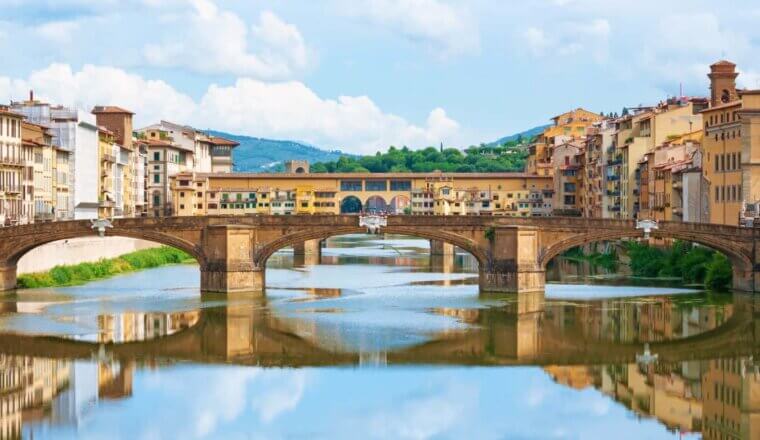
Where to Stay in Florence: The Best Neighborhoods For Your Visit
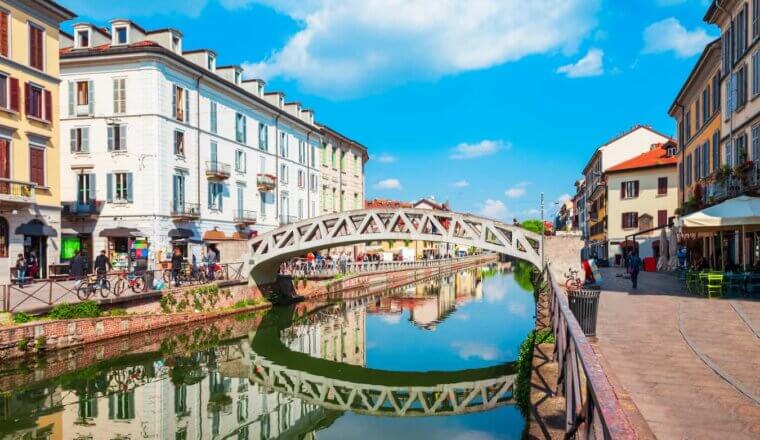
Where to Stay in Milan: The Best Neighborhoods for Your Visit
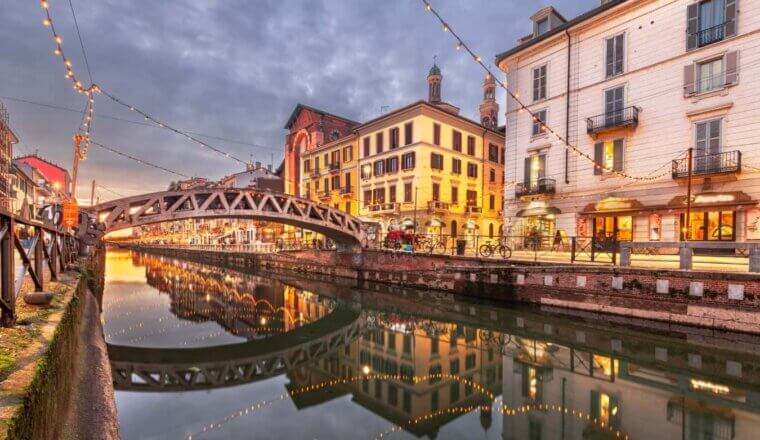
The 6 Best Hotels in Milan
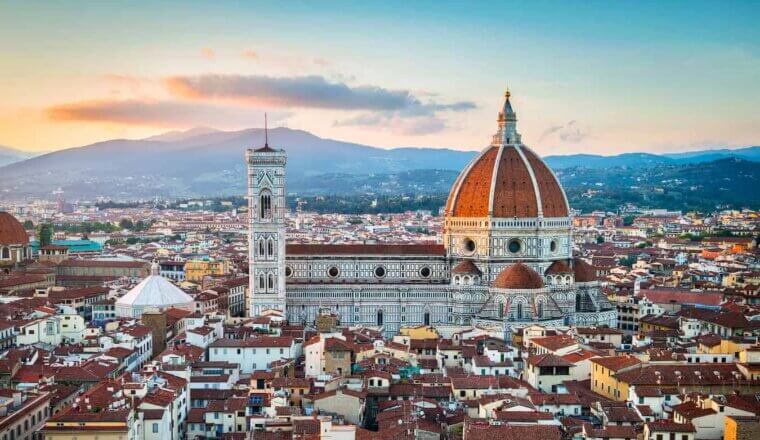
The Best Walking Tours in Florence
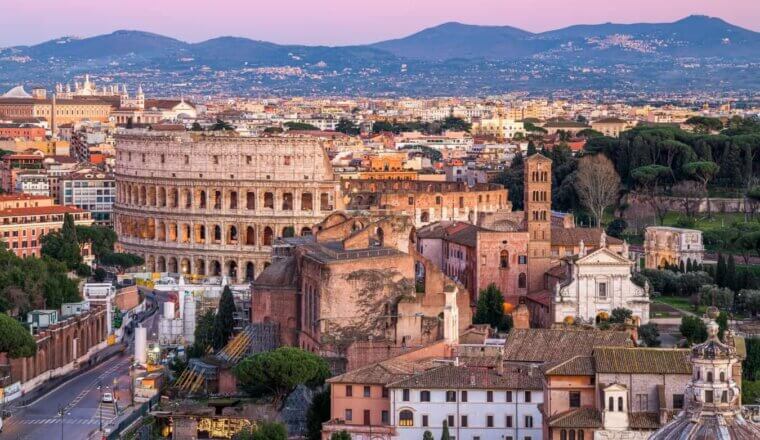
The 8 Best Hotels in Rome
Get my best stuff sent straight to you, pin it on pinterest.
- Where To Stay
- Transportation
- Booking Resources
- Related Blogs
- EN - English
- PT - Portuguese
- ES - Spanish
- How it works
- Become a Host
- Download the app
Top Destinations
- United States
- United Kingdom
What type of experience are you looking for?
- Non-Profit School
- Permaculture project
- Eco Village
- Holistic Center
- Guest House
- How Worldpackers works

Learn from the most experienced travelers of the community
Traveling with worldpackers, planning and budgeting for travel, make a living while traveling as a lifestyle, travel with worldpackers.
- Using Worldpackers
- Work exchange
- Social impact
Plan your trip
- Women traveling
- Budget travel
- Solo travel
- Language learning
- Travel tips
- Get inspired
- Digital nomads
- Travel jobs
- Personal development
- Responsible travel
- Connect with nature
Top destinations
- South America
- Central America
- North America
- More destinations
- WP Life WP Life
- Exclusive discounts Discounts
- Europe travel tips
Explore Italy on the cheap: your guide to budget travel!
Discover the best tips and tricks for budget travel in Italy! Learn how to find cheap accommodation, save on transportation, eat and drink on a budget, and enjoy activities without breaking the bank with our guide "Italy on the cheap"
Mar 29, 2024
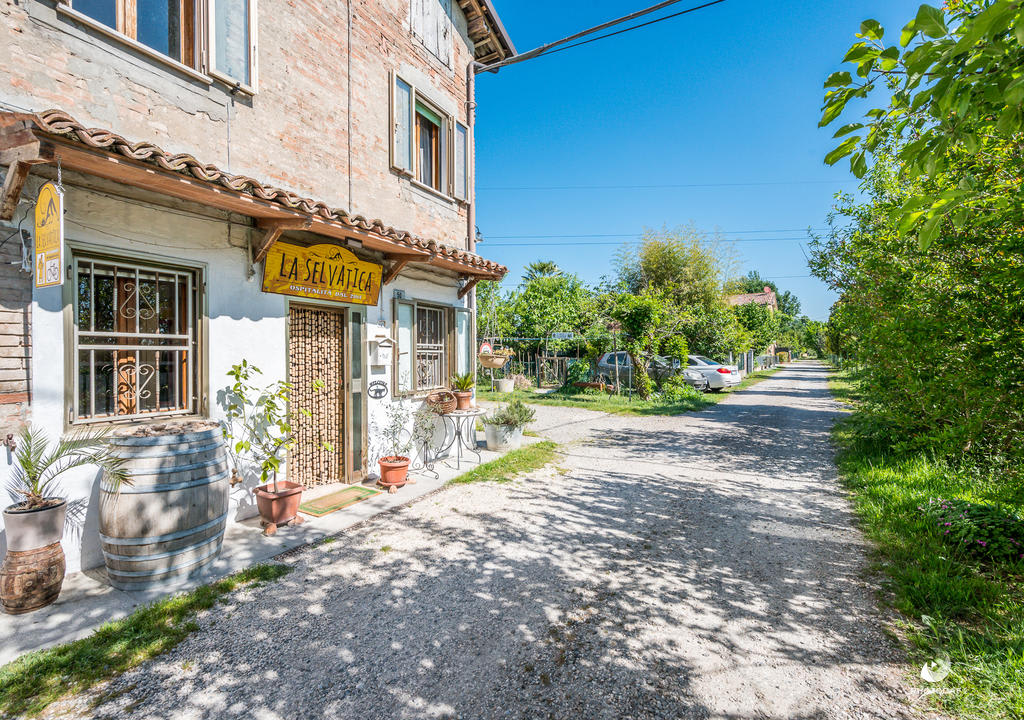
Though it may seem daunting, budget travel to Italy is achievable with the right preparation and knowledge of cost-effective options. With the right planning and knowledge of where to look for deals, you can explore all this amazing country offers without breaking the bank.
From finding cheap accommodation in Italy and transportation options, through eating and drinking on a budget while enjoying activities that won’t break your wallet - we've got everything covered with our guide: “ Italy on the cheap ”. So get ready for some serious savings as you discover one of Europe's most beautiful countries .
How to find cheap accommodation in Italy
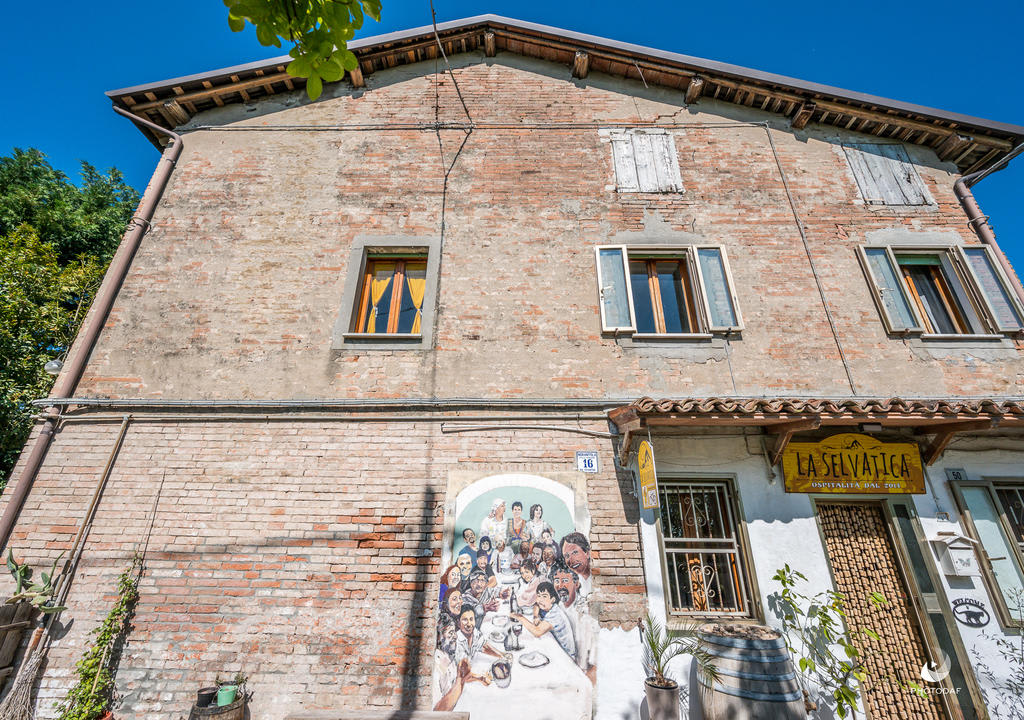
Worldpackers is a platform that connects travelers with volunteer opportunities around the world. It’s a great way to explore new places while making a positive impact on local communities and cultures.
Worldpackers offers plenty of opportunities for budget-minded travelers looking for cheap accommodation in Italy.
First, let's look at how Worldpackers works:
Hosts list their needs and what they can offer in exchange (usually free food or lodging). Volunteers put forward their applications, outlining why they reckon they'd be a decent choice for the role and furnishing details about themselves. Once the host accepts, volunteers can travel to their destination with all expenses paid.
There are countless volunteer positions available in Italy through Worldpackers – from teaching English or Spanish lessons to working on organic farms or helping out on a camping . You could even be an assistant chef and live in a 1000-year-old Tuscan Castle . No matter your skillset or interests, there’s sure to be something for you here.
Before booking your accommodation in Italy , it is wise to research the available deals, negotiate with hosts and look outside of major cities for cheaper prices; couchsurfing can also be an option. This is another great way to save money while traveling abroad.
- Also, take a look at: Teaching English in Italy: complete guide to travelers and Exploring agriturismo Italy: a journey into rural life .
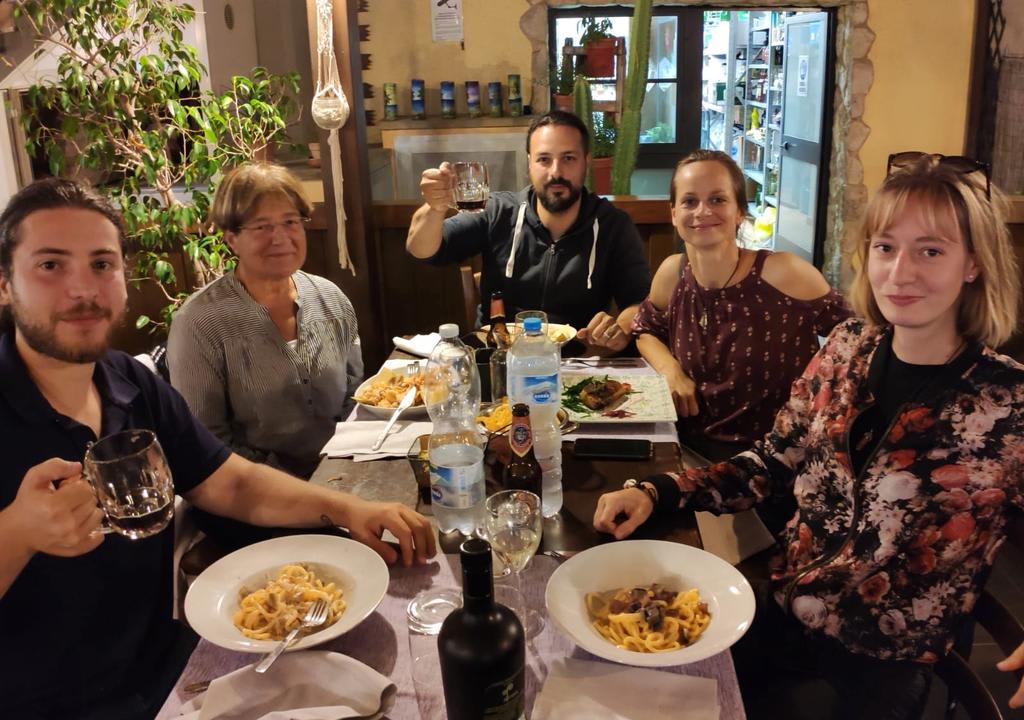
By taking advantage of all these resources, plus using other budgeting strategies such as cooking meals at home instead of eating out, you can find incredible accommodations without breaking the bank when traveling through Italy via Worldpackers.
Finding cheap accommodation in Italy is possible with a little research and creativity. Transportation costs can also be kept to a minimum by taking advantage of public transport options, car rental deals, and discounts.
Key Takeaway : Worldpackers is a great way to travel around Italy on the cheap , offering up volunteer positions with accommodation included. With some research and negotiation skills you can easily find an affordable place to stay while taking part in life-changing experiences.
Transportation in Italy on a budget
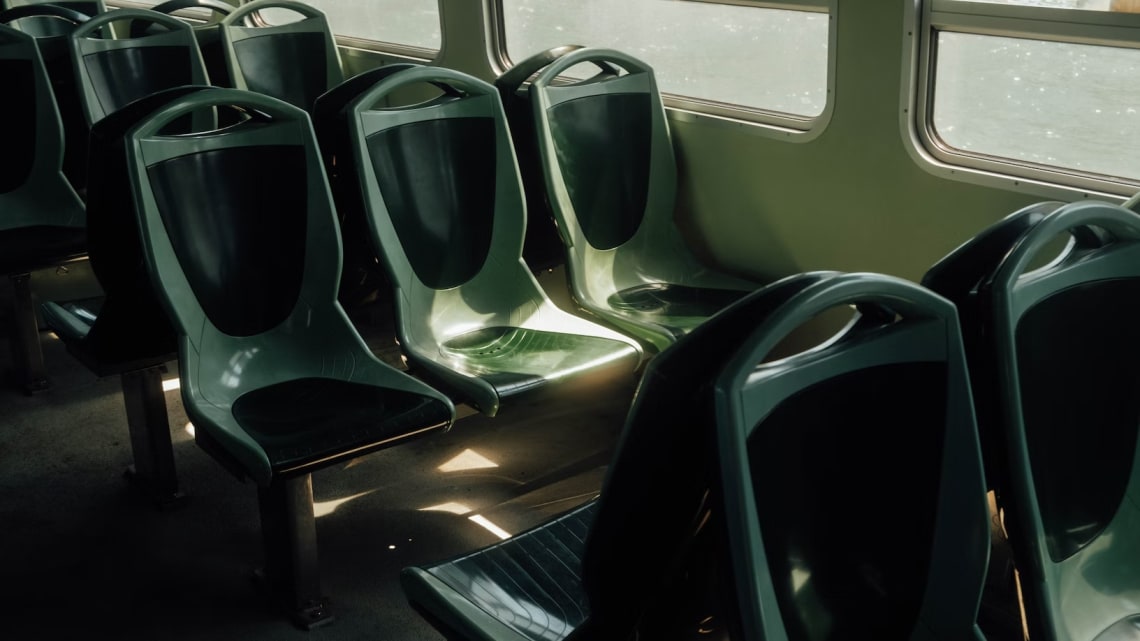
Public transport options and costs
Public transport is an economical way to get around when traveling in Italy. Depending on the city, various options are available, including buses, trams, metro systems and even boats.
Single-use tickets can range from €1.50 to €5, while daily passes usually cost between €4 and €15. It’s worth noting that some cities offer discounts for students or seniors so be sure to ask before buying your ticket.
Car rental deals and discounts
If you want more freedom when exploring Italy then car rental could be a great option. There are many companies offering competitive prices but it pays off to shop around as prices can vary greatly between providers. Many websites have comparison tools which make it easy to compare different deals quickly and easily – just remember that sometimes cheaper isn’t always better. Checking for discounts and promotions, such as long-term rate reductions or loyalty schemes, can help to save money over time.
Tips for saving on transportation costs
Planning ahead is key to saving money when traveling in Italy , enabling you to find the best deals and set an appropriate budget for transportation.
Plan to take advantage of the best bargains and prevent yourself from overspending during your journey. Researching public transport costs beforehand is also a good idea so you know what kind of budget you need to get around each day.
If renting a car, then try looking online for any discounts or promotions offered by local companies; these can often be found with minimal effort, but they can add up quickly if used correctly.
Finally, don’t forget about walking or cycling ; both are free activities that save money and provide an opportunity to explore at your own pace while taking in all the sights along the way.
Transportation in Italy on a budget can be made affordable and efficient with the right research and planning. Having determined how to travel economically in Italy, let us explore ways to savor the local cuisine without breaking the bank.
Key Takeaway : Traveling in Italy doesn't have to break the bank. You can get around on a budget by researching, looking for deals and discounts, and taking advantage of free options like walking or cycling. Be sure to shop around for car rentals as prices vary greatly between providers - it's worth putting in some extra effort here to save money.
Eating and drinking in Italy on the cheap
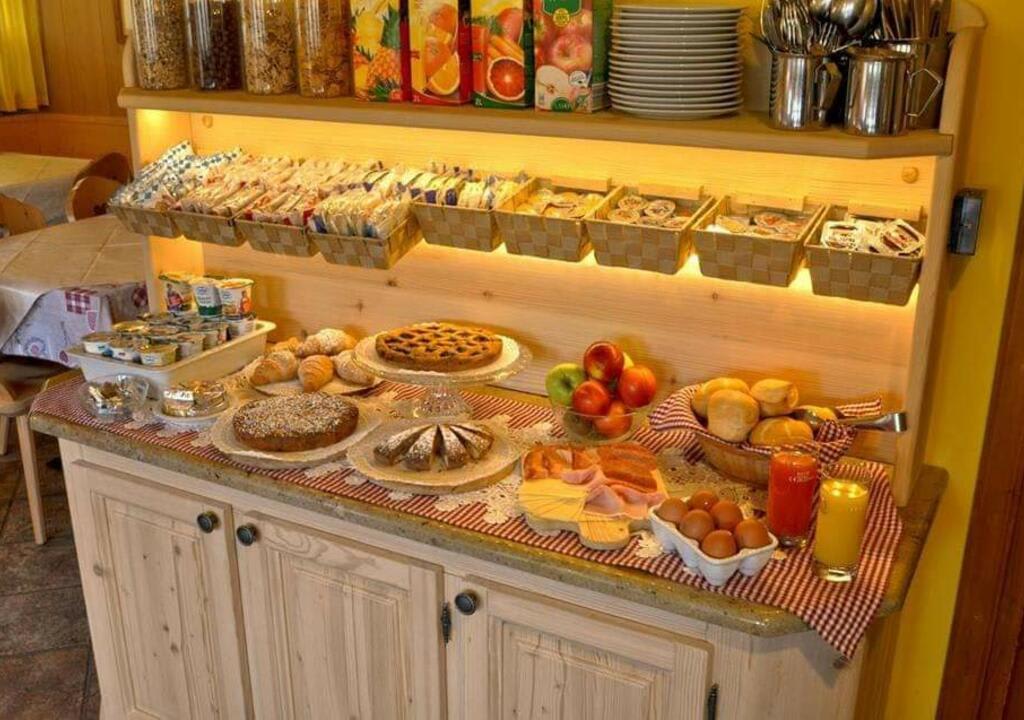
Grocery Shopping Tips and Tricks for Budget Travelers:
Eating out in Italy can be expensive, so grocery shopping is the way to go if you’re looking to save money on food costs while still enjoying delicious Italian cuisine. For a more budget-friendly option, visit local markets or street vendors instead of large supermarkets.
If you’re staying somewhere with a kitchenette , take advantage of it by stocking up on basic ingredients like pasta, canned tomatoes and olive oil. With these staples plus some fresh vegetables from the market, you can whip up a tasty Italian meal without breaking the bank.
For a delicious Italian dining experience without breaking the bank, trattorias are an excellent choice for traditional dishes like lasagna and spaghetti alla carbonara. These places usually have very reasonable prices compared to more upscale restaurants in touristy areas.
Another great option is pizza al taglio (pizza by the slice). This type of pizza joint serves slices of different pizzas sold by weight rather than individual pieces; they tend to be much cheaper than sit-down pizzerias but just as delicious.
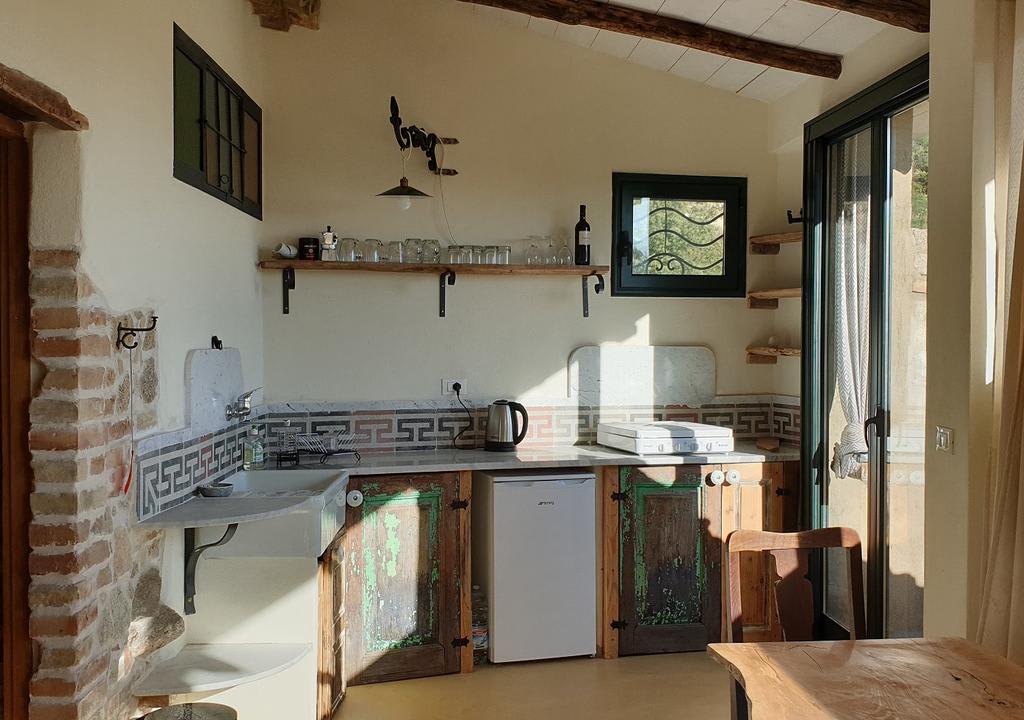
There are numerous cost-effective choices for wine aficionados seeking to save on their beloved tipple while journeying in Italy. One way is buying bottles directly from wineries; they often offer discounts if you buy multiple bottles or sign up for their mailing list online before visiting them in person. Before making a purchase, it is advisable to research reviews to ensure the quality of wine available from local stores and supermarkets.
With some savvy shopping and creativity, eating and drinking in Italy on the cheap is possible. Next, we'll explore activities in Italy that won't break your budget.
Key Takeaway : For budget travelers looking to enjoy the best Italian cuisine, grocery shopping at local markets or street vendors and dining in trattorias is a great way to get bang for your buck. Wine lovers can find good deals on bottles directly from wineries or stores, but be sure to read reviews beforehand, so you don't end up with vinegar instead of vino.
Activities to do in Italy on a budget

Numerous options are available when looking to enjoy Italy without spending a fortune. From free attractions and sightseeing opportunities around the country to outdoor adventures that won’t break the bank, travelers can have an amazing time without spending too much money.
For starters, Italy is home to some of the most beautiful architecture in Europe – and many of these landmarks are free. Stroll through Piazza San Marco in Venice or take a leisurely walk along the Spanish Steps in Rome; these iconic locations cost nothing but your time.
If you’re looking for something more adventurous , try hiking up Mount Vesuvius or exploring one of Tuscany’s vineyards. You can also find plenty of cultural experiences like attending open-air concerts or taking cooking classes from local chefs.
If you're looking to explore places away from the typical tourist traps, head to towns like Assisi or Siena for great deals on accommodation and food while still enjoying all that Italy has to offer. For example, many small villages host festivals throughout the year with live music performances and delicious regional cuisine at affordable prices – perfect for budget travelers.
And don't forget about beaches : if you're willing to venture away from tourist hotspots like Cinque Terre, you'll discover stunning coastlines with crystal clear waters just waiting for visitors.
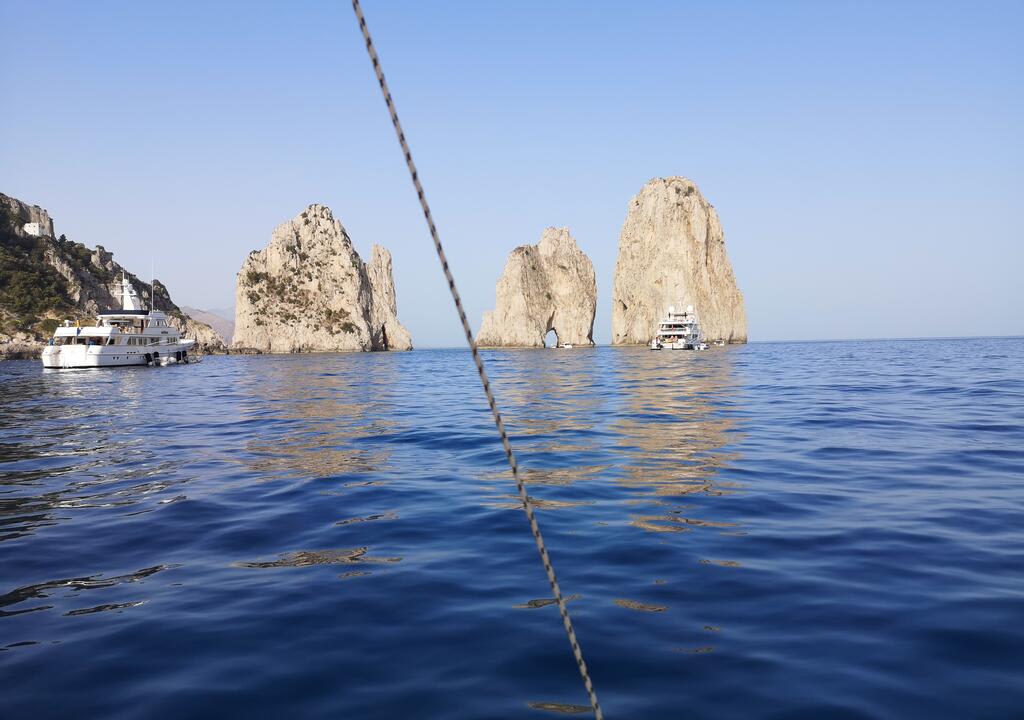
Finally, don't miss out on Italian nightlife either. Whether it's grabbing drinks at a local pub or hitting up clubs in Milan until dawn (or both.), there's no shortage of ways to let loose without breaking your wallet – just make sure not to overindulge too much so that you don't end up spending more than necessary.
Italy's storied past and dynamic culture make it a perfect destination for those seeking an unforgettable journey on a cheap . So pack your bags and prepare for an adventure unlike any other; travel doesn't have to be expensive as long as you know how to look beyond surface-level costs.
From free attractions to outdoor adventures, plenty of activities can be enjoyed in Italy without spending a fortune. With some exploration and pre-arrangement, it's achievable to devise an extraordinary excursion to Italy.
Key Takeaway : Italy is an amazing destination for budget travelers, offering plenty of free attractions, outdoor adventures, and cultural experiences like cooking classes and open-air concerts. From exploring iconic landmarks in Venice or Rome to discovering hidden gems off the beaten path, you can have a life-changing experience without breaking the bank - just remember not to overspend on nightlife.
Planning your trip to Italy on a budget
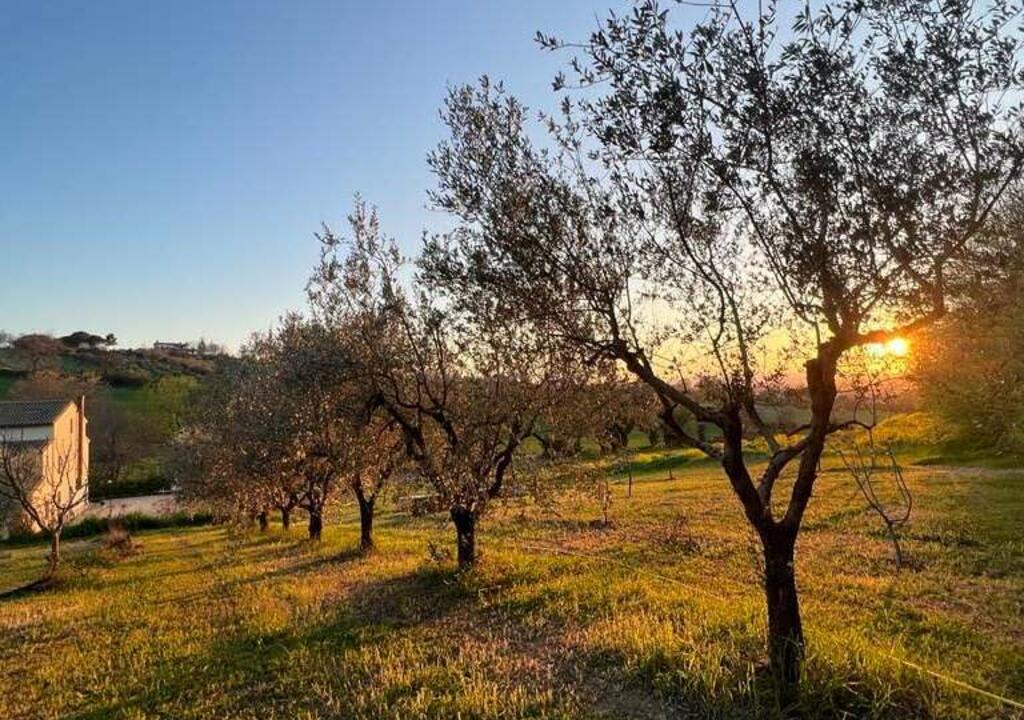
Planning a trip to Italy on a budget doesn’t have to be daunting. By doing your homework and being mindful of costs, you can experience Italy's best without going over budget. Here are some tips for getting the most out of your Italian adventure while keeping costs low.
Researching deals, discounts, and promotions:
Before booking anything, make sure to do your homework. Investigate potential travel savings by exploring travel sites such as Expedia or TripAdvisor for promotional offers.
Sign up for email alerts from airlines and hotels to know when they offer special deals. Also, consider signing up for loyalty programs with airlines or hotel chains – these can often provide additional savings over time.
Setting up an itinerary that tits your budget:
Once you’ve found some great deals on flights and accommodations , it’s time to plan your itinerary. Once you have decided which Italian cities to visit and for how long, it is time to research transportation options that are both convenient and cost-effective.
Consider taking advantage of regional train passes if possible; these can save a lot of money compared with buying individual tickets every time you move between cities or towns.
Strategies for sticking to your financial plan:
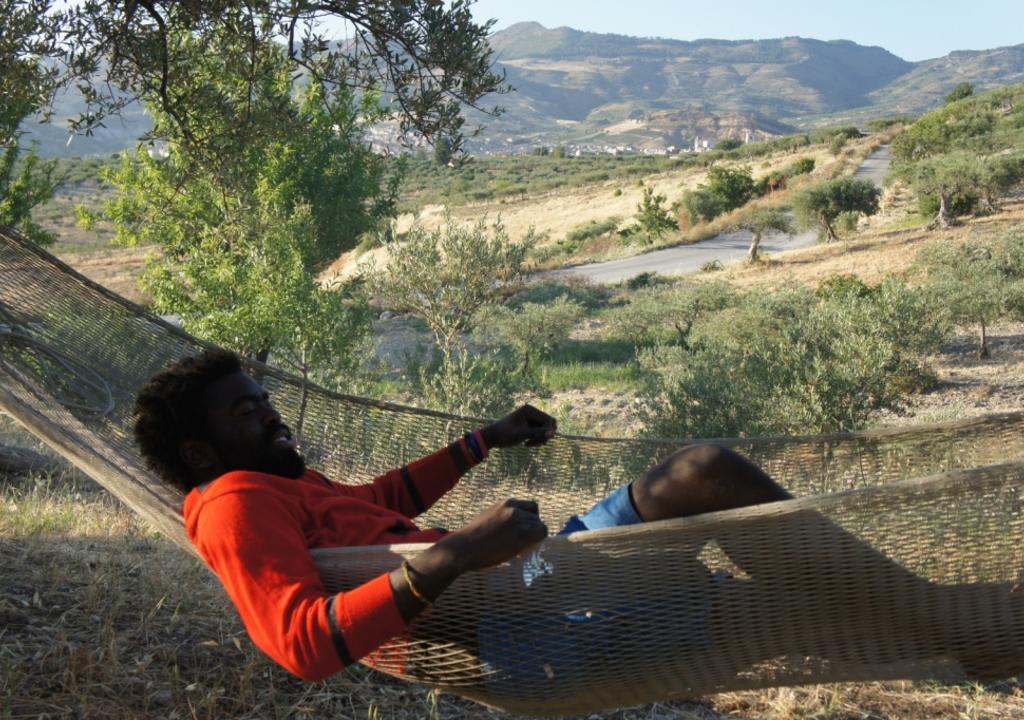
Once everything is booked, set yourself a daily budget before leaving home – then stick to it. You don't need expensive restaurants or activities every day. Check out local markets instead of fancy shops, walk around town rather than taking taxis everywhere etc.
Additionally, consider taking advantage of regional train passes if possible as this can save a lot of money compared with buying individual tickets every time you move between cities or towns.
Finally, make sure to take into account unexpected expenses like currency exchange fees or extra luggage charges when planning ahead financially.
Key Takeaway : With smart preparation and money management, you can still relish Italy's finest without emptying your wallet. Do your research for discounts and promotions, plan an itinerary that fits your budget, and don't forget to factor in unexpected costs such as currency exchange fees or extra luggage charges - it's all about being 'penny wise'.
FAQs about Italy on the Cheap
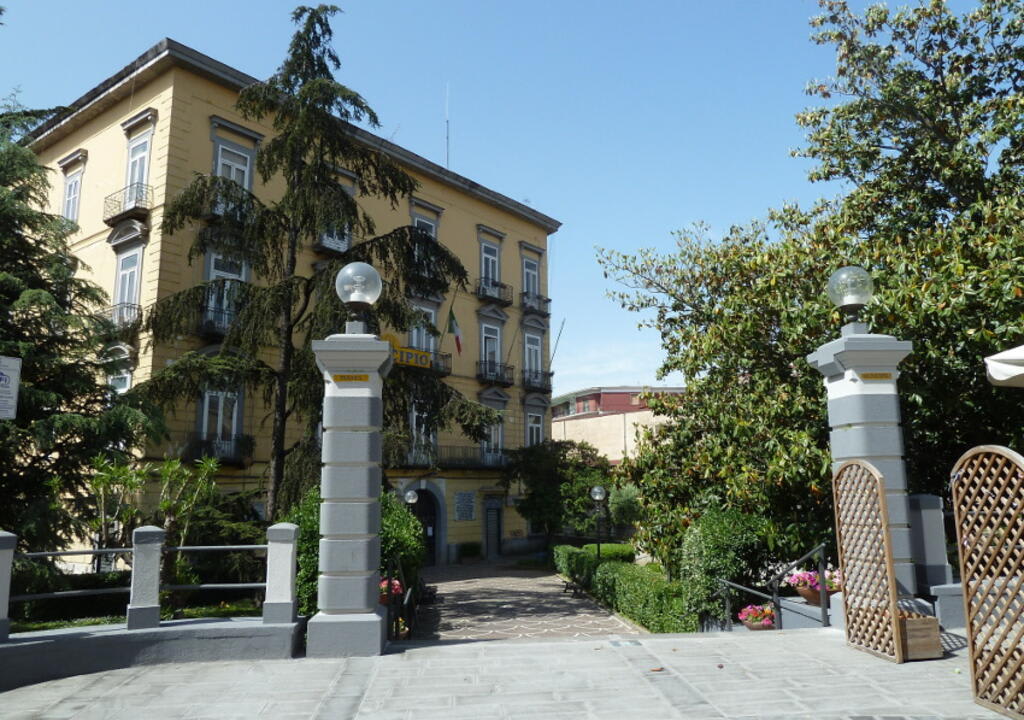
Is Italy considered cheap?
Italy is generally seen as an economical destination compared to other European countries. Prices vary widely depending on the region and type of accommodation you choose, but overall Italy offers good value for money. Accommodation options span from budget-friendly hostels to luxurious hotels, while food costs are comparatively lower than in other European nations. With careful planning, it is possible to enjoy a memorable Italian holiday without breaking the bank.
Is Italy cheap or expensive?
Italy is generally considered to be an expensive destination for travelers. Bigger cities, such as Rome and Milan, can be especially costly in comparison to other areas of Europe. Staying in budget hotels can be costly, with nightly rates often starting at €60 or more. However, there are ways to cut costs while touring Italy by opting for lodging outside major cities and taking advantage of any discounts offered at tourist sites. With some planning and research, it is possible to find budget-friendly options in Italy.
How can I enjoy Italy on a budget?
Exploring Italy on a budget is possible. You can save money by taking advantage of public transportation, using student discounts for attractions and events, staying in hostels or camping grounds instead of hotels, cooking your own meals whenever possible, and looking out for free walking tours. Additionally, you can search online for discounted activities such as cycling trips or food tastings. Thoroughly planning and researching can enable one to relish all Italy has without draining their wallet.
Is Italy cheap to live?
Living costs vary by location, yet Italy generally has lower expenditure than other European nations. Rent prices are relatively low and food costs can also be quite reasonable if you shop at local markets or cook your own meals. Traveling in Italy is a cost-effective option for budget travelers , with transportation prices lower than other parts of Europe.
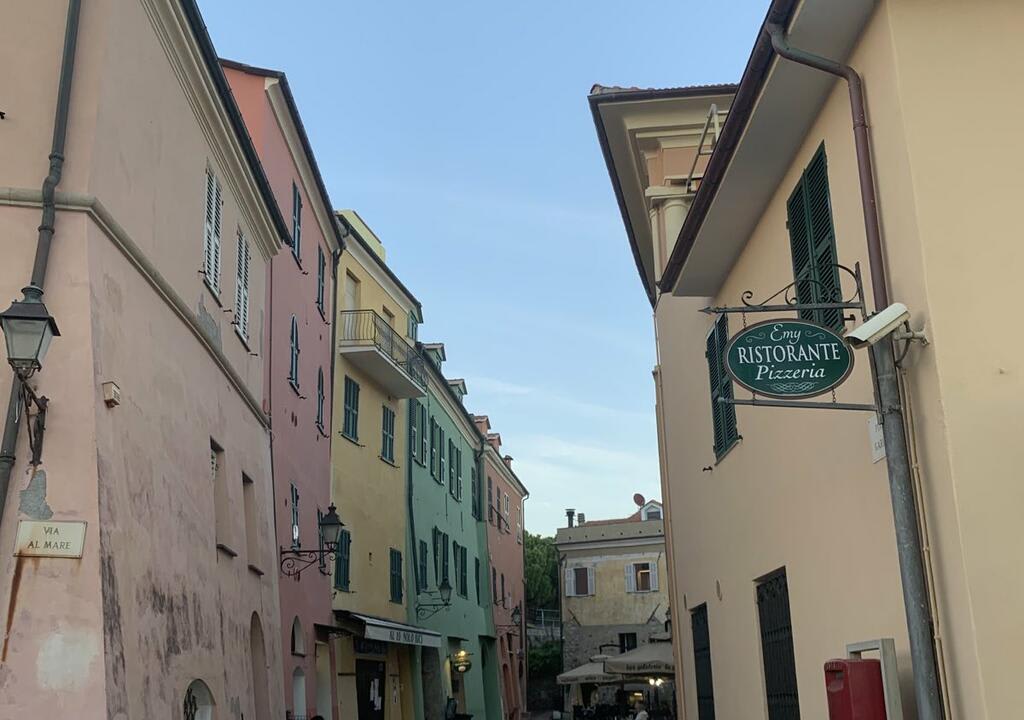
Italy is a beautiful country that can be explored on the cheap. With careful planning and budgeting, you can find great accommodation options , transportation deals, delicious food and drinks for less money than expected.
Affordable activities are plentiful in Italy, making it easy to explore the country without breaking the bank. Whether taking a boat ride down Venice’s Grand Canal or exploring ancient ruins like Pompeii – there are many ways to experience this amazing country without spending too much money. So don't let your budget stop you from enjoying everything Italy offers - explore “ Italy on the cheap " today.
Experience the world on a budget and make a positive impact! Join Worldpackers to volunteer in Italy while discovering new cultures, making meaningful connections, and living an affordable lifestyle.
Join the community!
Create a free Worldpackers account to discover volunteer experiences perfect for you and get access to exclusive travel discounts!
Juliana Marques
Editora-chefe de conteúdo na Worldpackers, viciada em mudar o cabelo e sair da zona de conforto. Ama conhecer diferentes perspectivas de vida, conversar e compartilhar experiências através da escrita.
Be part of the Worldpackers Community
Already have an account, are you a host, leave your comment here.
Write here your questions and greetings to the author
Apr 03, 2023
May 14, 2023
May 27, 2023
Apr 17, 2023
Apr 19, 2023
Abdelfattah
Apr 22, 2023
عفاف محمد موسي
May 05, 2023
Me halppppppppppppp you famli
May 10, 2023
Hola desde Ecuador
Hi from Ecuador, Quito!!!!
May 16, 2023
May 24, 2023
Jun 20, 2023
Italy is a land of diverse destinations, each offering its own unique charm. From the romantic canals of Venice to the breathtaking Amalfi Coast, the historical treasures of Rome to the cultural hub of Florence, and the picturesque countryside of Tuscany to the fashion capital of Milan, there is something for everyone. So glad to have found your channel, Mark.
Dec 22, 2023
Hi guys how is working this app ? I would to know please help me thank you 🙏❤️
first_name_5566793
More about this topic.

What is the average cost of a trip to Europe?
Germany on a budget: a guide with the best tips and the cheapest places to visit
Best way to travel europe: all you need to know to plan your trip.
How do Worldpackers trips work?
As a member, you can contact as many hosts and travel safely as many times as you want.
Choose your plan to travel with Worldpackers as many times as you like.
Complete your profile, watch the video lessons in the Academy, and earn certificates to stand out to hosts.
Apply to as many positions as you like, and get in contact with our verified hosts.
If a host thinks you’re a good fit for their position, they’ll pre-approve you.
Get your documents and tickets ready for your volunteer trip.
Confirm your trip to enjoy all of the safety of Worldpackers.
Have a transformative experience and make a positive impact on the world.
If anything doesn’t go as planned with a host, count on the WP Safeguard and our highly responsive support team!
After volunteering, you and your host exchange reviews.
With positive reviews, you’ll stand out to hosts and get even more benefits.
How to explore Italy on a budget

May 20, 2023 • 7 min read
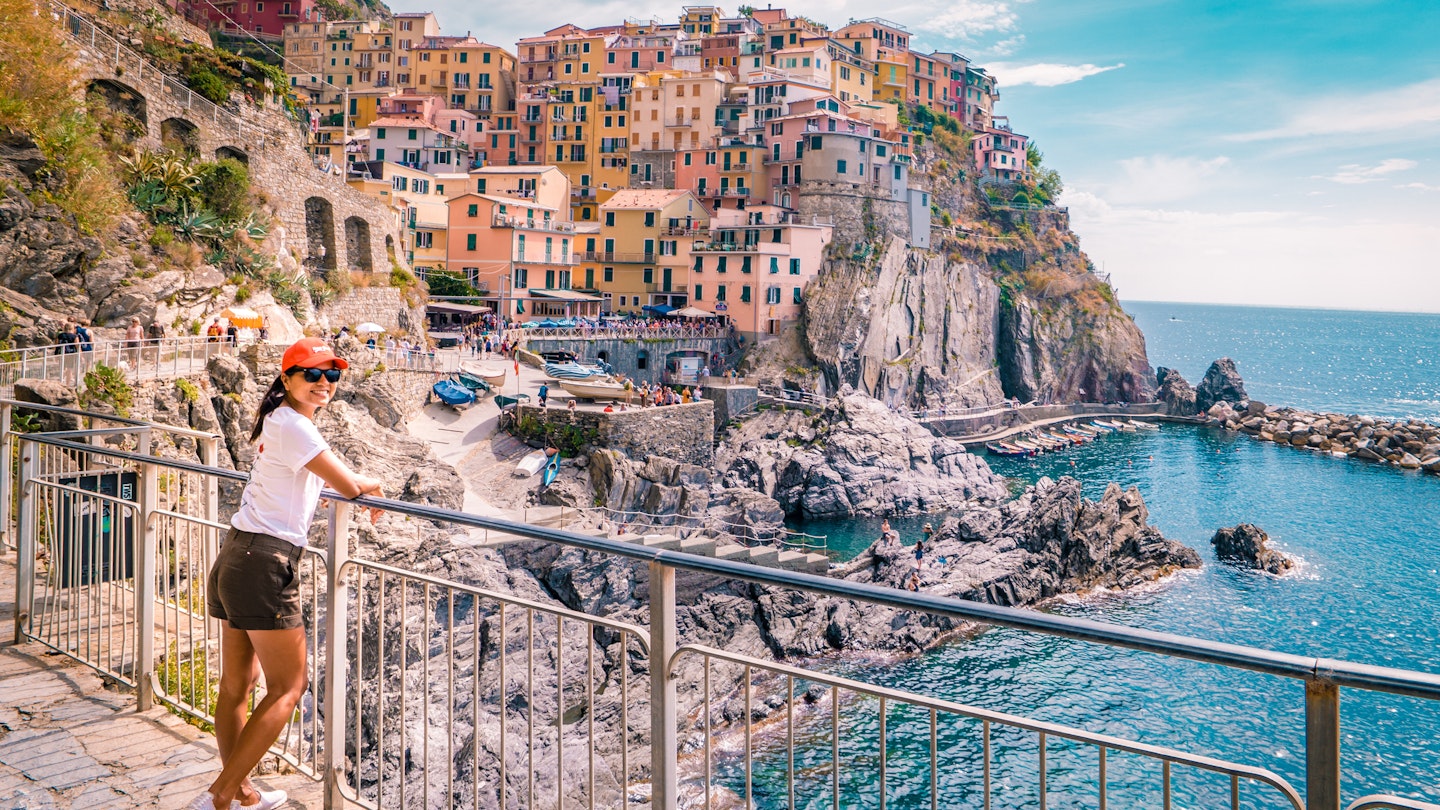
These top tips can help you travel on a budget in Italy © fokkebok / Getty Images
Whether you are looking for a Mediterranean escape, a road trip through hilly wine regions , or an awe-inspiring art-fuelled tour through medieval cities, Italy will not disappoint.
But with a long list of attractions – whether they're culinary , scenic, architectural, historic or cultural – and many variables, planning a budget journey through Italy can be tricky. Prices often vary from season to season , but also from cities to countryside, and from north to south. There are regions that have a well-developed tourist infrastructure with an endless offering of ticketed things to do and a range of services that cater to every pocket, and there are other, less visited areas that are yet to be affected by tourism flows and provide many opportunities for low-cost discovery.
Here’s your insider guide to Italian money matters, with a top tips to help you save a few euros as you travel through the 20 regions that compose this diverse peninsula.

Fly into secondary airports or enter Italy overland
Most foreign visitors will take a flight to reach Italy from abroad. Landing in secondary airports served by low-cost airlines can reduce your travel costs by a lot. You could fly into Bergamo to visit Milan , or check flights to Pisa or Bologna to get to Florence , for instance. Ryanair, WizzAir, EasyJet and Vueling all fly into Italy.
But flying isn’t the only way of getting to Italy. In 2021, a new high-velocity rail line connecting Paris to Milan and Turin was opened. It is now possible to travel with a Trenitalia train from the French capital into Italy for €69 (when booked in advance ).
Shoulder season is the best season
Traveling to Italy in May and June or in September and October offers the best balance between weather, costs, and things to do. The peak holiday season runs between July and August – this is when most Italians go on vacation, when prices skyrocket, when the heat is hard to bear, and when beaches are packed. Visiting the country before or after this period provides the best chances of having pleasant temperatures, finding deals, and avoiding crowds.

Ditch the car and move around with public transport
While it is true that a rental vehicle will allow you to visit rural and mountainous areas with ease, public transportation connects most cities and can get you around with a small budget. Not all public transit options are the same, however – high-speed trains are fast but can be costly if booked on the spot; regional trains are slower, but can cost less than half of their high-speed counterparts; buses are the cheapest option available, although not the most comfortable.
Let’s say you want to travel from Rome to Florence next week: a high-speed train will set you back approximately €45; doing so on a regional regional train will amount to €23; and traveling the same distance on a Flixbus coach can cost as little as €7.
Discounts are often available for train trips, if you know where to find them
Yes, high-speed rail travel is the most expensive form of public transport, but this is not always true. Booking your seat a few weeks in advance will get you reduced price tickets for both Italo and Trenitalia fast trains.
If you are planning to move around a lot by train it is worth considering purchasing a Trenitalia Pass , which will allow you to travel for multiple days everywhere in Italy starting from €129. Trenitalia also provides special offers for same day return tickets and weekend return tickets .
Look out for lunch deals in trattorias
Street food is a great way to cut food costs in Italy, but you don’t always need to give up on the pleasure of sitting down at a local restaurant table to save money. Many trattorias and osterias around Italy offer fixed-price lunch menus including a pasta dish, a second course, water, and wine for under €15. Look out for signs promoting a menù del giorno (menu of the day).
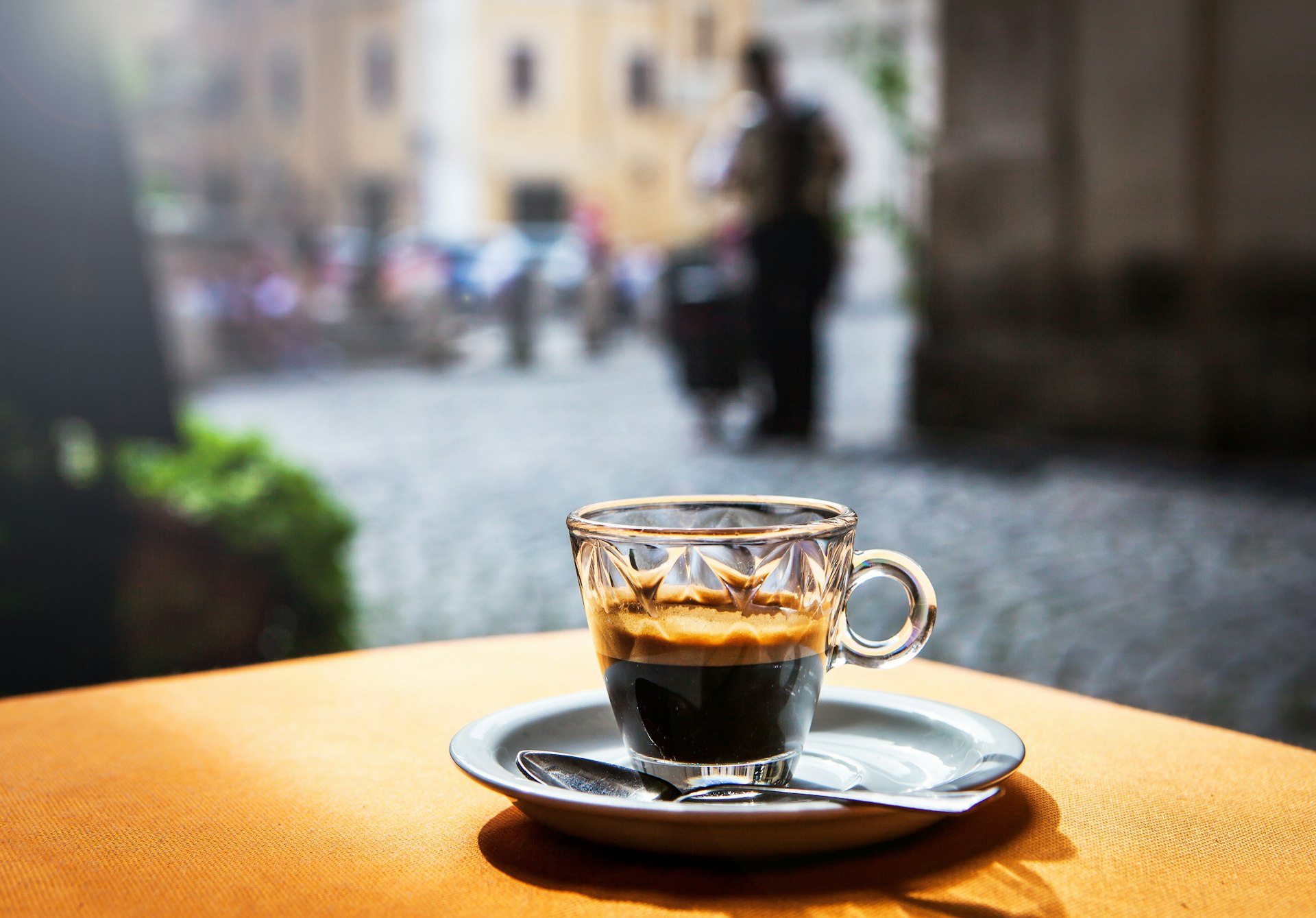
Stand up for your coffee
Italians stop at cafes multiple times a day to top up their caffeine levels. The espresso ritual doesn’t change throughout the country – a strong shot of coffee is typically had standing at the bar in a matter of minutes. Many cafes, especially in larger cities, will charge a service fee if you sit down for your coffee.
Avoid bottled water, especially in Rome
Tap water is drinkable in Italy – take a refillable bottle with you to save some cash and reduce your consumption of single-use plastics. This is especially easy in Rome – Italy’s capital has over 5000 drinking fountains known as nasoni (big noses) spread through the city. Check out fontanelle.org for a map of all the drinking fountains in Rome.
Plan a low season art tour
Italy’s endless art heritage attracts a constant flow of tourists year-round, but visiting during the winter will reduce your chances of finding yourself jostled in a crowd. Many art institutions also offer discounted tickets during the low season. For instance, an adult ticket for Florence’s Uffizi – one of Italy’s most visited museums – goes down from €25 to €12 between November 1 and February 28.
Go church hopping to admire the work of great artists
Museum tickets can quickly add up, but world-class art is not found in galleries alone. Italy has upwards of 100,000 churches on its territory and many of these religious structures contain exceptional icons of the country’s cultural heritage that can be admired free of charge. Caravaggio, Raffaello, Giotto, Lippi and Botticelli are just some of the names you can expect to encounter when entering churches in art cities like Rome and Florence.
Seek “free” beaches
Many public beaches in Italy are privately managed by businesses known as bagni that rent umbrellas and deckchairs to holidaymakers during the summer months. While this will guarantee a space on the sand for you to sunbathe in peace, it can set you back between €15 and €40 per day, depending on the location. To avoid paying for a spot on the beach, ask around for the nearest spiaggia libera (free beach), the coastal areas where access is free for all.
Walk a long-distance pilgrimage route
One of the most memorable experiences you can do in Italy is also one of the least expensive. Follow the footsteps of medieval pilgrims by hiking along one of the historic routes that are found throughout the country – the Via Francigena is the best known itinerary of this kind, running from Canterbury, England, all the way to Southern Italy, via Rome. Like on the Camino de Santiago, on the Via Francigena it is possible to sleep in monasteries and hostels that cater to modern-day pilgrims for a few euros per night. No time for hiking ? A similar route can be done by bike .
A guide to daily costs
- Espresso coffee: €1.20
- Bed in a hostel dorm: €25 to €50 per night
- Double room in an agriturismo (farm stay): from €80 per night
- High-speed train ticket from Florence to Milan: €56
- Urban bus or tram ride: €1.50
- Glass of Chianti wine: €5 to €8
- Dinner for two: from €50
- Margherita pizza: €6 to €8
- Aperitivo cocktail: €5 to €10
- Sandwich: €5
- Car rental: from €50 per day
- One liter of petrol: €1.80
- Bicycle hire: €12 per day
- Museum tickets: €10 to €20
Your average daily spend for visiting Italy will vary depending on how often you choose to move and eat in restaurants, what distances you decide to cover, and whether you are traveling with someone else, but you should account for at least €130 per day if you plan to include major sights in your itinerary. Cutting down costs, however, is possible with the following tips.
Explore related stories
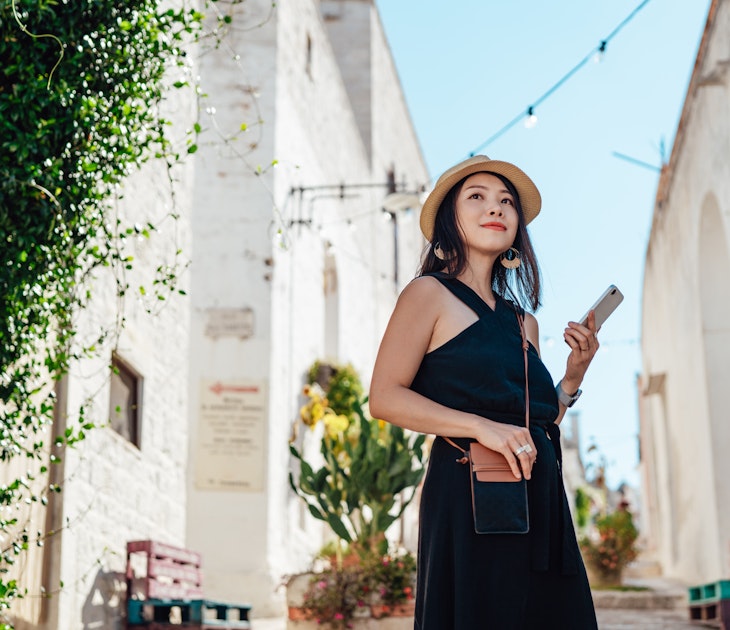
Budget Travel
Mar 26, 2024 • 6 min read
While on the rise in recent years, Puglia is still a relatively undiscovered destination for foreign visitors. Italians, though, have known for a very long…

Mar 17, 2024 • 7 min read
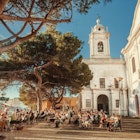
Jan 1, 2024 • 10 min read

Jun 16, 2023 • 7 min read
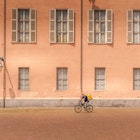
Apr 28, 2022 • 5 min read

Apr 28, 2022 • 8 min read

Feb 1, 2022 • 11 min read

Jan 27, 2022 • 7 min read

Feb 10, 2020 • 8 min read

Jan 29, 2020 • 9 min read
How to travel to Italy on a budget
Book your individual trip , stress-free with local travel experts
- roughguides.com
- italy-on-a-budget
Plan your tailor-made trip with a local expert
Book securely with money-back guarantee
Travel stress-free with local assistance and 24/7 support
written by Olga Sitnitsa
updated 20.12.2023
Discover the wonders of Italy on a budget with our in-depth travel guide. Find cost-effective ways to indulge in the beauty, culture and cuisine of this stunning destination. Here we share hints and tips on how to get the most out of your trip to Italy and ensure an unforgettable experience without compromising on your budget.
How much is a trip to Italy?
Cheap places in italy, where to stay in italy on a budget, find the cheapest time to go to italy, how to save on transportation, eat well on a budget in italy, free activities in italy, planning your trip to italy on a budget, tailor-made travel itineraries for italy, created by local experts.

8 days / from 2597 USD
Experience the hit TV show 'The White Lotus' in Sicily
Stay in beautiful Taormina with gorgeous views of Mount Etna and discover Sicily, including famous filming locations. Go on exclusive wine tastings, discover the Greek theater in Taormina with a private guide, visit other Sicilian towns and enjoy the crystal clear water on this week-long trip.

8 days / from 3228 USD
Enchanting Italian Lakes
Experience the picturesque lakes of Northern Italy, including Lake Garda, Como, Lugano and Maggiore; explore the charming Borromean Islands – former favourites of Ernest Hemingway – and stroll the romantic streets of Verona and Milan. All of this, and much more, with this self-drive trip!

16 days / from 3228 USD
From Venice to Florence: A Grand Tour of Northern Italy
From the atmospheric canals of Venice and the picturesque coastline of Cinque Terre, to the trendy designer boutiques of Milan and the Renaissance-infused streets of Florence, Northern Italy has plenty to offer. Experience it all with this comprehensive trip.
Tailor-made trips for Italy
The cost of a trip to Italy varies, allowing travellers to match the costs to their preferences. The average budget for a week-long visit can range from €1,300 to €2,600 per person, excluding airfare. This amount includes accommodation, meals, local transport and entertainment.
Luxury travellers seeking a premium experience can incur costs of over €4,300 per person, while budget travellers who prefer more economical options can target between €40 and €80 per day. Costs depend on factors such as accommodation, meal preferences and the inclusion of excursions. Thoughtful planning will allow you to optimise your budget and at the same time explore Italy's rich offerings.
Planning a trip to Italy? Create an unforgettable itinerary with the help of our Italy travel experts .

Fountain Neptune in Bologna © Shutterstock
Italy is renowned for its diverse regions and abundance of historic cities, many of which are on almost any bucket list of attractions. However, it is worth noting that Rome , Milan or Venice will always be more expensive cities to visit because of their legendary heritage and enduring interest. Here are some alternative Italian destinations to consider when planning a holiday to Italy on a budget.
Bologna, Emilia-Romagna
Located in the heart of Emilia-Romagna , Bologna is a charming city that is renowned not only for its architectural splendour but also for its budget appeal. Its lively streets are a vibrant mix of culture with a thriving student community, giving the city a youthful energy that further contributes to its reasonable prices.
From charming trattorias to quaint markets, Bologna presents itself as a convenient budget-friendly destination where affordability and the richness of Italian life blend effortlessly.
Lecce, Puglia
Lecce , in the south of Puglia , is famous for its quaint old buildings and historic atmosphere. Compared to the more expensive towns in the north, it is also a more economical option for travellers. Stroll through its old streets, soak up the stories, and you'll find a place that requires less expense but has a lot of charm.
With winding roads, old architecture and the laid-back atmosphere of southern Italy, in Lecce you'll get the historical beauty without the excessive costs, making it an ideal destination for travellers looking to save money.
Sorrento, Campania
Situated along the stunning Amalfi Coast , Sorrento offers a refreshing twist on being surrounded by its affluent neighbours. Although the region often shows off its reputation as an upscale destination, Sorrento offers a more budget-friendly coastal holiday.
Unlike the luxurious facades of neighbouring Positano, this charming town combines affordability with coastal appeal. Here, azure vistas and lemon-scented streets welcome visitors without the high price tag, making it the perfect golden means for those looking to enjoy the beauty of the coast without emptying their wallets.
Palermo, Sicily
Palermo , located in the heart of Sicily , beckons with a tapestry of cultural richness and historical treasures. Being the capital of this charming island, there are many reasons to visit Palermo , as its streets tell a story of diverse influences, reflected in its architecture and lively markets.
Compared to its mainland counterparts, Palermo allows travellers to immerse themselves in history, enjoy local flavours and wander the ancient streets without breaking the budget too much.
Matera, Basilicata
Nestled in the embrace of Basilicata , Matera beckons with its unusual cave dwellings and timeless architecture. Its fame is based on this ancient troglodyte settlement, a UNESCO gem embedded in the region's rugged landscape. Attracting tourists looking for historical wonders, Matera retains its charm without costing a fortune, being a more accessible gem among Italy's popular destinations.
Here you can wander through narrow streets and limestone caves, discovering a preserved past that whispers stories of resilience. Matera's appeal lies not only in its historical riches but also in the fact that it offers an authentic experience at a fraction of the cost of more bustling tourist centres.
Perugia, Umbria
In the heart of Umbria , Perugia is a captivating blend of medieval splendour and vibrant cultural festivities. Its ancient architecture tells of a bygone era, inviting you to explore the narrow lanes and historic squares.
Surrounded by rolling hills, this city exudes a serene charm while being a budget-friendly jewel in Italy's panorama. With a backdrop of lively festivals and arts events, Perugia offers a holiday in Italy on a budget that contrasts with the expense of the big Italian cities.
Rady for your adventure? Check our fully customisable Italy itineraries .

Sorrento in Italy © Shutterstock
Choosing an economical accommodation option when planning a holiday to Italy on a budget is one of the keys to saving money. Fortunately, there are plenty of budget accommodation options in Italy .
Italy boasts many charming B&Bs, especially in small towns and the countryside. These accommodation options often offer a cosy atmosphere, personalised service and hearty breakfasts, all at reasonable prices. Ideal for travellers looking for a comfortable but inexpensive stay with a touch of local hospitality.
Popular in cities and tourist centres, hostels are a budget option aimed at backpackers and budget travellers. Hostels with shared dormitories or private rooms provide a social atmosphere, making them a great place to socialise and share travel tips while keeping costs low.
Guesthouses/Pensions
Guest pensions and guesthouses are a compromise between hotels and hostels. These establishments, often run by families, offer a more intimate holiday experience. While offering private rooms, they retain affordability and a welcoming atmosphere, making them an excellent choice for those travelling in Italy on a budget.
Agriturismos
One of the unique yet budget-friendly accommodation options in Italy is agriturismos. Usually located in remote areas, these farms often offer the opportunity to immerse yourself more deeply in the local culture, enjoy home-cooked food and explore the countryside. Agriturismos are known for their accessibility and authentic connection to the region chosen for exploration.
Nature lovers can choose to stay at a campsite, which are numerous in Italy, especially in picturesque areas. From coastal areas to mountain retreats, campsites allow you to enjoy Italy's natural beauty at minimal cost. Many campsites offer basic facilities, making them an affordable choice for outdoor enthusiasts.
For some budget options to stay in Italy, see our guides to the best places to stay in Venice , the best places to stay in Milan and the best places to stay in Rome .

Scenic sight in Lecce, Puglia (Apulia), southern Italy © Shutterstock
Choosing the right season to visit Italy will also help you save money. It should be taken into account that the most financially advantageous time to travel is outside of the peak tourist season when the demand for accommodation, excursions and meals decreases.
Consider travelling to Italy during the winter period (December to March) as this time can be more budget-friendly. While some regions, especially in the north, may not experience particularly attractive weather, temperatures remain relatively mild in southern areas such as Sicily and parts of the Amalfi Coast. There are also fewer tourists in winter, resulting in lower accommodation prices.
Travelling during shoulder seasons can also be quite profitable. Spring (April to mid-June) and early autumn (September to October) are considered shoulder seasons, when the weather is pleasant and the number of tourists is lower than during the peak summer months.
Apart from choosing the season, there are also a few tips to help you travel in Italy on a budget:
- Regardless of the season, travelling midweek (Tuesday to Thursday) is often cheaper than at the weekend. Airfare and accommodation prices may be lower, and attractions may be less crowded.
- Prices tend to rise during major holidays and events. If possible, plan your trip to avoid peak times such as Christmas, New Year, Easter and major local festivals.
- Being flexible with your travel dates will help you find the best deals. Use flexible date options when booking flights to find the cheapest days to fly.
Also, for a deeper understanding of the seasons and weather in Italy, read our comprehensive guide to the best time to visit Italy .

Palermo, Sicily © Shutterstock
Italy, with its rich cultural heritage, beckons travellers to explore its diverse regions and picturesque landscapes. While the country's appeal is undeniable, the costs involved can affect the overall experience. Here are some tips for saving money on transport in Italy.
Cheap flights to & around Italy
Discovering the charms of Italy often starts with finding affordable airfares. Being flexible with your travel dates and booking well in advance can help you find good deals. Consider low-cost airlines in Europe, which can be a cost-effective alternative to traditional carriers.
Cheap car hire in Italy
Exploring the Italian countryside or travelling to less touristy regions can be conveniently done by renting a car in Italy . To save money on car hire, compare prices at different rental agencies and book your car in advance. Local car rental companies can offer competitive prices, and choosing a pick-up and drop-off location in the city centre can contribute to overall savings.
Italy train passes
Travelling by train is an essential part of the Italian experience. Consider the regional train passes for specific areas to save money on travelling in certain regions. Booking tickets during off-peak hours and buying them well in advance can help you get discounted fares, especially on high-speed trains.
Italian buses
Long-distance buses operated by companies such as FlixBus and Megabus are an economical alternative to travelling by train. Meanwhile, city buses are a budget-friendly option for travelling around the city.
Public transport in cities
Italian cities often sell passes that provide unlimited access to public transport, which is very convenient if you visit the city frequently. In addition, by choosing to walk or cycle around the city you will not only enhance your cultural experience but also save a little money.

Matera, Italy © Stefano_Valeri/Shutterstock
Famed for its delicious cuisine, Italy doesn't have to be a burden on your wallet. Dive into the country's culinary riches while keeping your budget in check with these savvy tips:
- Shop at local markets and grocery shops: Local markets offer fresh produce, cheeses and cured meats at a good price. You can also pack a picnic in the grocery shops inexpensively or prepare simple meals in apartments with a kitchen.
- Choose trattorias and osterias: Favour trattorias and osterias over upscale restaurants. These charming eateries often serve authentic, locally inspired dishes at a lower price than tourist-orientated establishments.
- Pay attention to the daily specials and lunch menu: Benefit from the daily specials and lunch menus offered by many restaurants. This is a common practice in Italy, allowing you to enjoy delicious meals at reduced prices during certain hours.
- Explore street food: Explore Italy's diverse street food scene. From pizza by the slice to regional specialities such as arancini or panzerotti, street vendors offer tasty options at an affordable price.
- Avoid tourist hotspots: Dine away from the tourist spots where prices tend to be inflated. Walk a little further into neighbourhoods to discover hidden gems that are cherished by locals and offer authentic dishes at lower prices.

Perugia Italy © Shutterstock
With abundance of things to do in Italy , you will have many opportunities to immerse yourself in its beauty withoutspending a fortune. Here are some delightful free activities to make the most of your holiday in Italy on a budget:
Join a free walking tour
Many cities in Italy offer free walking tours led by knowledgeable locals. These tours introduce the history, architecture and hidden attractions of the city while allowing you to set your own budget for tips.
Enter museums for free
Some museums in Italy offer free admission on certain days or times. Research the museums you plan to visit and take advantage of these opportunities to experience Italy's rich art and history without spending a euro.
Enjoy street festivals
Experience the lively atmosphere of the street festivals that often take place in Italian cities and towns. Whether energetic parades or cultural celebrations, these events offer an opportunity to immerse yourself in local traditions and enjoy entertainment - all without having to buy tickets.
Soak up the magnificent scenery
Italy is considered one of the most beautiful countries in the world for a reason, as its landscapes are an unrivalled masterpiece of nature. Whether you're strolling through historic cities, wandering along coastal paths or travelling through the countryside, the breathtaking scenery is completely free to discover. Admire the beauty of the Amalfi Coast , the rolling hills of Tuscany or the stunning lakes in the north of the country.
Visit world-famous churches
Italy is home to awe-inspiring churches and cathedrals, many of which allow free entry. Explore the grandeur of St. Peter's Basilica in Vatican City or marvel at the intricate details of the Florence Cathedral. These sacred sites offer a glimpse into Italy's religious and architectural heritage at no cost.

Piazza San Pietro in Vatican City © Shutterstock
Planning a trip to Italy on a budget can be a daunting task due to the abundance of opportunities this truly majestic country has to offer. This is where our tailor-made travel service come to your rescue.
You can choose from our customisable Italy itineraries or contact our Italy local travel experts who will take into account all your wishes and preferences and create a unique trip customised for you.
I you prefer to plan your trip yourself, get a copy of The Rough Guide to Italy and make sure to read our I taly travel tips .
Related articles from the blog

Online editor at Rough Guides, specialising in travel content. Passionate about creating compelling stories and inspiring others to explore the world.
- Authentic Experiences
- Amalfi Coast
- Emilia-Romagna
- Inspiration
- Travel Advice
- Travel Tips
Planning your own trip? Prepare for your trip
Use Rough Guides' trusted partners for great rates
Travel advice for Italy
From travel safety to visa requirements, discover the best tips for traveling to Italy
- Eating and drinking in Italy
- How to get to Italy
- Getting around Italy: Transportation Tips
- Shopping tips for Italy
- Sports and Outdoor activities in Italy
- Travel Tips Italy for planning and on the go
- Best time to visit Italy
- How to spend 7 days In Italy - 8 unique itineraries
- The Best 10-Day Italy Travel Itinerary
- How To Spend 14 Days In Italy - 5 Unique Itineraries
- How to get from Rome to Florence
Find even more inspiration for 35 here
Ready to travel and discover italy, get support from our local experts for stress-free planning & worry-free travels.
- Where to stay
- Itineraries
- Travel advice

How to Travel to Italy on a Budget
This post contains affiliate links, for which I may earn a commission if you make a qualifying purchase.
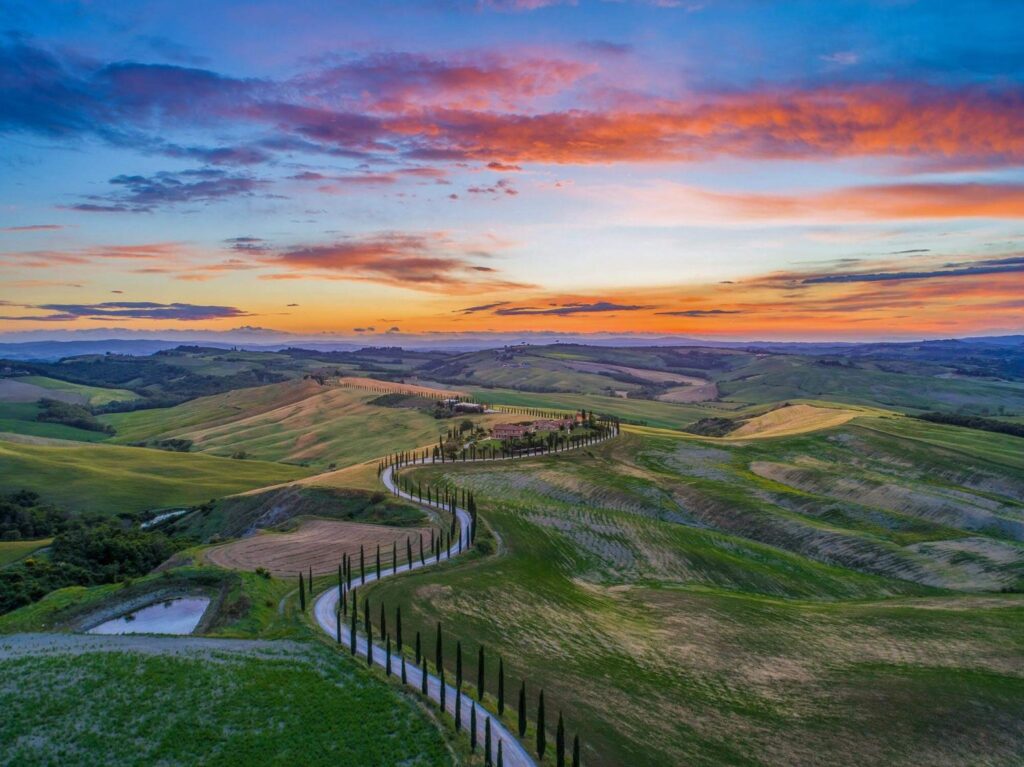
Sharing is caring!
Italy is on the top of so many travelers’ bucket lists, and between its ancient history, famous art, and great food, it’s easy to see why. And while Italy is not the most expensive vacation, the cost of accommodations, food, transportation, and activities can definitely add up if you’re not careful. How much does an Italy trip cost anyway?
If you think that dream trip to Italy is out of your budget, these ideas will help you save money while still having the trip you always imagined. In this article you’ll find all the tips you need to plan an amazing trip to Italy on a budget.
How Much is a Trip to Italy?
I’ve asked my friend and fellow Italy lover Vanessa to share her best tips for how to travel to Italy cheap. So how much does a trip to Italy cost? The answer is it will vary depending on your travel choices. These are the tricks Vanessa used to backpack around Italy with her four kids for an entire month without breaking the budget – though that wasn’t her first visit and certainly won’t be her last. Vanessa will cover budget-friendly transportation options to and around Italy, how to save money on Italy trip accommodations, how to find cheap eats in Italy and more.
Want her expert guidance in planning your trip to Italy? You can get it all right here in her awesome 10-day Italy itinerary ! She gives you the skinny on the tours you need to take, the places you need to stay and (of course) the gelato you need to eat. Grab your copy here.
Don’t have time to read a bunch of reviews and blog posts? Here are our top picks for visiting Italy:
Get an Easy Italy Itinerary
Need a quick day-by-day, open-and-go itinerary for Italy? This guide does the work for you!
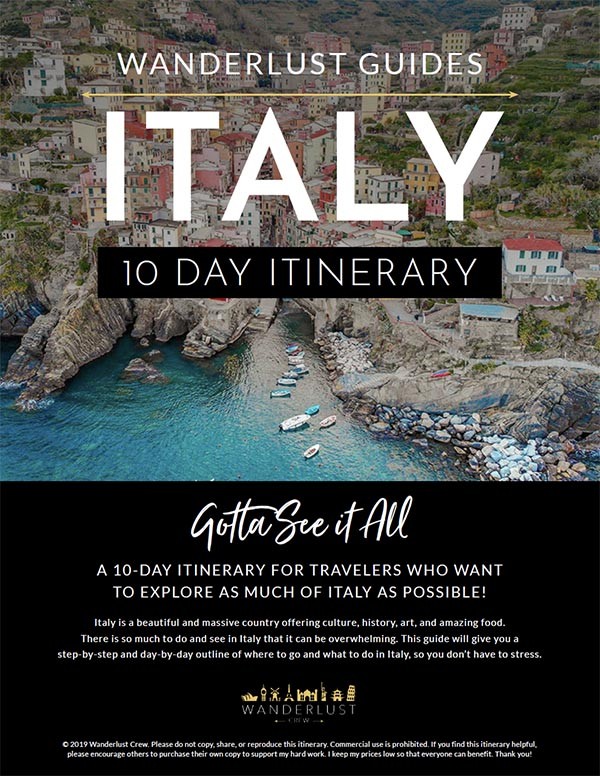
Awesome hotels in Italy
- Rome : Hotel Artemide
- Venice : Palazzo Madonna
- Florence : Hotel Santa Maria Novella
- Amalfi Coast: Hotel Villa Garden
- Cinque Terre : Il Sogno di Manarola
- Tuscany : Agriturismo Farm Stay
Fantastic tours in Italy
- Rome Vespa Tour
- Venice Walking Tour & Gondola Ride
- Tuscany Tour from Florence
- Pompeii with an Archaeologist
- Cinque Terre Boat Cruise
Renting a Car in Italy?
If you want to see the Italian countryside, I recommend you drive yourself. We prefer to use Rental Cars and Expedia Cars . We have had no issues with them and have been able to find the best prices available. Be sure to read these tips for renting a car in Italy .
Book a photoshoot
We always love to book a photoshoot when we’re traveling. As a mom, it’s tough to get in photos since I’m always behind the camera. We use Flytographer to capture our memories. You can get $25 off your shoot by booking at this link or using code FAMILYVOYAGE.
Be sure to buy travel insurance to protect yourself and your vacation expenses! Compare the top companies here to find the right plan for you.
If you are traveling to Italy from the USA, the cheapest way to get there on a paid ticket is to use Skyscanner to book a flight. Check various dates and several cities in Italy to find the best deal. Traveling during the off seasons, during spring and fall, often have cheaper prices too. Even better, open a Chase Sapphire Preferred , American Express or Capital One Venture X credit card to earn points for your daily spending! The sign up bonus is enough to cover your round-trip ticket and the points can transfer to nearly a dozen different airline partners so you can be sure to find an awesome points redemption. You can use PointsYeah to get ideas for some creative point transfers to maximize your value. If you’re planning a budget family trip to Italy, be sure to check out the best credit cards for travel with a family .
Vacationing in Italy can be as cheap or as expensive as you make it. There are many ways to travel Italy on a budget from booking lodging outside the city to taking walking tours to eating at grocery markets.
Traveling Italy by train is more cheap and convenient than by car. In fact, traveling by car can be quite expensive for tourists.
Budgeting for a trip to Italy depends on many factors, such as where you will stay, how you will travel and how often, access to a kitchen for cooking meals, etc. I recommend you create a budget based on the amount you are willing to spend, then make your travel plans accordingly.
How to find cheap flights to Italy
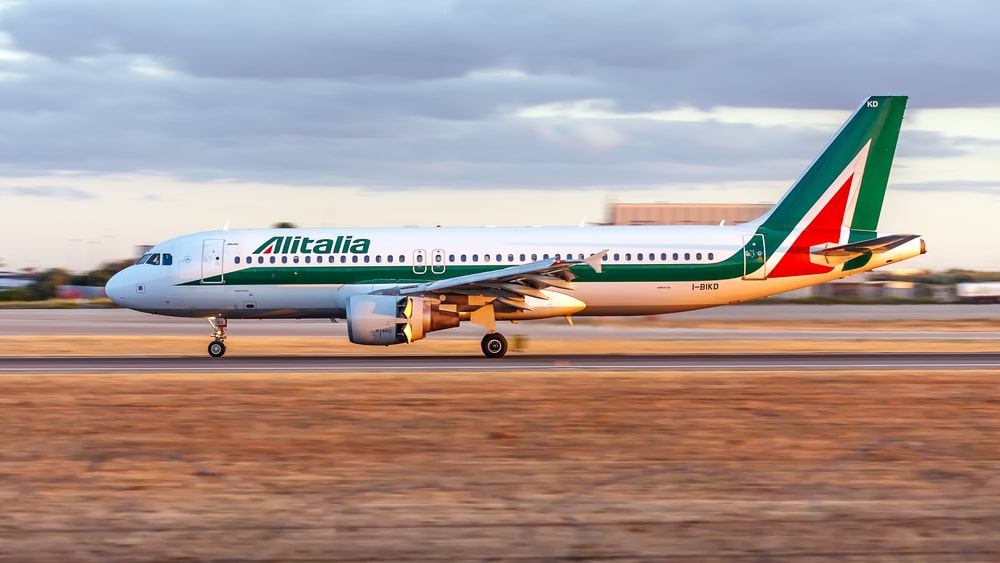
One of the biggest ways to plan a cheap trip to Italy is to get a good deal on flights. Flights will generally be cheaper during the off-season, like fall and spring, and flying in mid-week, rather than the weekend, can also save you a lot of money. Those are the best times to travel to Italy cheap. It’s always good to be flexible with your dates if possible – sometimes incredible sales pop up!
For a cheap way to travel to Italy from the USA, look at all the major airports in Italy rather than restricting yourself solely to the city you want to visit. Many cities are just an inexpensive train ride away from each other, so flying into Milan and then taking the train to Venice, for example, may be much more cost-effective, and if you can fit that into your schedule, it’s a great way to see more of the country.
I recommend checking Skyscanner for ticket prices for the cheapest way to get to Italy. You can check the cost to travel to Italy by searching entire months to find the cheapest dates. You can set your destination to the entire country of Italy to see where the most economical routes are from your home airport. Click here to try it out – in my experience the web browser interface works better than the app.
Award travel is also an amazing way to get to plan a trip to Italy on a budget. Depending on the exact route you’re looking for, you can snag an award ticket to Italy for as little as 24,000 points plus taxes – no joke . I strongly recommend opening either the Chase Sapphire Preferred or Reserve – they have great sign up bonuses and the Ultimate Rewards points you earn can transfer to almost a dozen partner airlines. You can also opt for an American Express card that earns Membership Rewards or a Capital One Venture X card.
Then hop into the Daydream Explorer and see what your options are! Having flexible dates and destinations within Italy can dramatically cut your flight costs. Just be sure to keep an eye on taxes, as some carriers pass on hefty fees for award tickets.
Cheapest way to travel in Italy
You can save a lot of money on your Italy vacation by being smart with your transportation options. The good news is that train travel in Italy is excellent and affordable. You can get almost anywhere by train quickly and efficiently. See all the schedules and prices here.
Many people will tell you to buy a rail pass to save you the hassle of booking separate train tickets, but if you know where you’re going ahead of time, purchasing individual tickets is easy, and can actually save you a lot of money if you’re willing to do the cost comparison ahead of time. Another great way to save on the Italian trains is by using the regional trains vs. the high-speed trains.
Your experience traveling Italy by train will be much more pleasant if you minimize your luggage. Hopping on and off the train with a 50lb suitcase will make you crazy! Be sure to read this packing list to make sure you bring what you need without overdoing it.
How to travel Italy on a budget by car
If you’re traveling with a family or want flexibility to travel beyond the train routes, renting a car doesn’t have to be expensive. It’s often ideal to just rent a car for several days at a time rather than for your entire trip to Italy. For instance, you could rent a car when you’re leaving Florence and drop it off in Rome after a few days of exploring the Tuscan countryside. Click here to check prices for your dates.
Choosing the right car for your needs is important. While you may be tempted to save money by picking the smallest car, be sure there’s enough space for your luggage (another reason to pack light!). If you’ve never driven a manual transmission car before, you have two options: either pay a premium for an automatic transmission, or save money by learning to drive manual before your trip.
Driving in Italy can be expensive in some important ways and quickly blow your trip budget. The most significant unbudgeted expense for many visitors is traffic tickets! Many Italian cities and towns don’t allow visitors to drive in the ZTL – Zona Traffico Limitato . Every time you cross the line, you’re subject to a fine (often automatically photo-enforced). By avoiding city driving and being extremely careful at times when you don’t have an option, you can keep your “ZTL budget” in check.
Don’t miss these important tips for renting a car in Italy – they’ll save you money and stress . I promise!
Some premium travel-focused credit cards like the Chase Sapphire Reserve and Capital One Venture X also include primary rental car insurance as long as you reject all coverage offered by the car rental company. If you have a different credit card, be sure to check the rules – many specifically exclude Italy.
More basic credit cards offer rental car coverage that is secondary, meaning your normal auto insurance provides the first line of coverage; be mindful of filing claims that can increase your auto insurance premium in the long run (especially if you have it bundled with your home owners insurance).
If you’re only interested in exploring the city centers or taking train-friendly day trips, you can skip the car altogether.
Traveling to Italy on a budget: Cheapest places to stay in Italy
Staying at the most popular locations in Italy like Rome, Venice, Florence, Cinque Terre, and the Amalfi Coast, are not going to be cheap. Don’t be afraid to explore other, lesser-known parts of the country to stay within your budget for an Italy trip.
Italy offers a huge range of accommodation styles – you can choose from hotels, vacation rentals and even agritourismos . To maximize your budget while also having a unique visit, I recommend mixing a few different types of stays into your itinerary.
As you plan your itinerary, just be sure to factor in transportation costs. Staying in a place that’s too far off the train routes will force you into renting a car, which may wind up costing more in the long run.
Read more: Where to go in Italy with kids
How to save on accommodations: Best places to stay in Italy on a budget
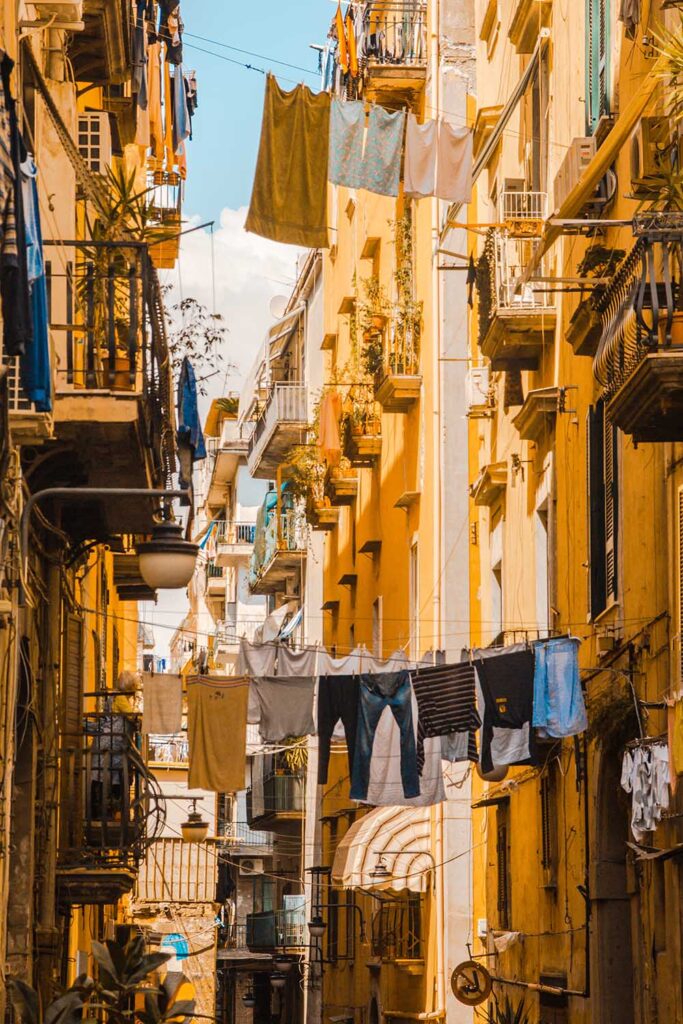
If you’re trying to plan an affordable tip to Italy, accommodation is probably where you’ll need your biggest savings. The price difference between a luxury hotel and a small vacation rental can be in the hundreds and even thousands of dollars.
My best tip is to consider staying outside the city center, while still factoring in your transportation needs. The closer you get to the more touristy part of the cities, the more expensive hotels and vacation rentals will be. It may be a hassle to trek into the city each day, but you’ll also get a more authentic experience during your stay. Having more locals and fewer tourists near your accommodations may also mean better, and more authentic food.
Be sure to factor in the cost of local transportation to your budget. That includes transportation from the train station (with all your baggage in tow) in addition to daily transportation to tourist sites. If you’ll be arriving or departing by plane in a given city, check out the cost of ground transportation to the airport. Many airports in Italy are quite far from the city center, and if your accommodation is far away in the opposite direction you might obliterate your savings completely if you need to take a taxi because you have a lot of luggage.
You can use this handy map to find convenient places to stay in Italy on a budget:
Even better, you can use credit card points to stay for free at beautiful hotels in the city centers. Whether you transfer points from your Chase Sapphire Reserve credit card or Chase Sapphire Preferred , or use points earned on the World of Hyatt credit card directly (or both!) you’ll be able to book amazing properties without spending a dime. It’s the best way to snag a free hotel in Italy! Popular options that are a great value include Hyatt Centric Murano Venice, Hyatt Centric Milan Centrale and The Tribune in Rome.
Here’s a concrete example: If you stay at the Hyatt Centric Murano Venice during most dates November through March, the welcome bonus from any one of the credit cards linked above will cover you for 5 nights with no out of pocket cost.
Another option is the IHG One Rewards Premier credit card (or its business counterpart). The IHG family includes everything from reliable Holiday Inn to stylish Hotel Indigo to luxurious Intercontinental. There are 20+ hotel options to choose from all around Italy, and once you’ve held this credit card for a year you’ll receive a certificate for another free night even beyond what you earn through the welcome offer and daily spending.
Where to find cheap food in Italy

One of the biggest draws of Italy for many people is the food! From pasta to panini to pesto to Pannacotta to pizza, Italian food is incredible, and there are so many great places to eat in Italy without blowing your budget. You’d be surprised and what amazing food you can even discover at the grocery store. Eating frugal, but tasty, is a great way to plan a cheap Italy vacation.
The best way to avoid overpaying for food is to get away from the highly trafficked tourist areas. A restaurant with a view of the Colosseum in Rome is going to cost a lot more than one several blocks away. Watch out for a coperto charge, which is an extra cost for sitting in the restaurant to eat. It’s usually only a few Euros per person, but it can really add up, especially if you have a big group. The coperto charge will usually be listed on a menu, but be sure to ask if you’re not sure.
You can always pop into a forno, or bakery, for pastries or a slice of focaccia or pizza for only a few Euros. If you’re traveling with kids, this will be the easiest and most budget-friendly way to feed the littles an I promise you won’t be missing out because this stuff is delicious.
Another way to travel cheap in Italy is to drink tap water. As a tourist, you will generally automatically be given bottles of drinking water, but if you’re comfortable with tap water, then go for it.
Read more: Must-Know Italy Travel Tips to Plan Your Dream Trip
How to save on activities in Italy
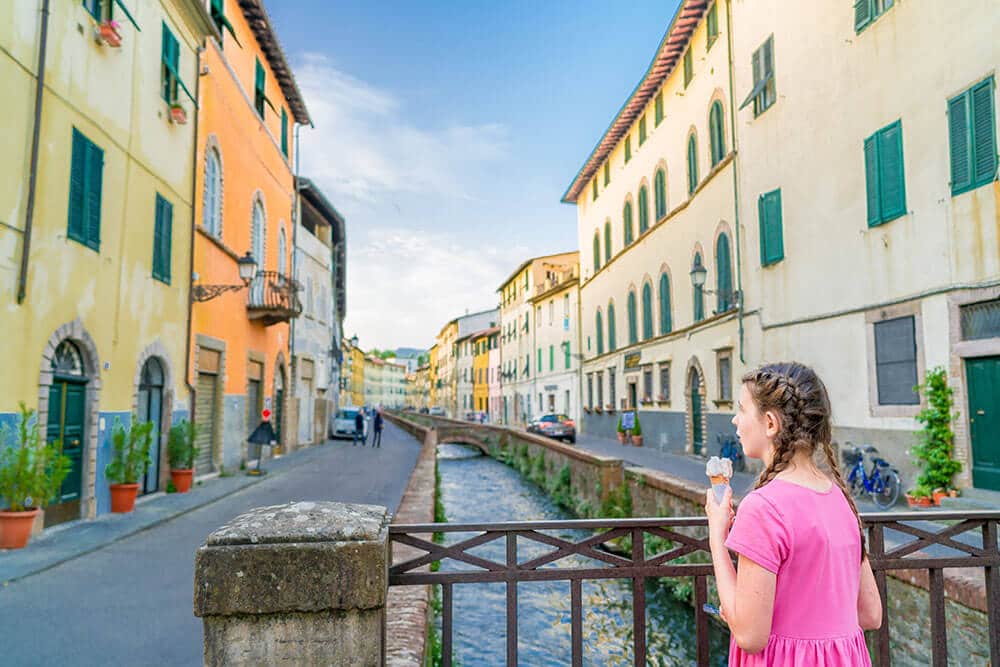
There are a lot of tour options in Italy that can be a great way to see the country, but they do come at a cost, especially if you do several. It’s easy to explore Italy on your own without a tour guide. And even if you do want a tour guide, many cities in Italy offer free walking tours .
There are also a lot of great free and cheap online museum guides that will walk you through Italy’s most famous museum and offer descriptions of many works of art.
How to go to Italy for cheap: Italy travel insurance
Especially in this day and age, travel insurance is extremely important. No matter how diligent you’ve been in planning a budget-friendly trip to Italy, it would be terrible to lose the money you’ve laid out for advance bookings and deposits!
A premium travel credit card like the Chase Sapphire Reserve provides excellent coverage for things like trip interruption and lost luggage at no additional cost. There’s also a small amount of medical coverage.
Squaremouth is a great platform to compare travel insurance policies from top-level providers. We’ve used it for years to get the right plan for each trip! Check out their site for full information on coverage options .
Planning your budget trip to Italy
What is the cost of a trip to Italy? I recommend writing up your budget before planning your trip. Knowing exactly what you have available to spend will help you as you book your transportation, accommodations, activities, and even thinking about where and what you plan to eat. The great thing about Italy is that you don’t need to have a luxury trip to experience a beautiful, authentic Italy.
Don’t miss these additional resources as you plan your trip to Italy:
- Renting a Car in Italy: La Dolce Vita on Four Wheels
- Where To Go In Italy With Kids [& Important Planning Tips]
- Fall capsule wardrobe for travel: what to pack for Italy in October
- 23 Must-Know Italy Travel Tips to Plan Your Dream Trip
About Vanessa Vanessa Hunt is the voice behind Wanderlust Crew and I Heart Italy . She has spent months at a time backpacking around Europe with her four kids and currently calls California her home (again).
What to read next
1 thought on “how to travel to italy on a budget”.
I loved traveling to Italy – and one thing we love to do when traveling as a family is to find books for the kids to read before we go.
Leave a Comment Cancel reply
Save my name, email, and website in this browser for the next time I comment.
This site uses Akismet to reduce spam. Learn how your comment data is processed .

Italy on a Budget: How to Save Without Sacrificing Experience
As I sipped my perfectly frothy cappuccino in a quaint café just steps away from Rome’s bustling Piazza Navona, I marveled at how this enchanting country could be savored even on a shoestring budget. Italy, with its symphony of exquisite flavors, ancient ruins, and Renaissance art, often carries the myth of being costly. Yet, here I am, about to spill the secret espresso beans on how to relish the Italian dolce vita without breaking the bank.
Book Now: Rome: Vatican Museums, Sistine Chapel, and Basilica Tour

Embrace the Art of Aperitivo
One of my favorite Italian customs is ‘aperitivo’ – an early evening tradition that combines drinks with snacks, often enough to fill you up for dinner. Cities like Milan, Turin, and Florence offer a plethora of bars where a single drink purchase grants you access to a buffet spread of pizzas, pastas, olives, and more. It’s not only economical but also a fantastic way to mingle with locals and savor a variety of Italian delicacies.
Accommodation: Think Outside the Hotel Room
Bypass the traditional hotels and go for alternative accommodations. Agriturismo (farm stays), affittacamere (room rentals), and monasteries offer unique lodging at a fraction of the cost. For instance, I once stayed at a working vineyard in Tuscany, waking up to serene vineyard views that didn’t come with a hefty price tag. Utilize platforms like Airbnb or Booking.com to find the best deals, and consider staying slightly outside the city centers where prices drop considerably.
Transportation: Get Around Smartly
Transport can eat up a budget quickly, but not if you travel smart. Italy’s regional trains and buses are an economical alternative to the faster, pricier options. Planning ahead can save euros and headaches – tickets are cheaper when purchased in advance. And remember, Italy is a haven for scenic walks and bike rides, so consider renting a bicycle or lacing up your walking shoes to soak in the sights at your own pace.
Divine Dining: Eat Like a Local
Dining in Italy is a heavenly experience and doesn’t have to cost an arm and a leg. Opt for trattorias and osterias, family-run establishments that serve up homemade dishes for less than a restaurant. My tip: look for menus written by hand. It often indicates a seasonal and reasonably priced menu. Also, venture to local markets, pick up some fresh produce, and have a picnic in one of the country’s many picturesque spots.
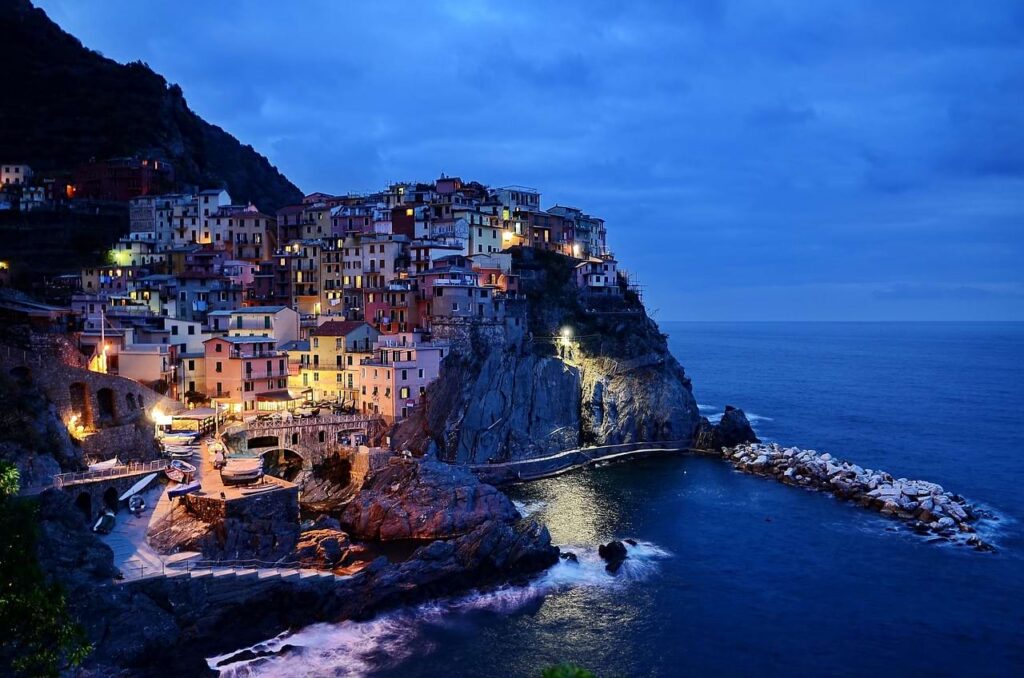
Sightseeing: Culture on a Coin
Italy is an open-air museum, and many of its treasures are free to admire. From the Pantheon in Rome to the piazzas of Venice, the country’s architecture and ambiance don’t cost a dime to enjoy. For paid attractions, look for city passes and combo tickets that offer discounts for multiple sights. And don’t forget about the first Sunday of the month, when many state museums and sites are free to enter.
Stay Connected: Wi-Fi over Data
Roaming charges can be exorbitant, so I always make sure to turn off my data upon landing. Instead, I rely on the ample Wi-Fi hotspots available in cafes, museums, and public spaces. If you need data, consider purchasing an Italian SIM card for the duration of your trip. It’s significantly cheaper and keeps you connected without the shocking bills.
Enjoy the Great Outdoors
Italy’s landscapes are a masterpiece, and exploring them doesn’t cost much. Hiking the cliff-side paths of Cinque Terre, strolling through the olive groves of Umbria, or basking in the sun on the Amalfi Coast’s free beaches—nature’s beauty is Italy’s most generous gift to a budget traveler. I often find that some of my most cherished experiences in Italy are those that didn’t require an entrance fee.
Shopping in Italy can be tempting with its fashion pedigree. However, you don’t have to visit the designer boutiques to take a piece of Italy home. Local markets and thrift stores offer unique finds at bargain prices. And for an authentic souvenir, I love picking up local food items—like a bottle of olive oil or some handmade pasta—which are delicious, affordable, and carry the essence of Italy.
Learning and Leisure
Italy is a place where you can enrich your mind without thinning your wallet. Many churches, including Rome’s St. Peter’s Basilica, are free to enter and are treasure troves of art and history. Take advantage of the free walking tours often available in major cities; they’re a great way to learn the local history and get insider tips from knowledgeable guides.
The Italian Social Scene
One of the greatest pleasures in Italy is the art of doing nothing – la dolce far niente. Spend your afternoons lounging in a piazza, people-watching, or enjoying a leisurely stroll. The vibrancy of Italian life is all around and participating in it doesn’t cost a thing. Socializing with the locals can also lead to invitations to home-cooked meals or gatherings, which are priceless experiences that embody the Italian spirit of hospitality.
Festivals for Free
Throughout the year, Italy bursts into celebrations with numerous festivals and events. From Siena’s Il Palio to Venice’s Carnevale, these festivals are often free and are a fantastic way to immerse yourself in Italy’s rich culture and traditions. Plan your trip around these events, and you’ll be rewarded with unforgettable memories.
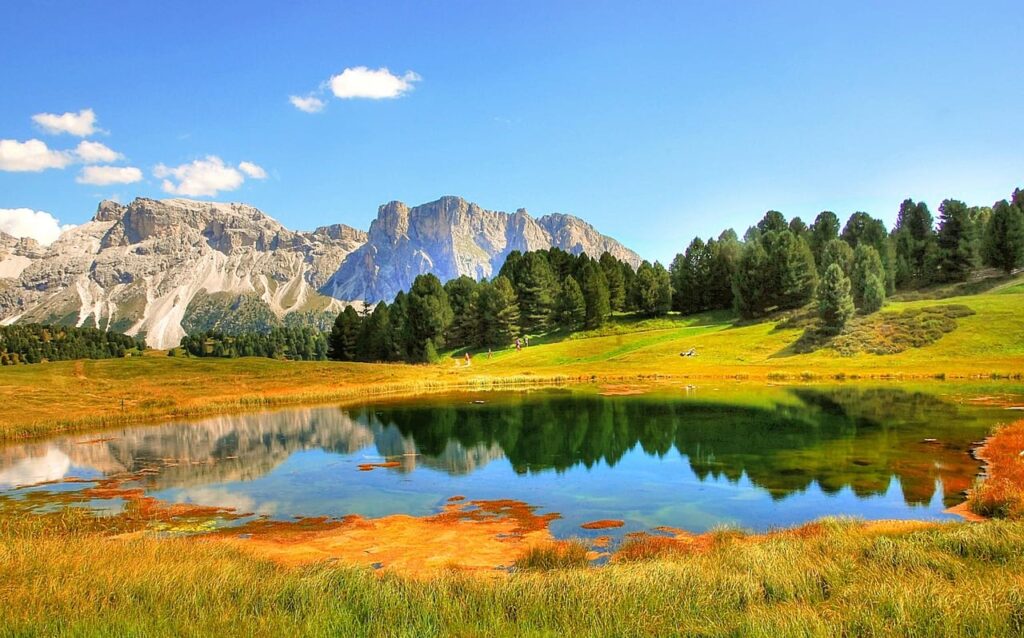
Embrace the Italian Lifestyle
Finally, embracing the Italian lifestyle can save you money. Italians typically eat late, so by adapting to their dining hours, you can indulge in aperitivo as your dinner. Drink coffee standing at the bar to avoid the ‘coperto’—a charge for sitting at a table. And most importantly, take your time. Italy is not a place to rush; it’s a place to savor every moment.
In conclusion, Italy offers an abundance of riches for those willing to explore its depths beyond the price tags. With careful planning, a willingness to embrace local customs, and an adventurous spirit, you can indulge in the Italian experience to its fullest without compromising your budget. Remember, the heart of Italy doesn’t lie in a luxury suite or a Michelin-starred meal; it thrives in the cobblestone streets, the market banter, the sunset hues over ancient domes, and the simple joy of a gelato on a warm afternoon. And that is priceless.
Italy is a dream that keeps returning for the rest of your life – Anna Akhmatova. May your Italian dreams be as rich in experience as they are affordable to your pocketbook. Buon viaggio!
Related Posts:
- Wellness And Relaxation: Italys Thermal Spas And Retreats
- Romantic Getaway Destinations For Couples In Europe
- The Solo Travellers Guide To Making Friends In Europe
- What Are The Top Attractions In Budapest?
- Is Greece Safe For Solo Female Travellers?
- When Is The Best Time To Travel To Switzerland?
- 10 Off The Best Things To Do In Naples, Itlay
Leave a Comment Cancel Reply
Your email address will not be published. Required fields are marked *
Save my name, email, and website in this browser for the next time I comment.
How to have a budget vacation in Italy

While Italy is ideal for a vacation splurge, the Mediterranean country can also make for a very affordable vacation, too. Depending on where you go and what you do, you could drop some serious cash, or have a relatively budget vacation if you do your homework. From using your stash of points to picking the right destinations to visiting during a specific season, follow the below tips to have an incredible vacation in Italy without breaking the bank.

Use your points
Marriott has more than 60 hotel properties in Italy from Category 2 AC properties to luxurious Category 8 St Regis hotels. Hilton has around 20 hotels and Hyatt has more than 50 properties. IHG and Radisson also have a presence in the country. This gives you numerous options from budget to luxury to use your points. If you don't have hotel points, remember, you can transfer points from programs like Amex Membership Rewards to hotel partners like Marriott, Hilton and Radisson.

Or book a rental
Apartments or home rentals are often a fraction of the cost of hotels. Plus, they're ideal for families or groups traveling together. Not only can rentals cost less, but they can also save you money on dining out, assuming they come equipped with a kitchen, barbecue grill or coffeemaker. And, a trip to an Italian grocery shop is almost as exciting as a meal out. The pasta section alone is positively overwhelming and I won't even start on the spices, cheese or gelato aisles.
Rentals often come with additional amenities like a washing machine and you may end up with hotel-like extras such as a pool or balcony, too. If you choose a rental in a more local neighborhood, even if you do eat out, you may end up spending less than you would if staying in a hotel in a more touristy area of town.
Related: 7 underrated regions in Italy with the best food and wine

Stay in local neighborhoods
If you do decide to hit a big city or popular tourist spot, consider a less touristy neighborhood. For example, Trastevere in Rome is popular among tourists and locals alike for dining but has become pricier over the years. But Testaccio, the neighborhood next door, is now up-and-coming. It was once a bit run down, but now, you can find some excellent budget cuisine options and enjoy exploring and shopping at the Mercato di Testaccio.
Likewise, in Florence , lodging on the other side of the Arno river in the Oltrano neighborhood is often significantly cheaper. As mentioned above, if you can't find hotels in these more local areas, a home rental will save you money.

Visit in the shoulder or low season
Italy has three main seasons for visitors:
- Low season: November to March (except Christmas/New Year's);
- Shoulder season: April to early June, mid-September to October; and
- High Season: mid-June to mid-September.
While these dates can slightly vary by region or island , generally, winter is low season (besides Christmas) in Italy. You still might end up with plenty of sunshine and mild temperatures in November or February though, especially if you visit southern Italy.
The calculations are easy: prices are highest when destinations are at their busiest in high season. You're likely to score better hotel prices, off-peak reward flights/flight deals in shoulder or low-season. Plus, you'll encounter fewer tourists and fewer crowds.
Related: These are the best times to visit Italy

Ask for, well, everything
The Italians are warm and friendly, and it never hurts to ask. Make sure to stay reasonable and respectful while asking for whatever it is you're hoping to get. I've ended up with hotel room upgrades in Milan, discounts on long-term scooter rentals and five-for-the-price-of-four used Italian books in Naples , money off city tours in Rome and two-for-one windsurf classes in Sardinia. All these things saved me money and I got them by kindly asking.
TPG U.K. Travel Editor Hayley Coyle was able to BYOB onto an expensive beach club in Sicily just by asking while on her honeymoon to avoid purchasing overpriced wine. So if you want something that will save you money, just ask for it and hope for the best. Just stay honest with your asks (don't get crazy) and make sure to smile.

Get off-the-beaten-path
Get a taste of a more local and authentic culture by visiting some destinations that are lesser-known. This will also save you money and help you avoid tourist traps and price gouging. Obviously, we would never discourage you from visiting epic spots such as Rome, Florence or Capri, but below are some alternatives to popular spots that are less busy. While you can find budget and splurge options (and everything in between in any city) consider these alternatives if you're traveling on a budget:
- Turin instead of Florence for wine and cuisine;
- Naples instead of Rome for a more local cityscape;
- Cinque Terre instead of Amalfi for fewer crowds but just-as-epic cliffside sea views (Cinque Terre is still busy, but slightly less so than Amalfi);
- Southern Italy versus northern Italy for more authentic Italian vibes and cheaper prices;
- Lake Iseo instead of Lake Como for more locals and lower prices;
- Herculaneum instead of Pompeii for less crowded ancient ruins;
- Ischia instead of Capri (this island is where Italians vacation); or
- Milan instead of Venice -- did you know Milan's Navigli district also has canals?
And don't forget, there are plenty of gorgeous Italian villages , stunning islands or one of these hidden gems for a vacation, too.
Related: Vacation on one of Italy's many gorgeous islands

Use these dining tricks
- Don't dine in the most famous square of the city. You'll be overcharged and the food won't be tasty either.
- Take your coffee at the bar . This is the cheapest place to throw back your espresso shot. You'll be charged more to sit down indoors and even more to sip it on the terrace outside.
- Take advantage of aperitivo hour. This is usually a specific two-hour time period between 6 p.m. and 8 p.m. where you pay to order a drink (like an Aperol Spritz or Campari) and are allowed to take snacks from a buffet of Italian delights. As most Italians don't eat dinner until 9 p.m., this is a way to fill restaurants and bars earlier on -- a sort of Italian-style happy hour. If you play your cards right you may just be full from the snacks and not need to order much (read: spend a lot) for dinner. The aperitivo is most common in northern Italy (especially Milan) but it's worth asking around for aperitivo spots anywhere in Italy.
Related: 7 beautiful destinations in Italy to visit in autumn

Take advantage of sharing
If you're worried your broken Italian will ensure you end up overcharged by a scamming taxi driver, there are always rideshare apps like Uber available in certain parts of Italy. Or, using an app like eCooltra, you can ride an electric motorbike through the streets of Rome or Milan. Catch a ride from someone driving a Vespa in Rome or Florence using the Scooterino app if you'd prefer to simply ride and not drive. There are also many apps, such as Lime, which allow you to rent electric scooters in cities like Rome or Turin.
Electric bike-sharing is also an option in many spots. It's really never been cheaper or easier to get around with so many different options. Just be careful if you plan to operate a motorcycle, scooter, bike or any other moving vehicle in Italy. The rules of the road are different, so stay as alert as possible and wear a helmet when necessary.

Bottom line
Italy is the perfect vacation destination for anyone, whether you're a luxury traveler, budget backpacker or anything in between. With easy hacks like visiting during low season, considering a more local neighborhood for your accommodation and taking advantage of scooter sharing and aperitivo hour, you can have that dream trip in Italy without overspending.
A budget guide to the highlights of Italy
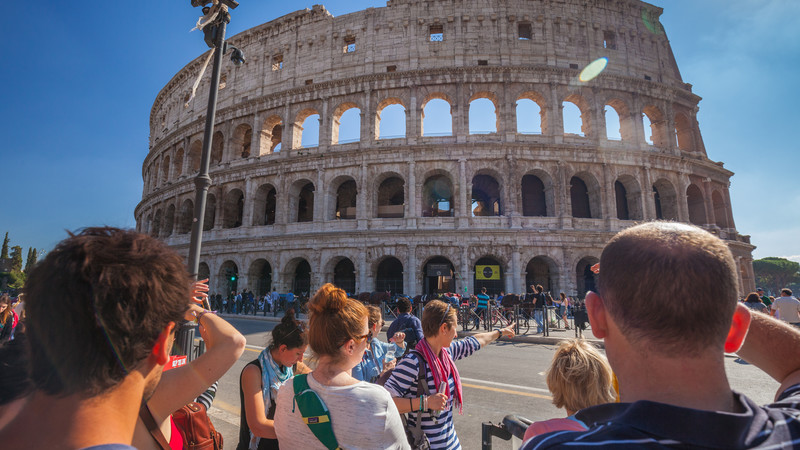
From the opulent cathedral in Florence to the ancient Roman Colosseum and canals of Venice, Italy overflows with epic architecture and swoon-worthy cityscapes.
Contrary to appearances (we are looking at you, luxe Instagrammers), an adventure on the Mediterranean peninsula doesn’t need to break the bank. I recently enjoyed a grand 8-day getaway on Intrepid’s Highlights of Italy tour—all while sticking to a tight budget.
Here’s how to save, and occasionally splurge, across Italy while still savoring la dolce vita .
Explore the backstreets (and canals) of Venice
Step away from the Grand Canal and wander through the quiet(er) streets of the of Cannaregio neighborhood where you’ll find locals sipping coffee before work or dining at family-run restaurants where makeshift outdoor patios replace formal dining rooms.
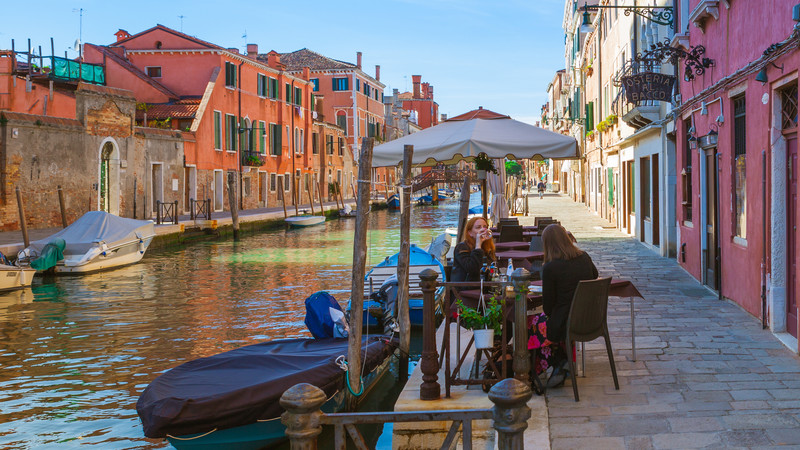
Always-stunning Venice
Want to see the city by boat on the cheap? Skip the Gondola and take the public vaporetto (water bus) instead—think of it as the subway for Venice. The #1 and #2 lines cruise through the Grand Canal passing by major landmarks along the way. A one-way ticket is about $8 ( € 7.50).
Surprisingly, there are free sights, too.
- Browse the Acqua Alta bookshop. A dream for bibliophiles and Instagrammers, the bookshop overflows with books packed inside bathtubs, gondolas and other waterproof structures.
- Tour St. Mark’s Basilica. Sparkling with gold leaf mosaics, it’s free to enter, but there’s a fee to climb the terrace overlooking Piazza San Marco.
Budget eats : Nibble on cicchetti (Italian-style tapas). Choose from small bites of fried fish, cheese, and meats washed down with an Aperol Spritz while picnicking canal side at the casual Osteria Bea Vita in the Cannaregio. Or grab a cone of fried seafood at Acqua e Mais to enjoy while strolling the streets.

Top-notch Venetian seafood
Splurge items : If you’ve dreamed of a gondola ride your entire life, this is the place to take it. Prices are fixed and it’s €80 ($97) for a 40-minute ride. Up to 6 people can hop aboard.
CHECK OUT INTREPID’S RANGE OF SMALL GROUP TOURS IN ITALY
Experience the Renaissance in Florence
The entire city of Florence is a medieval masterpiece and its museums house the largest collection of Renaissance artwork in the world. Galleria dell’Accademia is home to Michelangelo’s David sculpture and the Uffizi Gallery, one of the most visited museums in the world, is where to find works by Botticelli, da Vinci and Caravaggio, among others. The museums are free to the public the first Sunday of every month, but expect extra long lines on those days.
While you’ll need to pay to see the most famous artwork (unless you happen to be visiting on the first Sunday) the city as a whole is less expensive to visit than you think. Here’s what to do for free in Florence.
- Tour the Florence Cathedral, known as the Duomo (there is a fee to climb to the top of the bell tower).
- Stroll across the Ponte Vecchio for prime people watching.
- Climb the hill to Piazzo Piazzale Michelangelo for stunning panoramic views, especially at sunset.
- Visit the Oblate Library, located in a former convent. It’s open to the public and has a cafe where you can sip a glass of wine for $4 while overlooking the Duomo.
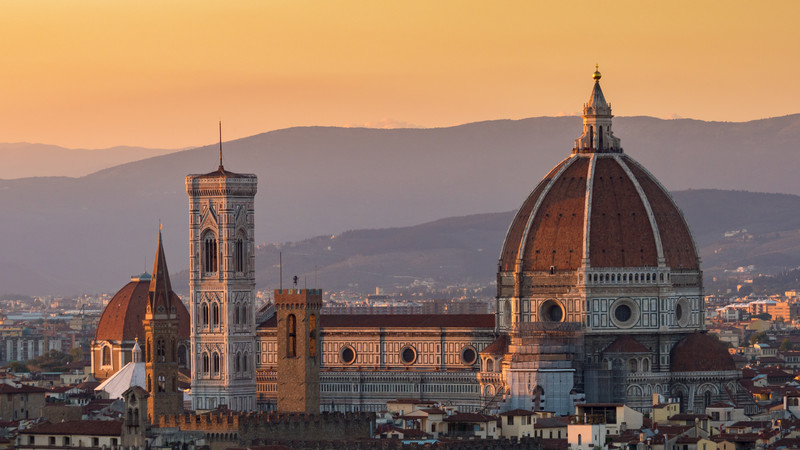
Sunset over the Duomo
Budget eats : Head to the Mercato Centrale—a foodie’s food court dream—for everything from truffle pasta and Neapolitan-style pizza to pork sandwiches. And don’t forget dessert. Gelato originated in Florence, and even the best in the city, including La Carraia near Ponte Vecchio, are affordable luxuries.
Splurge items : Vegetarians, scroll down. The outdoor San Lorenzo market is the place for fine leather goods including jackets, handbags and purses. For dinner, feast on a giant steak (bistecca alla fiorentina) that easily feeds 3 or 4 people.
READ MORE: EVERYTHING YOU NEED TO EAT IN ITALY: A CITY-BY-CITY GUIDE
Live like a Roman
After ticking off the must-see sites including the Colosseum, Trevi Fountain and Roman Forum, detour to the Trastevere neighborhood across the Tiber River for casual dinners, buzzing bars, and a labyrinth of photogenic alleys. You’ll find street performers in the airy Piazza di Santa Maria, too.
The iconic Colosseum
There’s plenty of history to experience for free in the Eternal City.
- See the sun move through the opened-roof of the domed Pantheon. Once a temple, now a church, the 2,000-year-old building is one of the best preserved structures from the Roman Empire.
- Eat a gelato or street snack on the staircase of the Spanish Steps.
- It’s free to see the main floor of St. Peter’s Basilica. Get there early in the morning or after 2pm for shortest lines. There’s $9 charge to climb up to the dome designed by Michelangelo.
Budget eats : Suppli is the Roman version of arancini (stuffed rice balls). I suppli in Trastevere serves up these fried snacks along with homemade pizza and takeout pasta in the small shop. Alternately, the Testaccio Market is packed with fresh produce and prepared foods including shredded beef sandwiches at Mordi e Vai, and the best Cannoli in Rome at Dess’art.
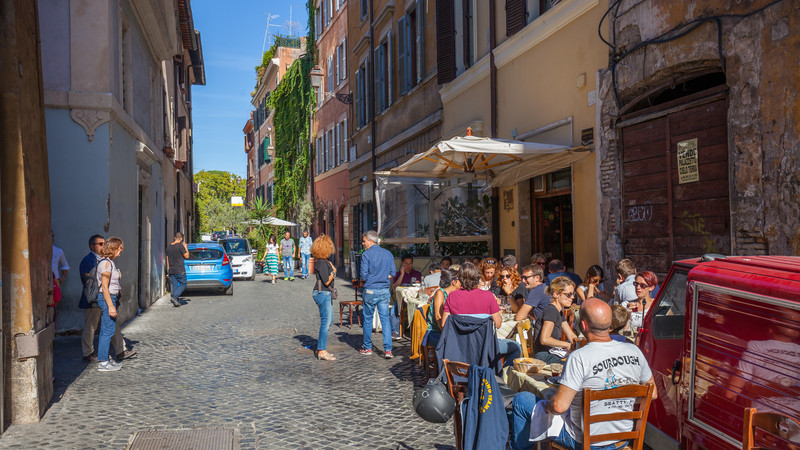
Dining in Trastevere
Splurge Items : You’ll find plenty of amazing meals at homey trattorias, but for a decadent once-in-a-lifetime meal, try the tasting menu at Michelin-starred La Pergola restaurant. Dress up for the lavish, white-tablecloth experience.
SUBSCRIBE TO INTREPID’S NEWSLETTER FOR TRAVEL TIPS, COMPETITIONS, GIVEAWAYS & MORE
The views are (mostly) free in Cinque Terre
But you need to work for them. That includes hiking the trail along the cliffs that connect the five villages. The cost of the trail pass (which includes train fare, bus fare in all five villages, and wifi access) is about $17. Meals at the restaurants with sea views are more pricey, but there are plenty of bakeries and delis that make it easy to pack a lunch or snacks to fuel your hike.
Budget eats : Savor the focaccia. For a few dollars pick up a giant slice of the yeasty bread topped with meat, cheese or locally prepared pesto. For a takeaway lunch or dinner, try the famous calamari (and other fired seafood) at Il pescato cucinato in Riomaggiore.
Splurge items : Life is short and so are sunsets. For the best sea views, take a sunset cruise with your travel buddies.
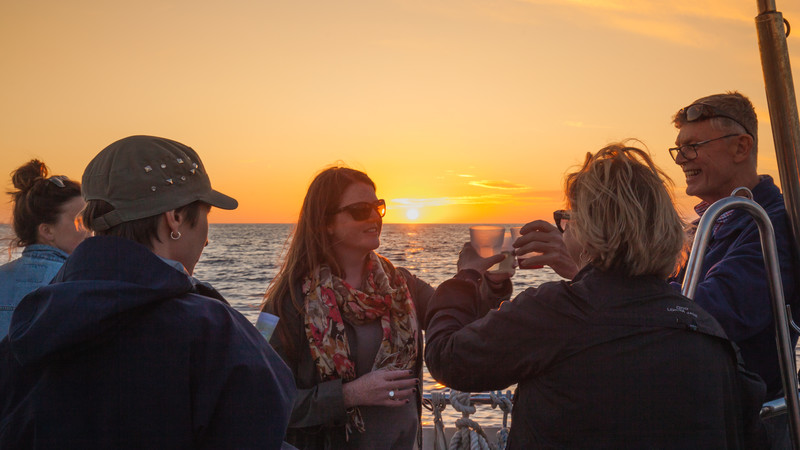
There’s nothing like a sunset boat cruise
READ MORE: WHAT TO DO, SEE, EAT AND DRINK IN CINQUE TERRE
Here’s how to save like a superstar throughout all of Italy
- Travel during shoulder season. October to December or early spring are the best times to experience Italy. Airfare from the U.S. and Canada is typically lower, crowds are less dense, and the weather is still mild.
- Stand at the bar while snacking. See all those locals standing at the counter drinking their morning coffee (and wine in the afternoons)? That’s because most bars and cafes have different prices for standing vs sitting down for table service. By standing you’ll save enough for an extra coffee and a few pastries.
- Sip happy hour cocktails. 7 to 9 p.m. is aperitivo time where the price of a drink also includes snacks (think Italian-style tapas) such as meat, cheese or finger foods.
- Avoid restaurants where the menu is posted outside in English. Look to see where locals eat and follow. Here’s a handy guide for what and where to eat in Italy.
Ready to save on the Italian adventure of a lifetime? Check out Intrepid’s range of small group tours in Italy.
Feeling inspired?
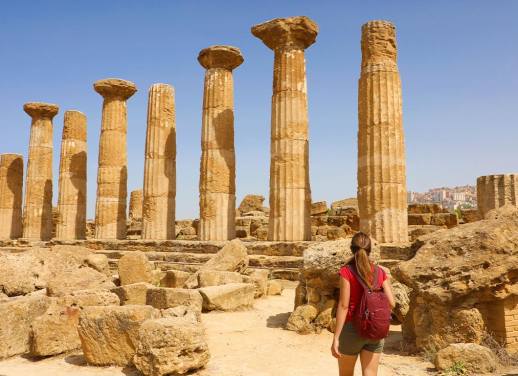
Kristin Amico
In early 2017 I quit my full-time job, gave up my Boston apartment, sold most of my belongings, and bought a one-way ticket overseas. I'm currently spending a year living nomadically and eating my way across Europe and Asia. My food and travel writing has appeared on Intrepid Travel, Fodor's, Paste Magazine, and The Kitchn. Follow my adventure on Instagram @Kristinamico.
You might also like
5 reasons to visit sri lanka in the..., why 2024 is the best year to see..., 6 unique experiences you can have in el..., from delhi to udaipur, here are the five..., cinque terre vs amalfi coast: which destination to..., love at first bite: 10 famous sandwiches from..., galapagos or madagascar which unique destination should be..., central vs south america: how to plan your..., 4 reasons you should take a road trip..., lessons learned on intrepid’s sabah adventure, travelling to chile here’s the best time to....

Italy On A Budget: Summer 2023 Travel Itinerary
For our budget friendly gals – you’ve come to the right place. Let’s talk Italy on a budget, because the European summer of your dreams doesn’t include coming home to an empty bank account. This Italy travel guide includes the budget-friendly tips you need to plan your trip – and a full list of things to see and do in Italy this summer!
Heads up: Links in this post are affiliate links. This means if you click the link and make a purchase, we receive an affiliate commission at no extra cost to you. Your support helps us continue to travel and share our experiences on this blog, and for that we are forever grateful!
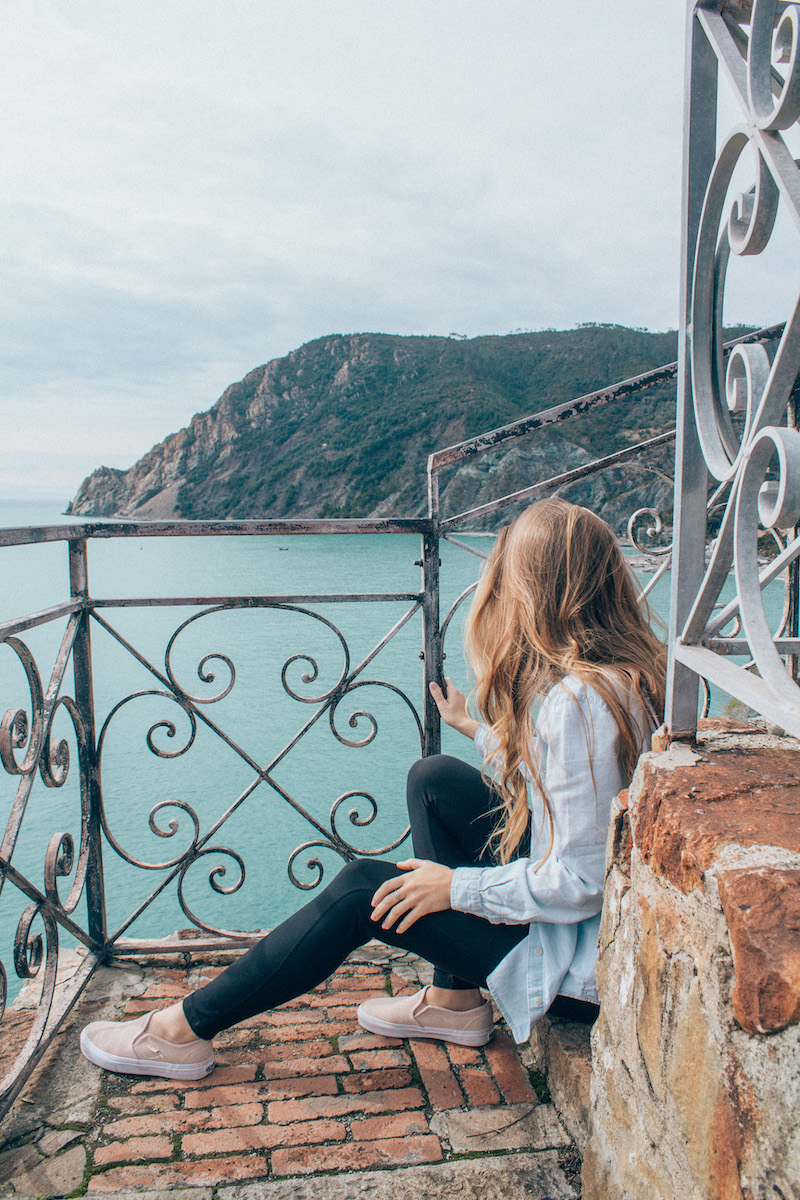
Monterosso, Cinque Terre
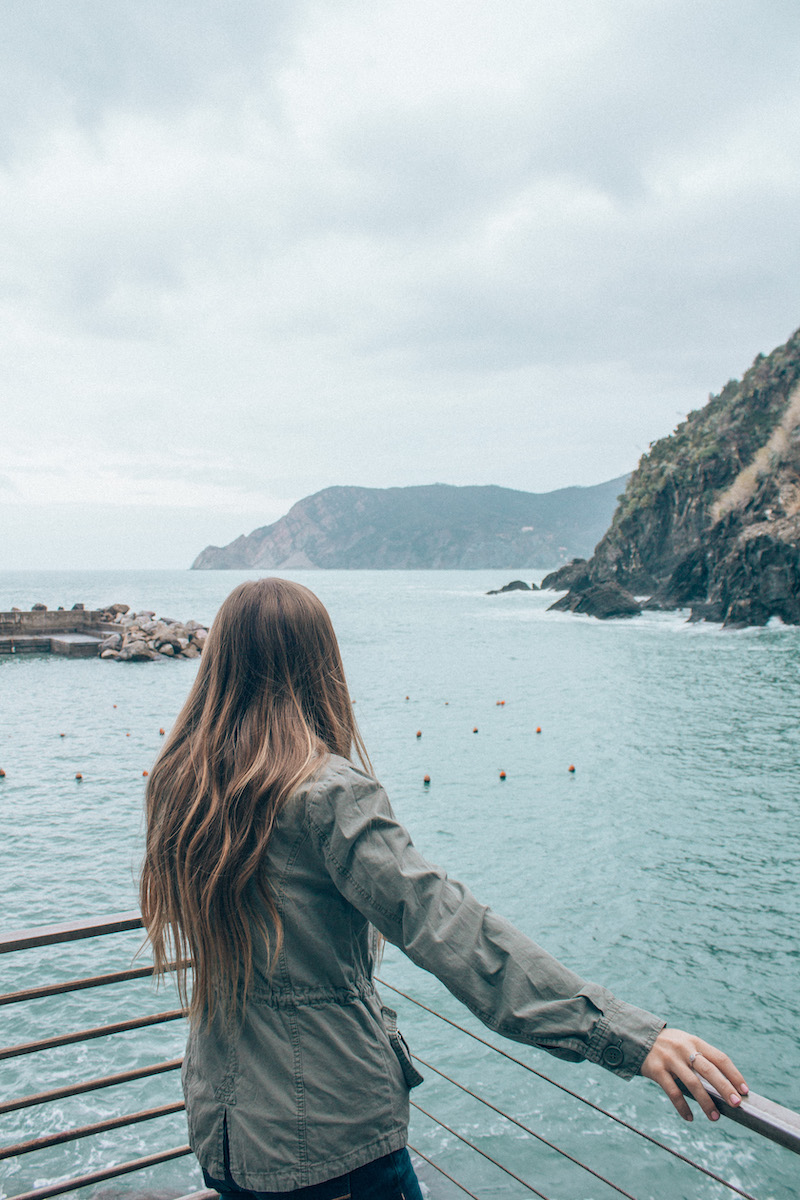
Vernazza, Cinque Terre
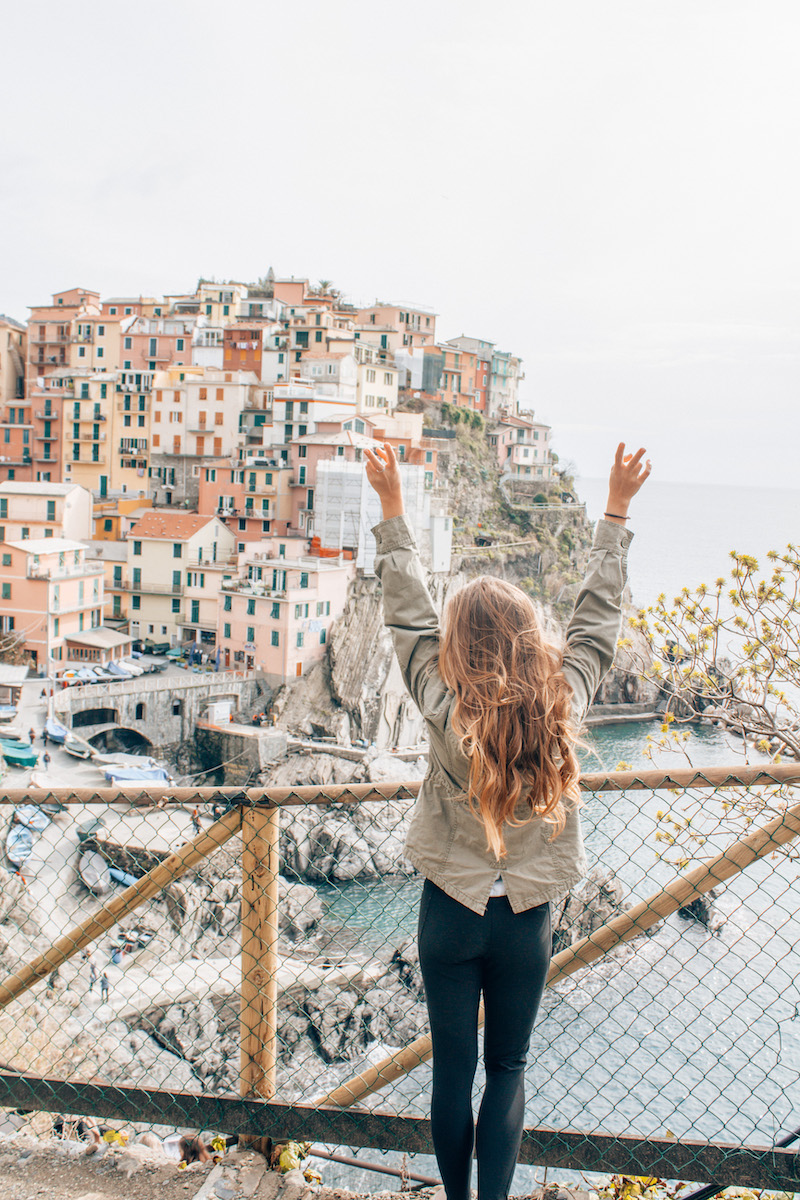
Manarola, Cinque Terre
How To Travel Italy On A Budget This Summer
- Book roundtrip flights far in advance using WayAway
- Travel everywhere by train
- Book stays with kitchens and cook some of your meals in
- Find free excursions – hike, visit the popular free sites early in the day to avoid crowds, explore the churches
- Go with a group – traveling with others is one of the best ways to cut costs on accommodation, transportation, and even some excursions
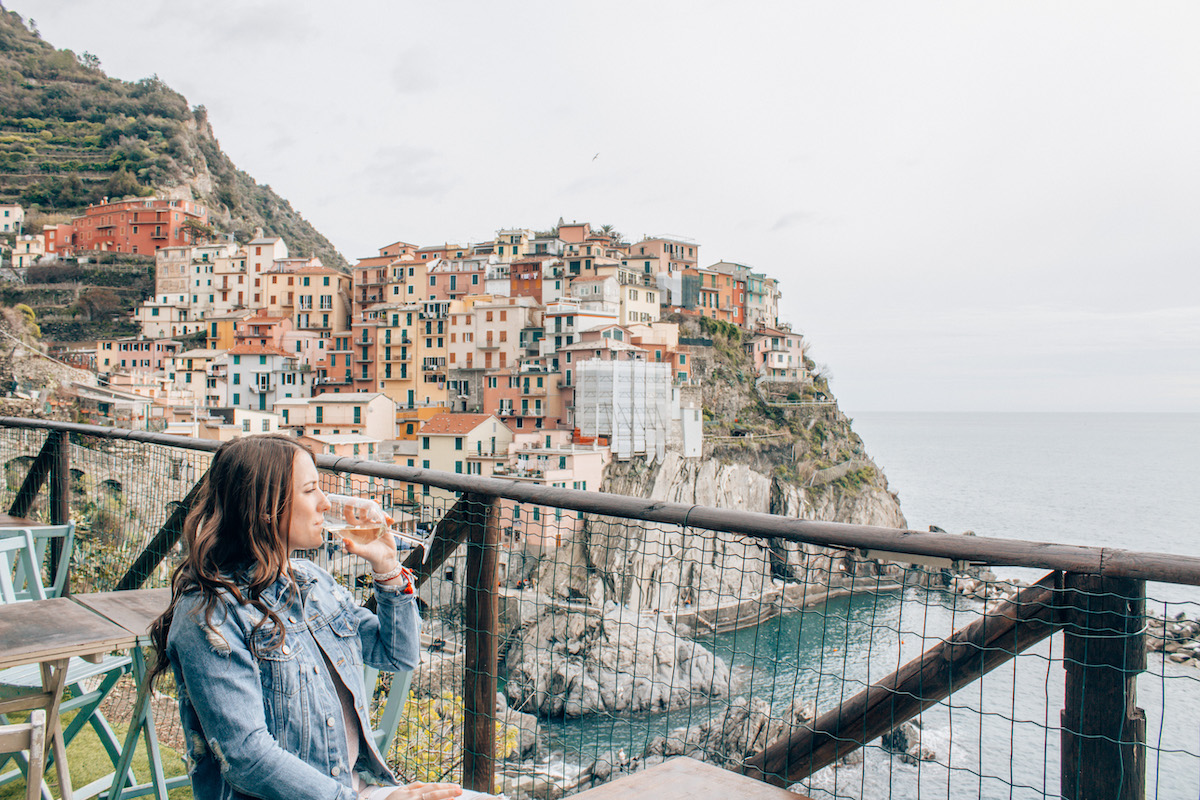
Cliffside Dining In Manarola, Italy
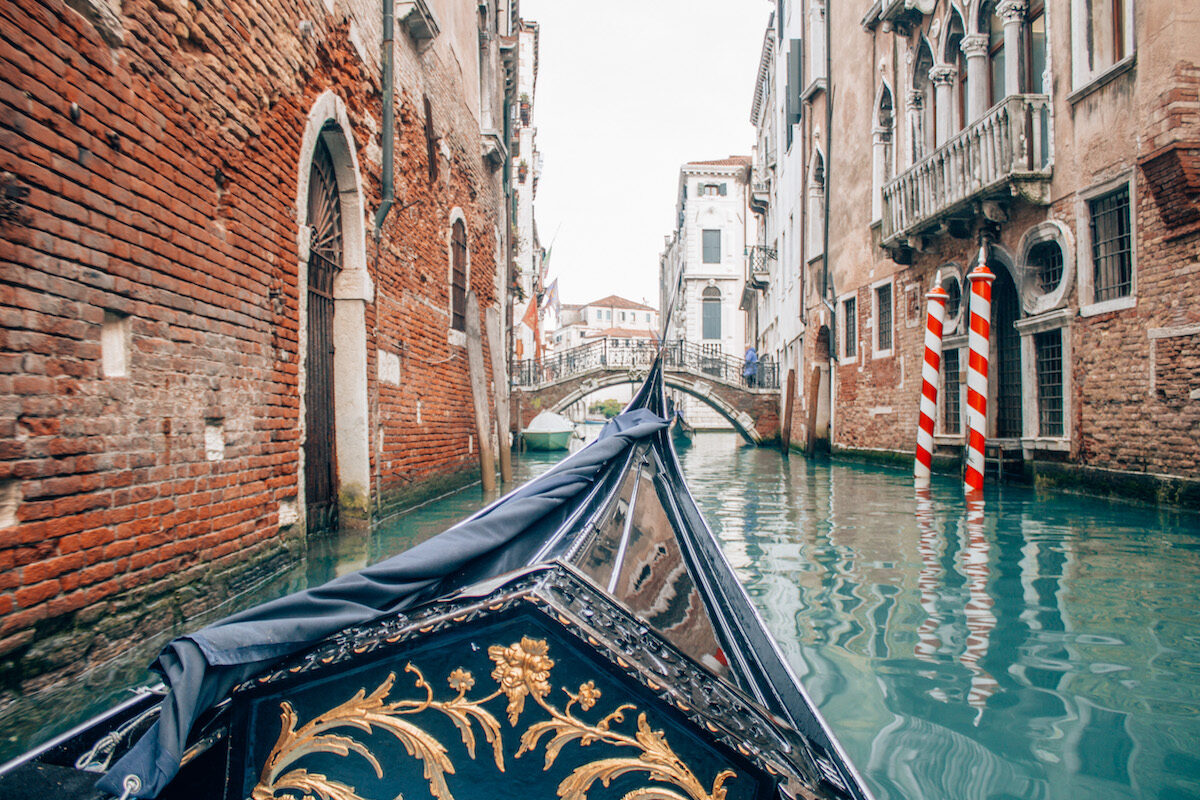
Gondola Ride In Venice, Italy

How To Travel To Italy
If you want to explore Italy on a budget and you plan to visit multiple cities, it’s easier than ever to find affordable flights. We’ve recently started using WayAway , because this site allows you to select a departure airport and type the entire country into the destination tab, rather than one specific city. This way, WayAway will return results for every major city in Italy, allowing you to compare prices and find the most affordable flight. Plus, there’s a Price Alert feature so you can provide your email and receive updates when the rates go down.
When it comes to finding an affordable flight, flexibility is key. For this reason, it’s a good idea to book your flights far in advance, and before you book other things like accommodation and excursions. In reality, you can save anywhere from $500-1000 by finding a great flight deal. That money will be much better spent enjoying Italy than it would be on an overpriced plane ticket.
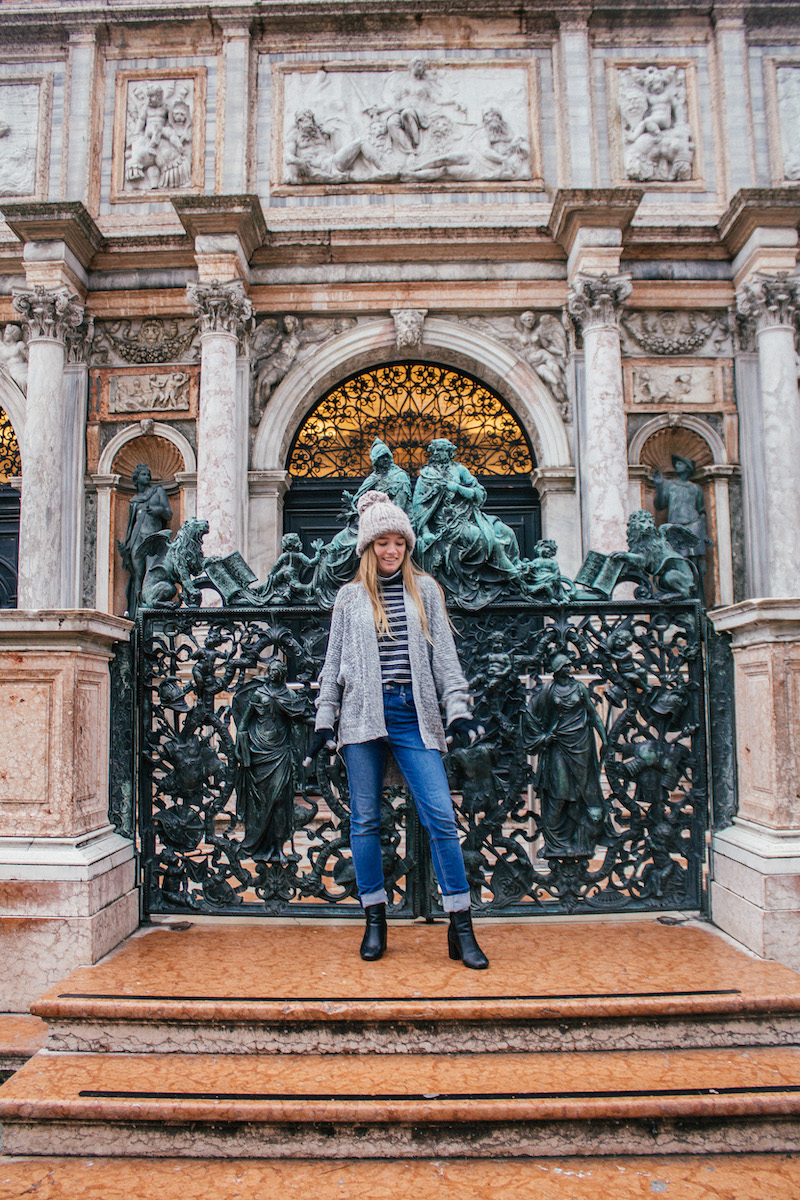
Venice, Italy
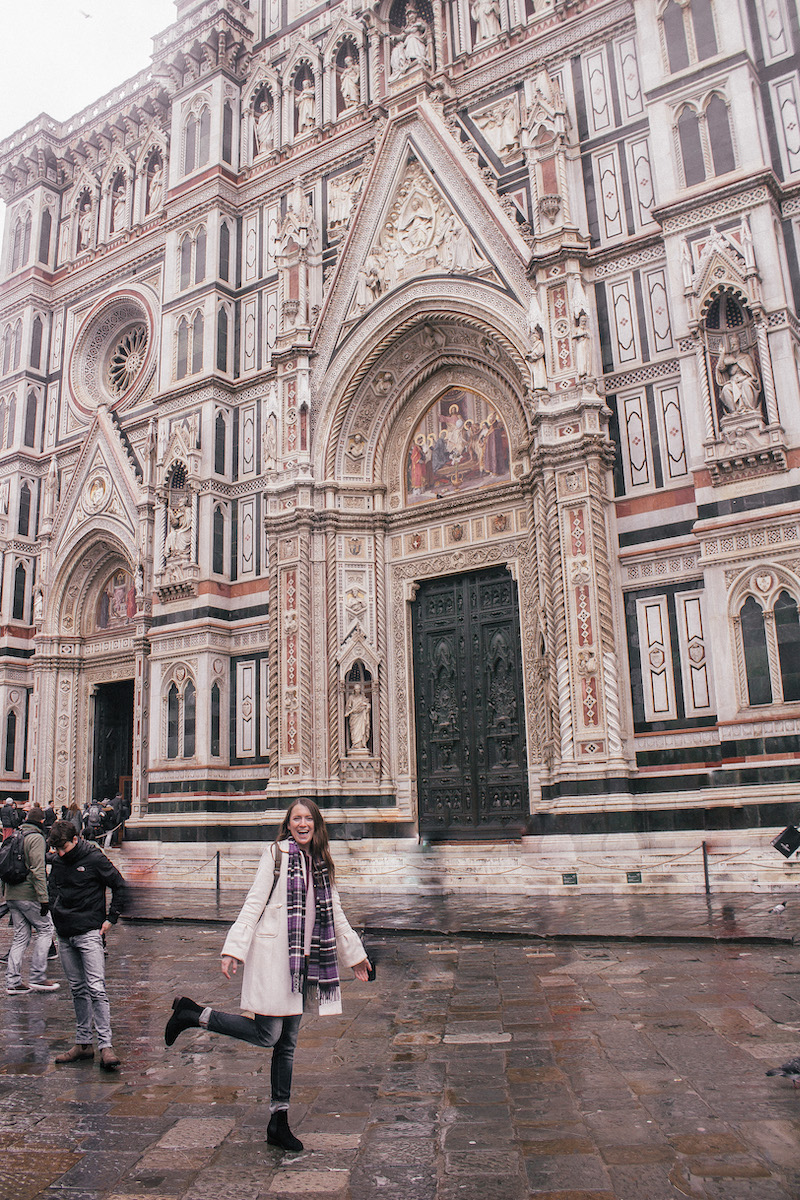
The Duomo In Florence, Italy
How To Travel Around Italy
Next, let’s talk about how to travel around Italy once you’ve arrived. Naturally, you’re going to want to play the field a bit and get to know multiple cities in Italy – because one is never enough. Just because you’re traveling Italy on a budget doesn’t mean you should have to compromise on the chance to explore all that this country has to offer. Fortunately, you can easily navigate the entire country by train, using the impressive Italian rail system.
Our biggest tip for train travel is to book your tickets in advance rather than at the station on the day of. We use Omio to search for trains and buses across Italy and find great deals. Tickets are significantly cheaper when booked online, in advance. During our trip to Italy, we found that we had booked tickets for 10-20 euros on trains that were charging 40-50 for day-of rides.
For this reason, it’s best to plan your italy travel itinerary before you go. You can spend time mapping out how you’ll get from city to city and wondering how long to spend in each place, or you can follow our complete 2 Weeks In Italy Travel Guide. Following this travel guide is the perfect way to fall in love with Italy. You’ll want to set dates for each city you plan to visit so that you can book affordable train tickets and accommodation in advance of your trip.
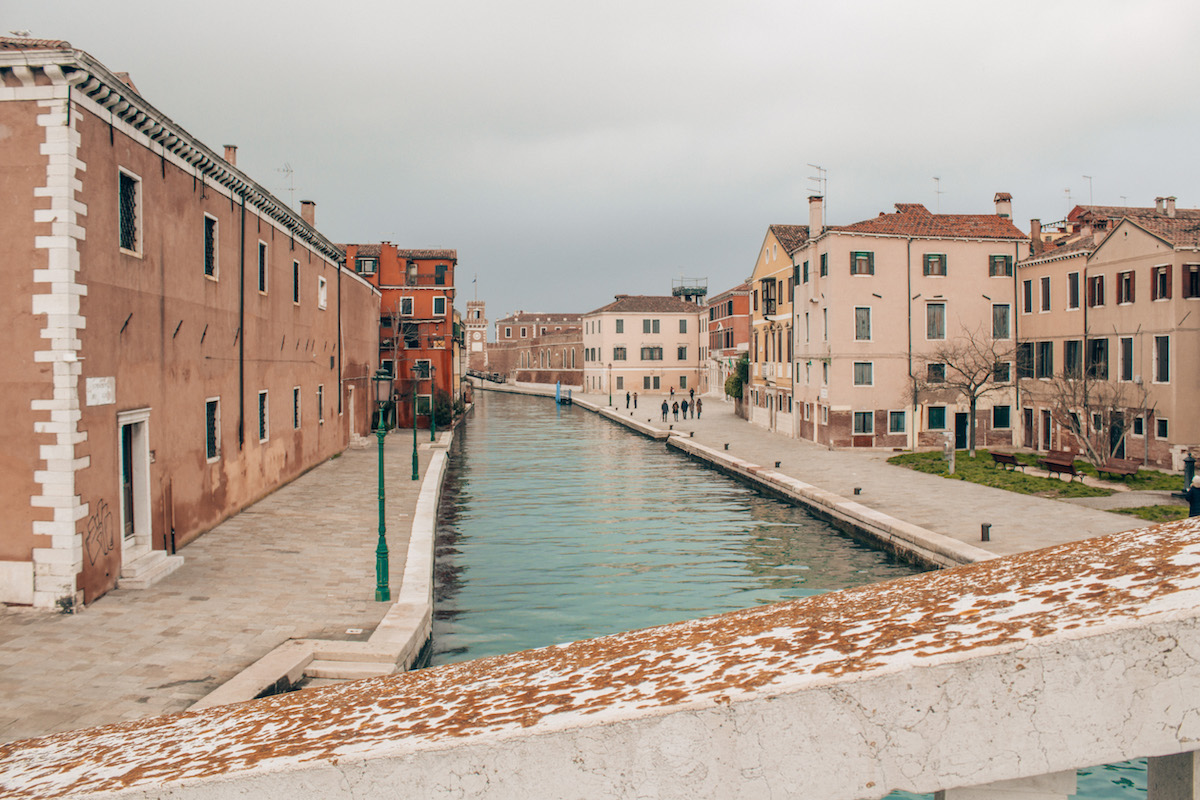
Vernazza, Italy
Where To Stay In Italy On A Budget
Italy is a hot commodity during the summertime – and prices rise to reflect this. While some will argue that the best way to travel Italy on a budget is to visit during the off-season, you might really want to experience Italy during the summer. After all, there’s nothing quite like a crisp Bimini cocktail, a dip into the crystal blue Italian waters, and an evening stroll through an Italian harbor as the boats dock for the night.
For those dead set on visiting Italy during peak season, the best way to find affordable accommodation is by searching rental sites like VRBO . Below we’ve listed a few affordable options for cute flats and cozy apartments, in some of Italy’s most popular destinations:
- Florence: Apartment near Duomo ($193 per night, sleeps 4)
- Cinque Terre: Riomaggiore Sea View ($214 per night, sleeps 4)
- Rome: Cozy apartment in the heart of Rome ($172 per night, sleeps 4)
- Venice: Super Penthouse ($154 per night, sleeps 6)
One of the easiest ways to make travel more affordable is to travel in a group! Book that girls trip, bring your family along, or use travel groups to connect with other travelers planning to be in the same place at the same time.
We often travel with anywhere from 3-6 friends and split the cost of accommodations like those above, which drops the price significantly. For example, the Venice apartment listed above can fit 6 people, which would make the cost about $26 per person, per night. Now your private accommodation is just as affordable as a hostel stay!
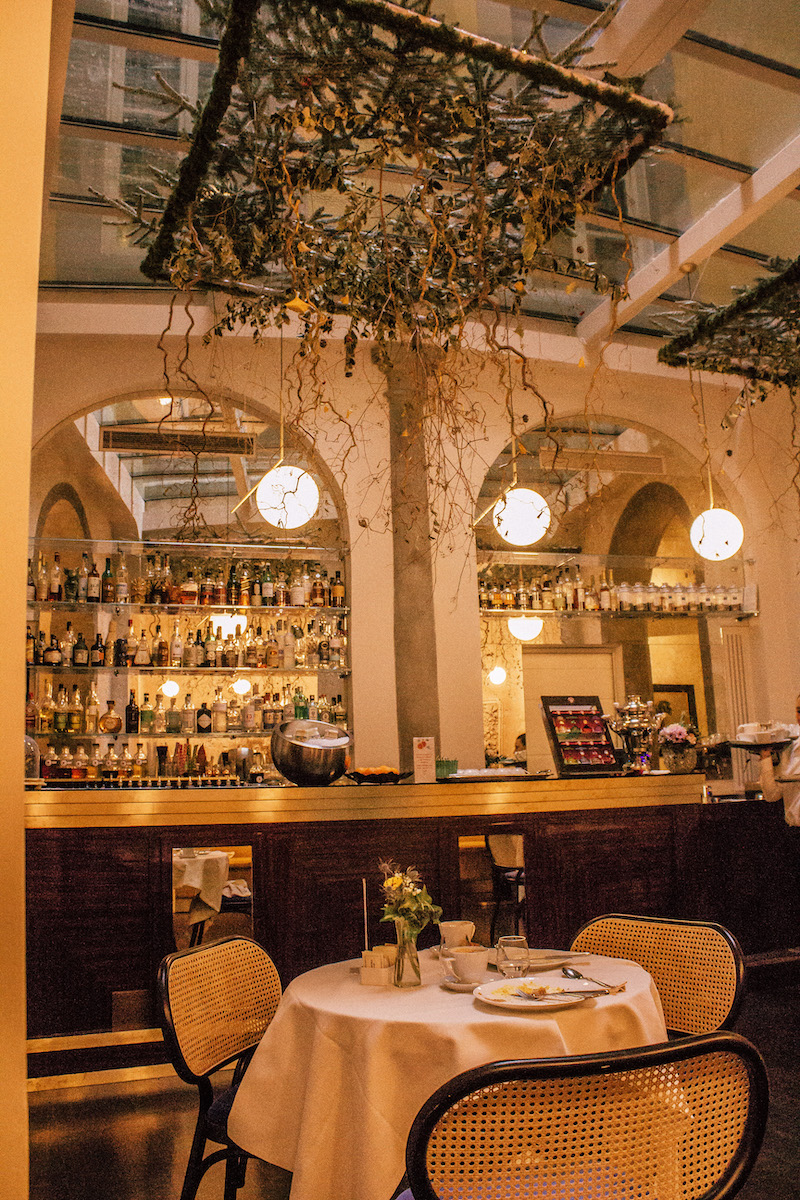
Florence, Italy
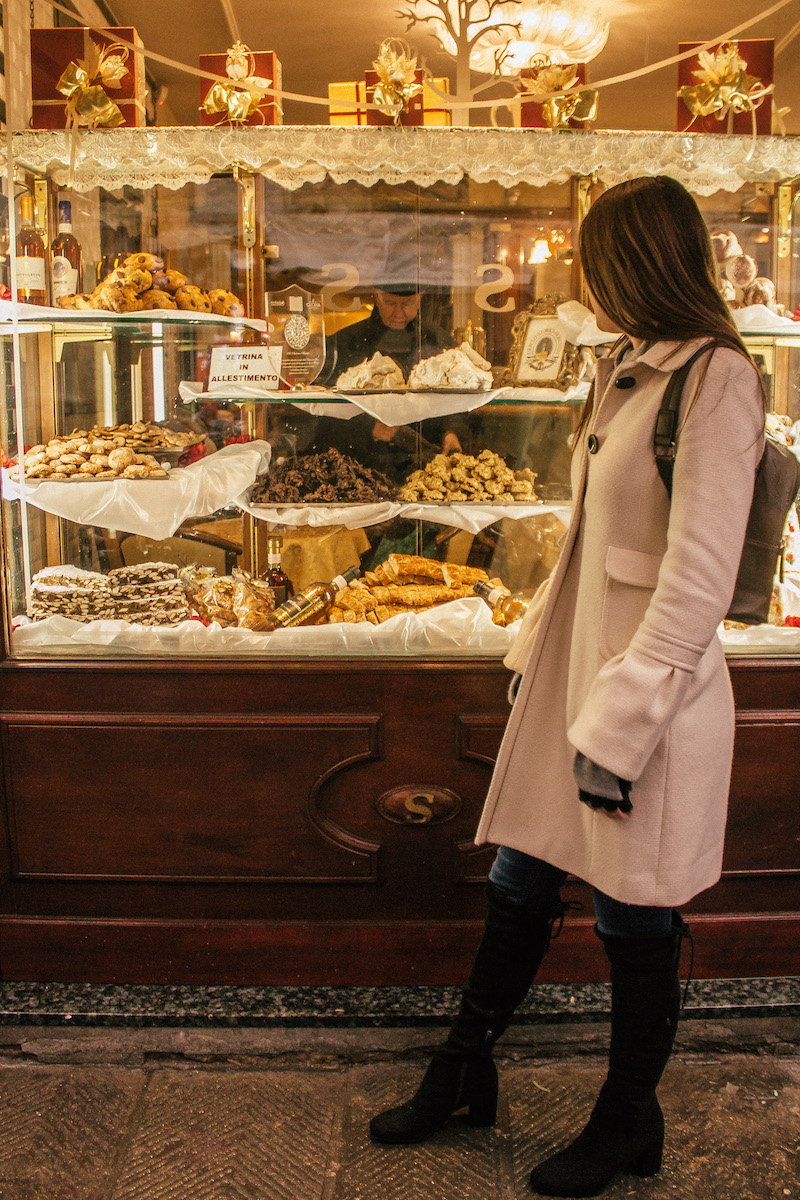
Where To Eat In Italy On A Budget
Listen, we know that eating is the #1 thing to do in Italy. No Italian summer itinerary is complete without some amount of splurging on delicious breads, wines, and cheeses (unless you’re GF/DF in which case, we feel you and Italian food can still be for you too!). When it comes to making eating out affordable, the best thing to do is to research a few restaurants in advance that have meals in your price range.
Restaurants close to tourist attractions are usually major deal breakers, and avoiding these will help you save money.
For example, when in Rome , we were so hungry after coming out of the Colosseum that we stopped into a lunch restaurant just across the street. This cafe had cases of food with no menus and no prices. Long story short, it wound up being the most expensive lunch of our entire trip, for the worst food and service we’d had. If you’re traveling Italy on a budget, seek out authentic Italian restaurants away from the top attractions whenever possible.
Finally, there’s nothing wrong with cooking in when you travel. There’s only so much pizza and pasta one can take, and the experience of shopping in a small italian market and cooking in your quaint Airbnb’s kitchen can be just as enjoyable as dining out. If you eat in for one or two meals a day, you will save so much money. This way, you can be selective about your meal out for the day, and enjoy it even more.
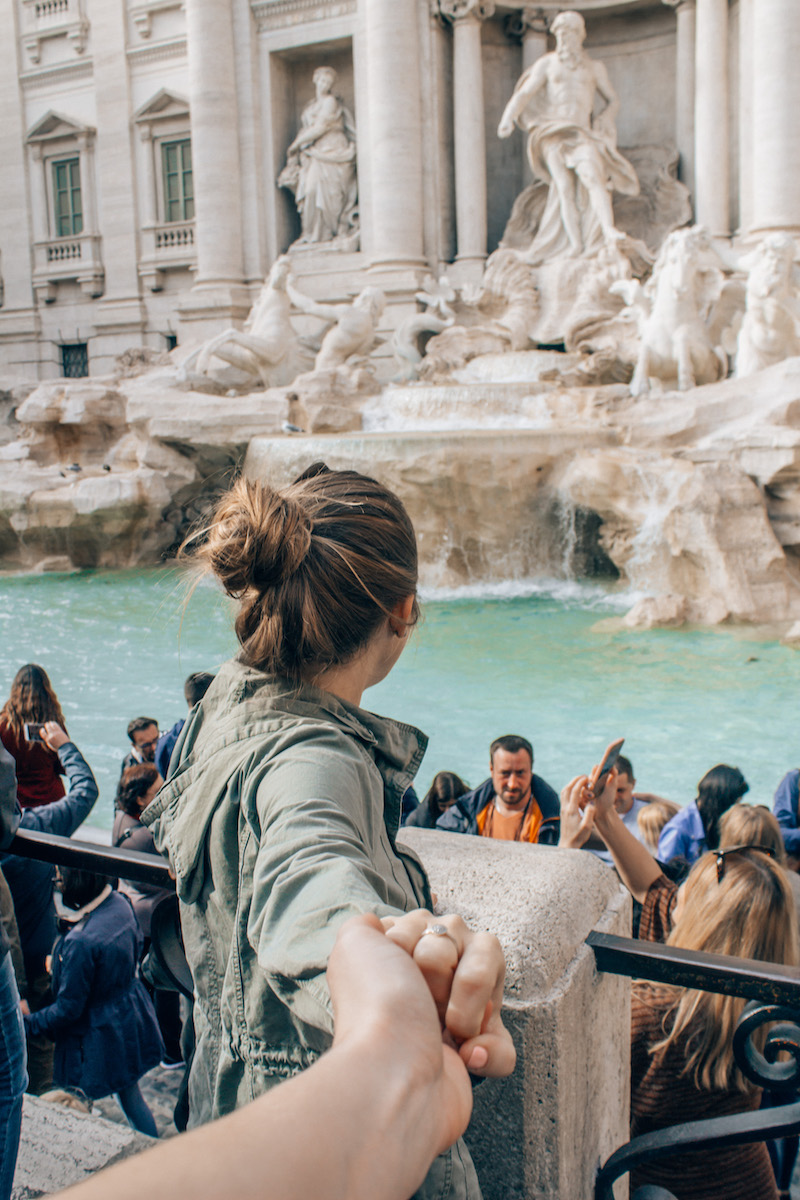
Trevi Fountain In Rome, Italy
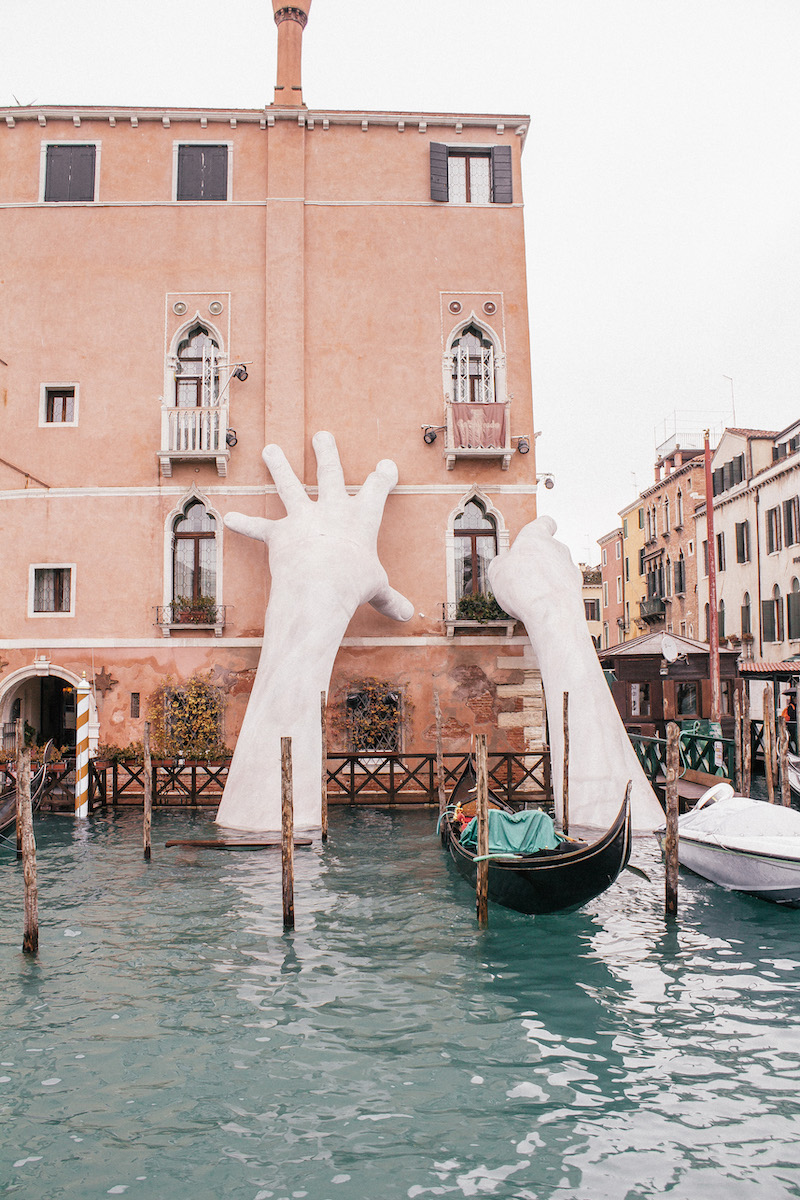
Boat Ride In Venice, Italy
Budget-Friendly Cities In Italy
If you’re in need of a budget-friendly Italy travel itinerary, our 2 Weeks In Italy Travel Guide is made for you. This guide covers the cities of Rome, Venice, Florence, Pisa, and the stunning Cinque Terre. Below, we list a few budget travel tips for each of these amazing cities:
When it comes to Rome, there are quite a few expensive ticketed attractions. But there are also some amazing free attractions too. Visit famous sites like the Trevi Fountain and the Spanish Steps early in the morning to enjoy them without the crowds. Exploring the Vatican without a guide is as little as 17 euros, and the Colosseum is just 16 euros. If you know you want to do it all, definitely plan to book a pass like the Rome Tourist Card, which includes entrance to the Colosseum, the Vatican, St. Peter’s Basilica, and the Pantheon.
Of course, you have to splurge for the Gondola ride. This is a classic experience in Venice and one that most visitors long for. The best way to make this canal ride affordable is to go with a group and split the cost, and to barter with the gondolier. Prices for these boat rides are not set, and you can negotiate to make sure you get a good deal.
If you want to experience an authentic Italian city without the crowds, Florence is your perfect match. This medium sized city is known for its stunning Duomo, which is free to visit!
Florence is very walkable, which is another easy way for you to save money on transportation. The city is split by the Arno river, with most attractions (including the Duomo) falling on the same side as the train station you will arrive from. It’s a good idea to book your accommodation on this side of the bridge, but you’ll definitely want to venture across to the other side. Take the bus to Piazzale Michelangelo, a plaza that offers the best views of the city.
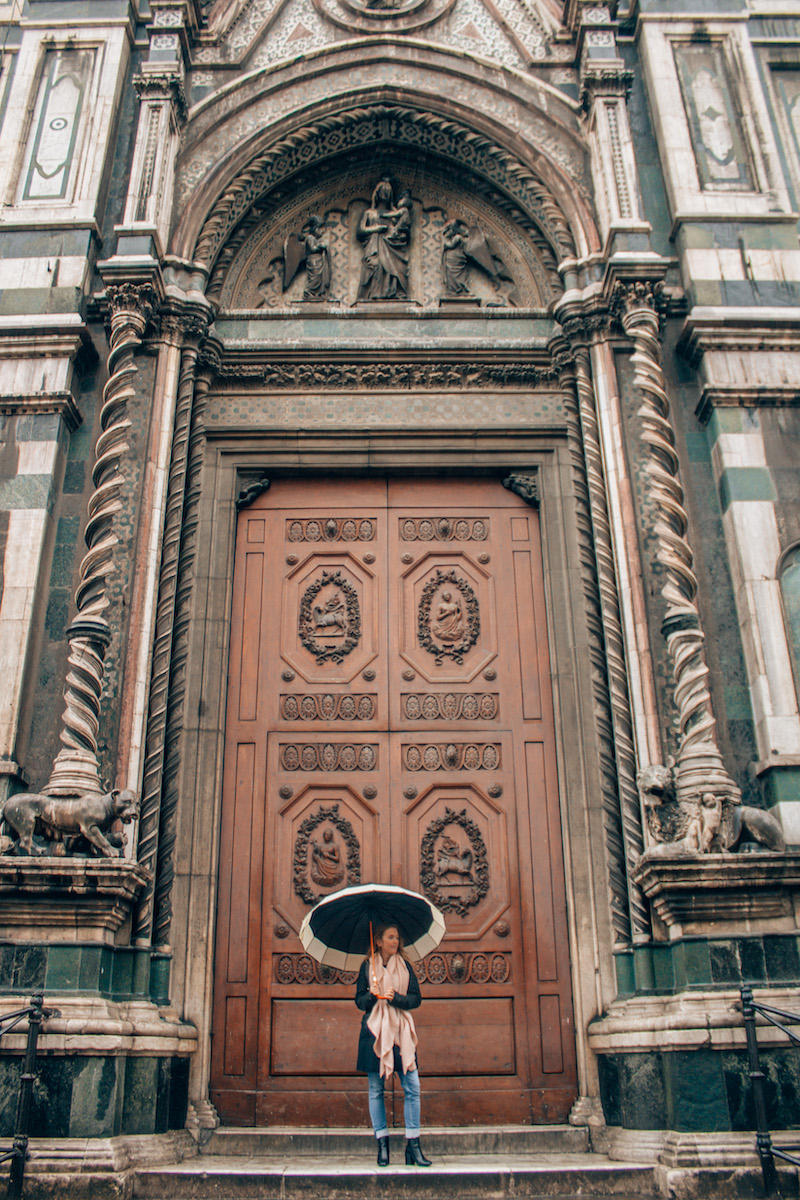
Beachside Cliffs In Monterosso, Italy
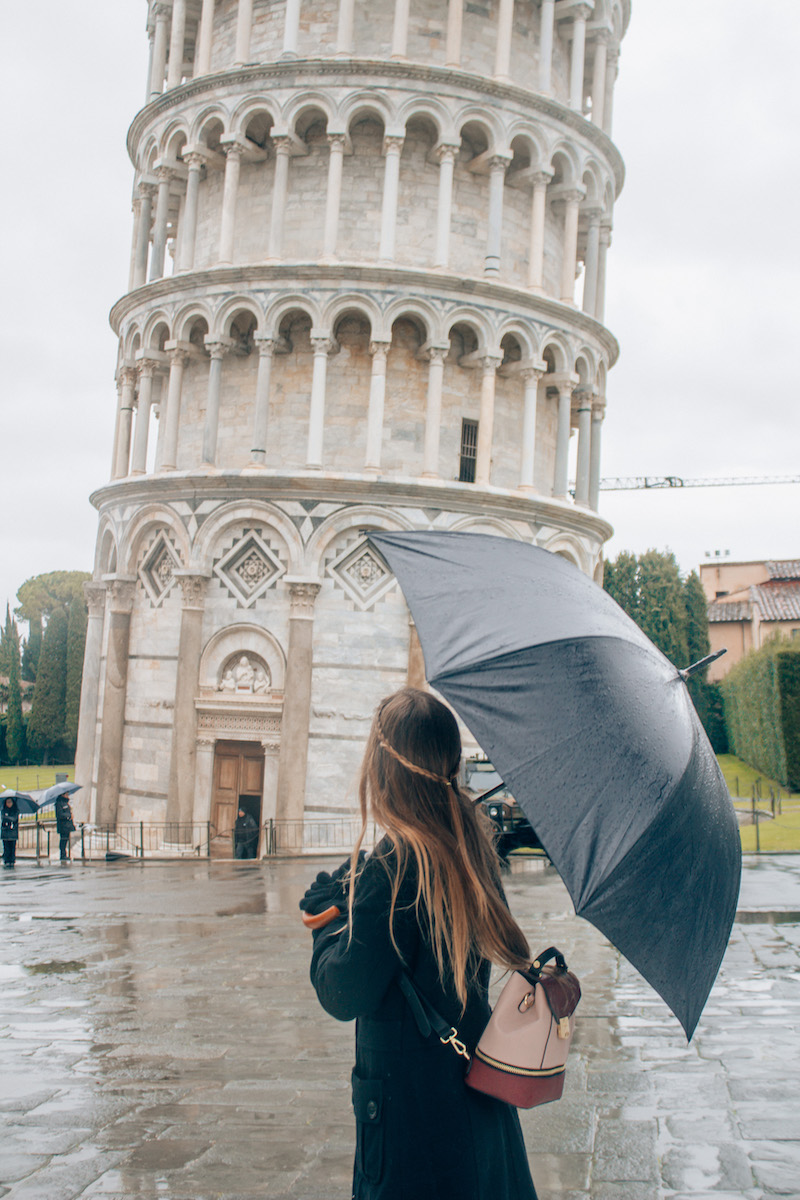
The Leaning Tower In Pisa, Italy
Honestly, if you’re traveling to Italy on a budget, feel free to skip Pisa. We went to see the leaning tower, but quickly realized it’s the only attraction in the city. The restaurants were more touristy than authentic, and the city just didn’t sweep us off our feet.
If you really want to see the Leaning Tower and snap your pics like we did – you can take the train in and out in one day. Arrive in the morning, walk the 20 minutes to the Leaning Tower, capture your photos, and then head back to catch an afternoon train. Add Pisa into your itinerary after Florence, and before the Cinque Terre. It’s perfectly placed between the two to be a quick stopping point along your journey. You can wake up in Florence, spend your day visiting the tower, and be checked into a cliffside home in the Cinque Terre by nightfall.
Cinque Terre
If you’ve never heard of the Cinque Terre, allow us to introduce you to your newest crush. Correction, your next full on love affair. Often coined the Amalfi of the north, Cinque Terre is a series of five seaside villages set atop the steep Italian coastline. These seasonal towns are bright year round, but they come alive in the summertime. Visitors flock to the crystal blue waters; fresh, local seafood; and picture-perfect viewpoints.
Book your accommodation well in advance here, and plan to stay for at least a few days so you can explore all 5 of the towns. Corniglia is often the most budget-friendly town, as it has fewer restaurants and activities than the other 4. However, if you plan ahead and can find a good deal, we recommend staying in Vernazza or Manarola.
During the summer months, you can actually hike between the towns for free. This is one of the best free activities to fill up your day! Trains between the towns cost as little as 3 euros, or you can buy a day pass that allows you unlimited rides. Thankfully, the towns have a few hole in the wall restaurants offering cones of fresh fish and fried food for a fair price.
If we’ve sold you on Cinque Terre, check out our full Cinque Terre Travel Guide for everything you need to plan the perfect trip.
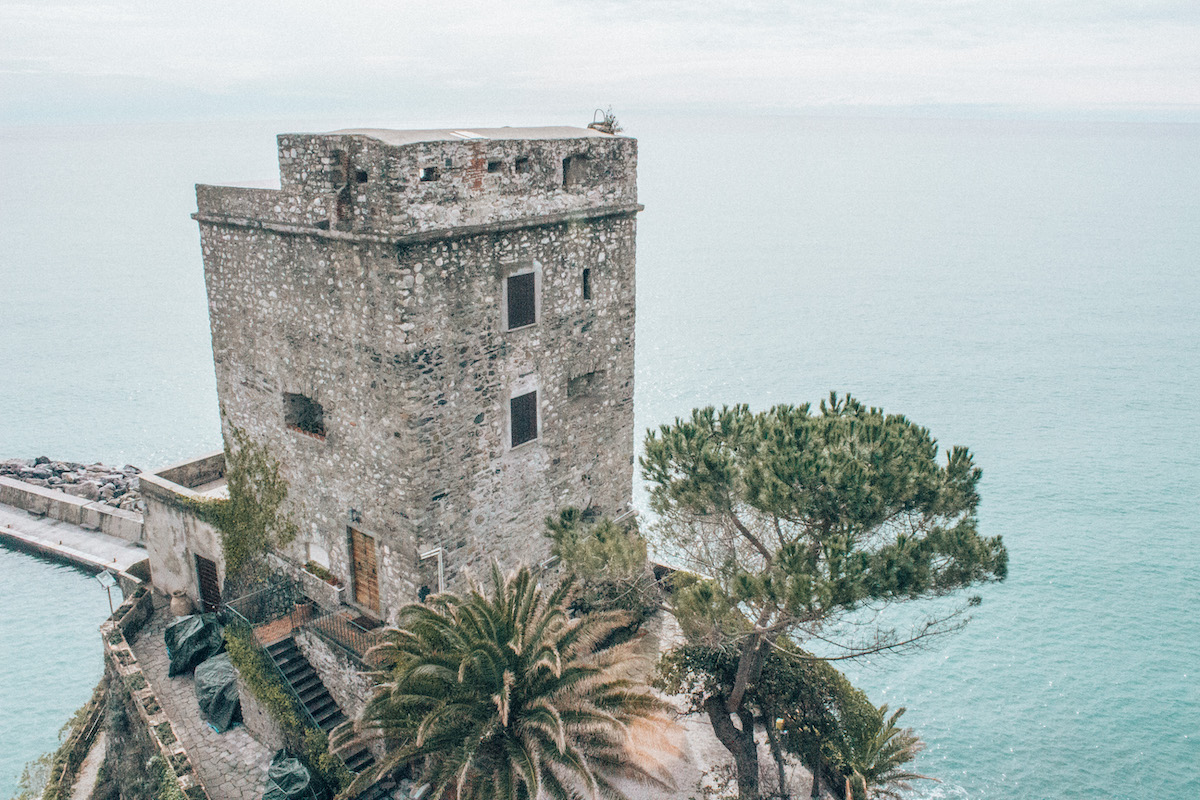
Monterosso, Italy
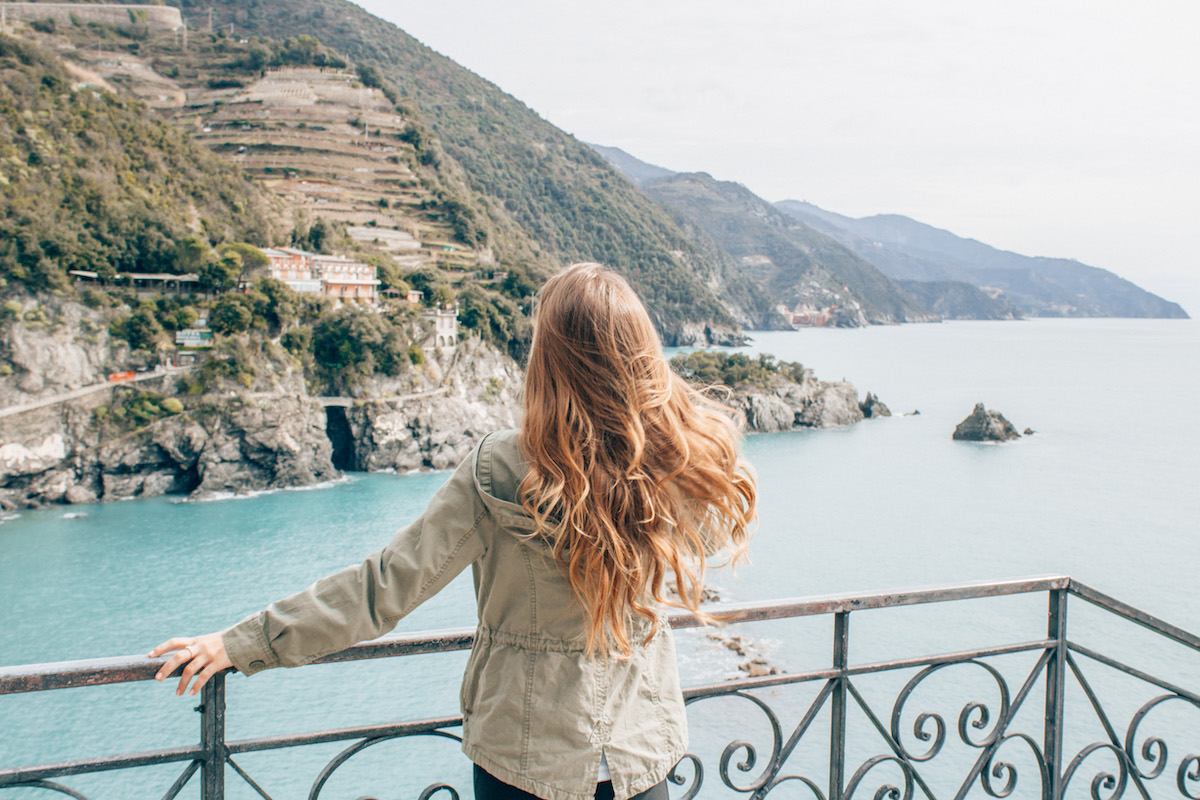
There you have it – all the tips you need to travel Italy on a budget this summer. Don’t get swept up in the heat of it all and spend way too much money during your trip, because you can travel to Italy on a budget! Overall, this is a 5-star 10/10 destination that’s great for a variety of travelers. If you’re looking to fall in love with new places, Italy is a great place to start.
Baggage girls
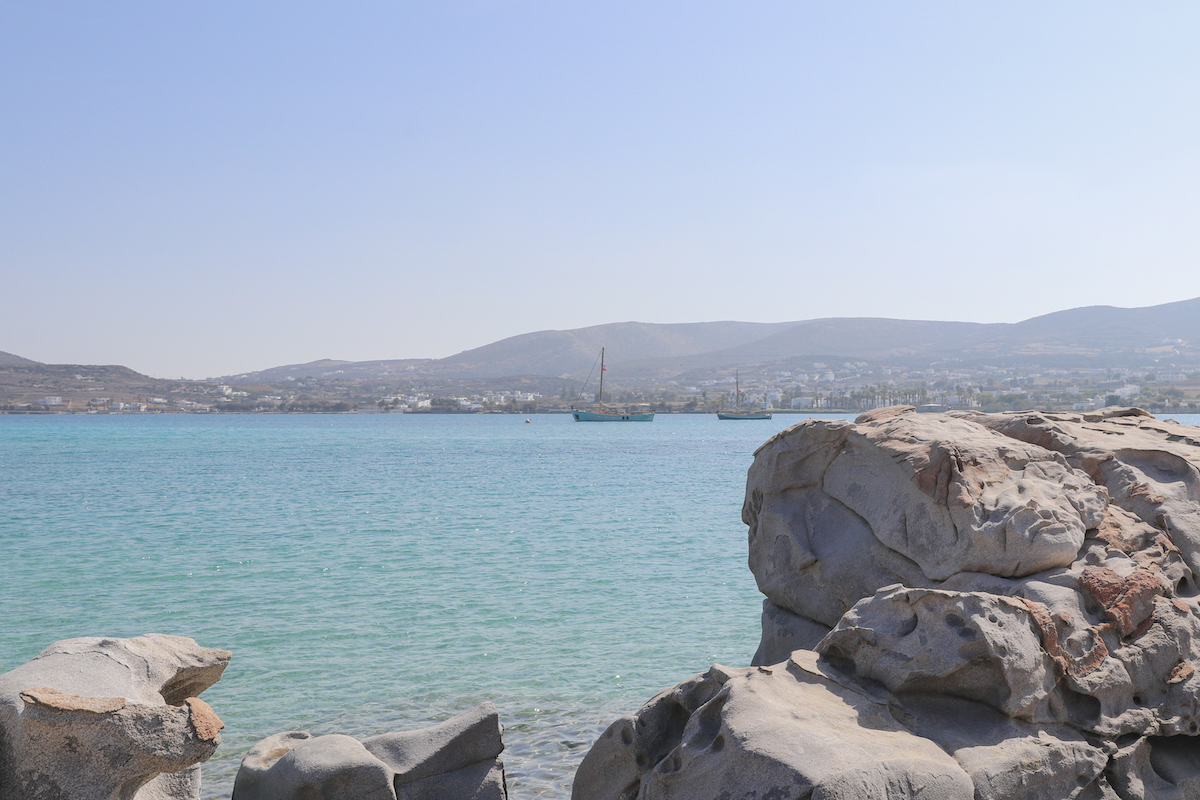
Paros Travel Guide: The Sustainable Greek Island You’ll Love
Paros is a total catch. Of the 4 Greek islands we visited during our trip to Greece in October, Paro
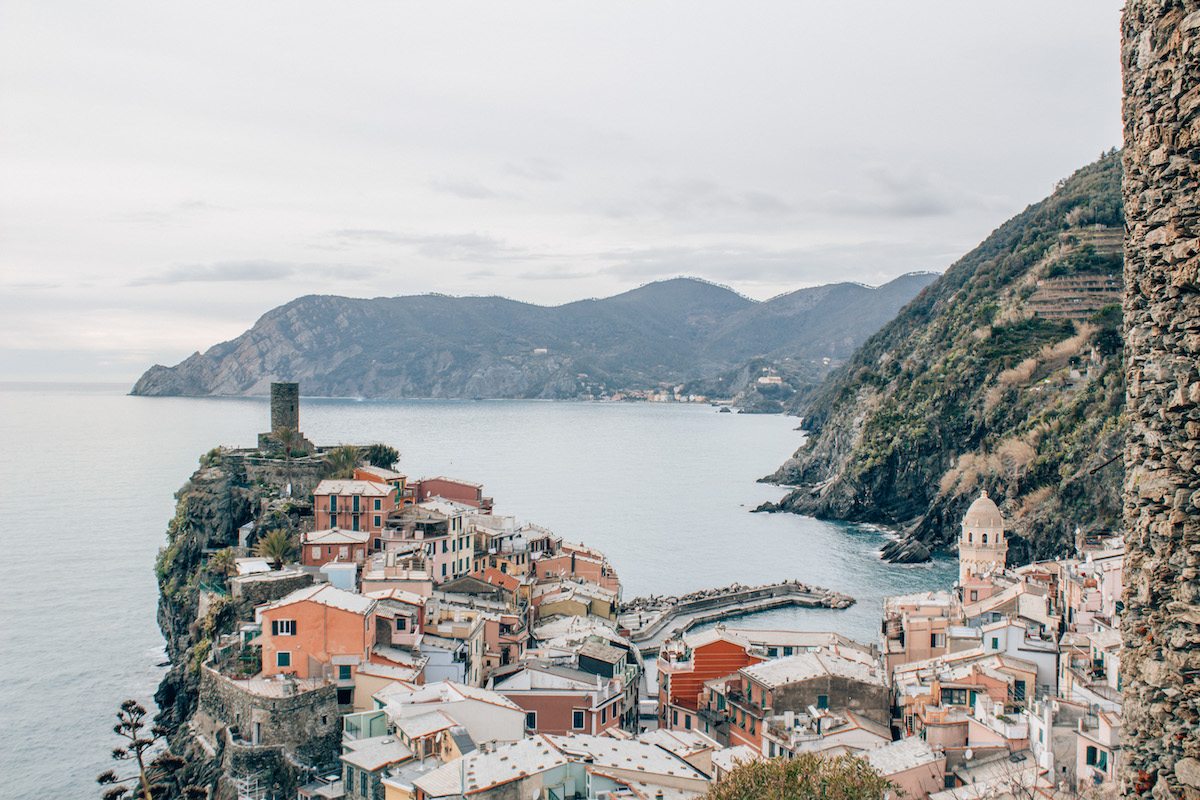
5 Budget-Friendly European Destinations To Visit This Summer
Europe likes to play hard to get for budget conscious travelers during the peak summer months. But i
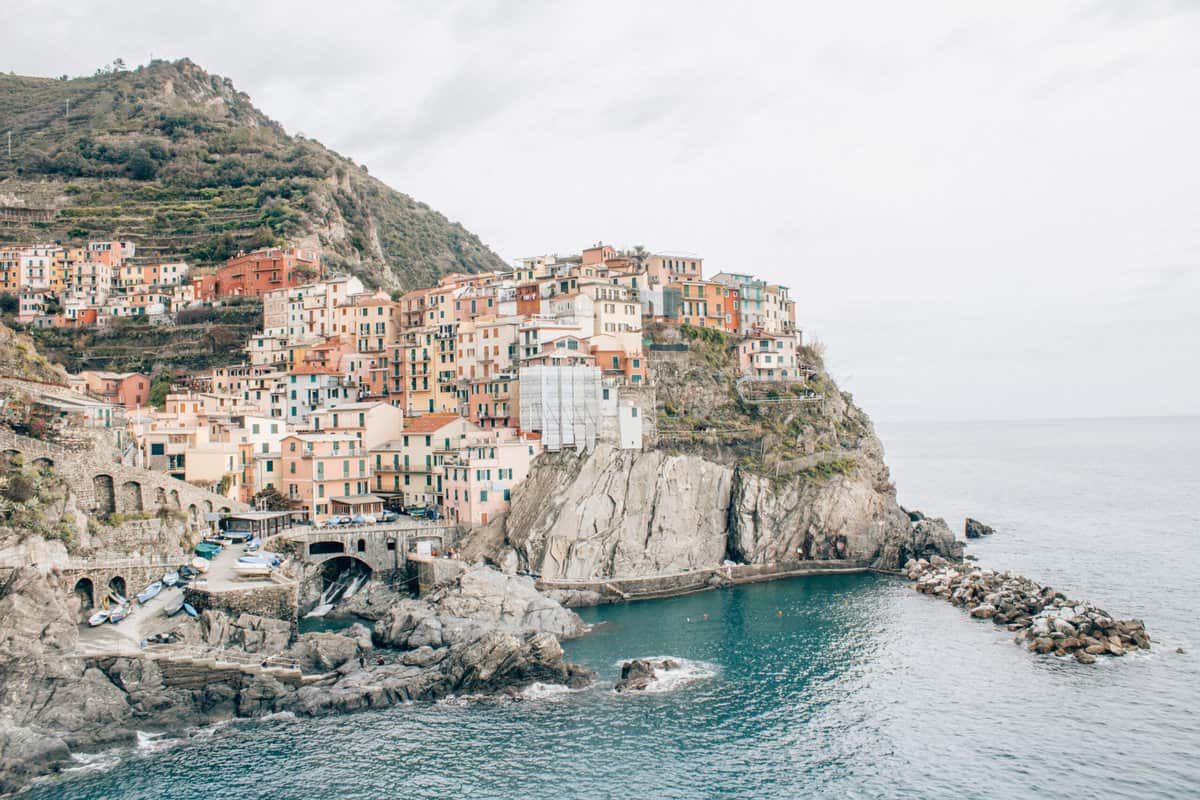
Cinque Terre Travel Guide
You. Me. And the big, blue Italian sea. Let’s fall hard for the Cinque Terre. Follow this Cinque T
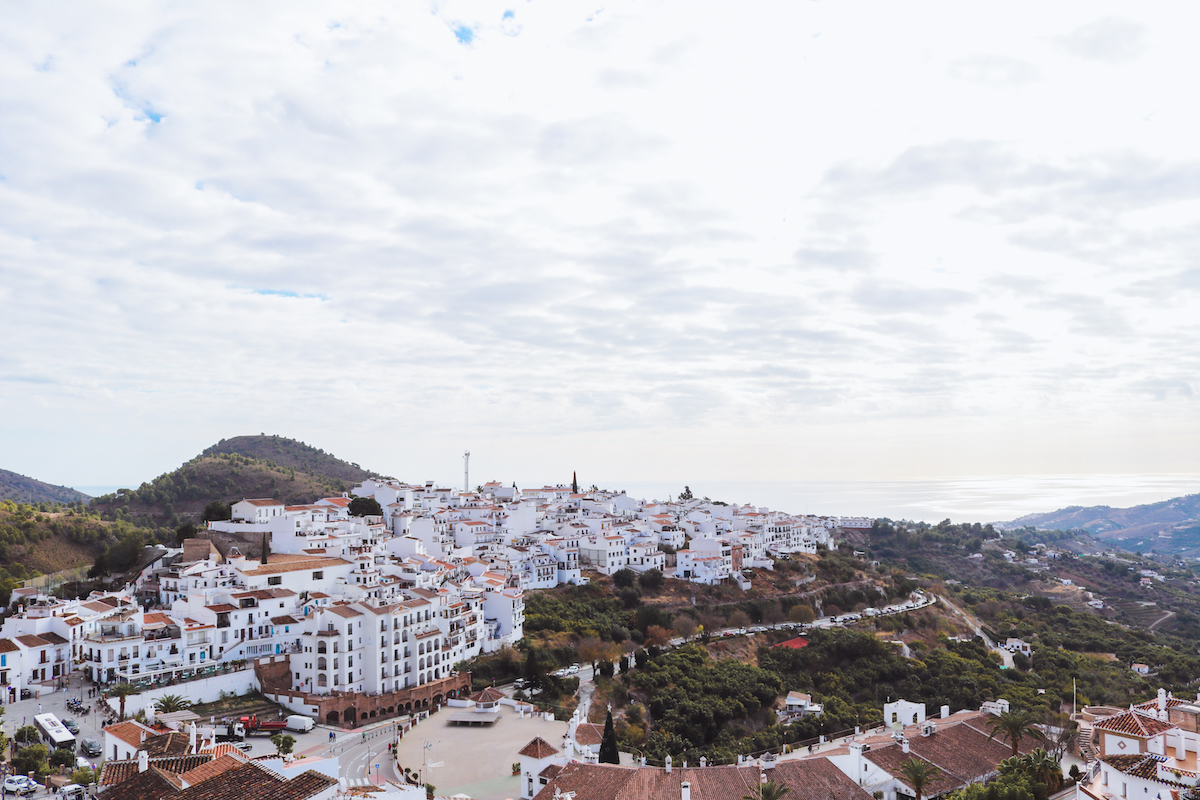
Top 3 Summer Destinations In Europe For 2023
Follow along, quick links.
@baggagegirls It’s Toxic Travel Tuesday, where we help you break up with toxic travel for good 💌 Slow travel is a growing trend in travel that we LOVE for its positive impact on the 🌎 For more sustainable travel tips, head to Baggagegirls.com 💌 xoxo #sustainabletraveltips #ecotok #sustainabletravel #traveltips #travelgirls #baggagegirls ♬ This Will Be (An Everlasting Love) - Natalie Cole

How to Travel to Italy on A Budget ($1000 or Less!)
February 02, 2021
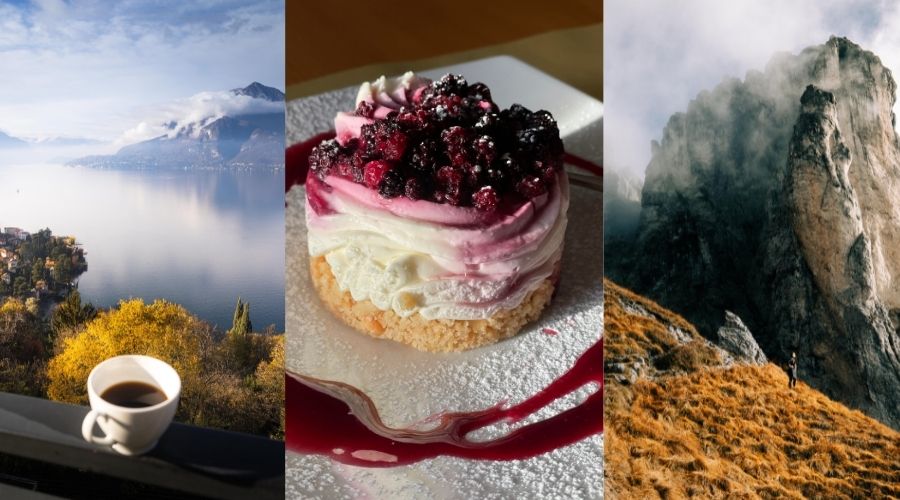
It surprises a lot of people when I say Italy is one of the most budget-friendly countries I have been to.
With that being said, I've also met people who have spent $10,000+ dollars in a single week traveling Italy.
I'm not sure I could do that if I tried because I'm damn good at finding deals. I'm also really good at helping others do it, too.
On my last trip to Italy, I went to a more luxurious section of the country called Lake Como. Most people automatically connect Lake Como to the famous actor George Clooney. It's true, this area is known for hosting the rich and the famous, but that doesn't mean it needs to be expensive.
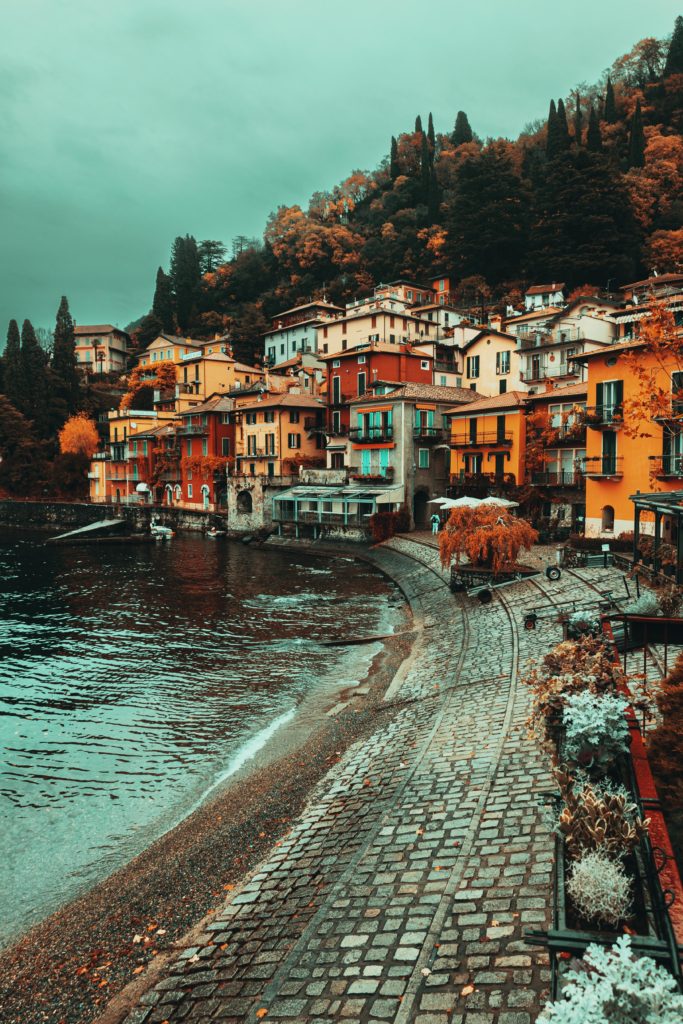
Does Italy on Budget Mean Experiencing Less?
Absolutely not. When I travel on a budget I always pick one area to splurge on. In Italy, I focused a majority of my budget on food and drink. And I'm not joking when I say we ate out 2-3 times a day on average. Not to mention the copious amounts of wine and cappuccino daily.
So What Does Italy on a Budget Look Like?
Well...it's easier to show you:

How to Travel Italy on a Budget: A Step-by-Step Guide
1. go in the off-season .
Tickets are always going to be more expensive during peak holiday months. With that being said, it's not a bad thing to travel to Italy in the slower months. If I'm being honest, Italy in the summer is one of my least favorite countries, while Italy in the fall/spring is absolutely magical.
Italy in July is hot and crowded. When visiting Cinque Terre in July, conductors were shoving us into the trains in order to get the doors to close. We were backpacking through Europe and planned to say at least two weeks in Italy, but we dipped out after four days due to crowds.
Slow season means empty Italian villages all to your, discounts on flights and accommodation, and the opportunity to experience the magic of one of the best countries in the world.
Tickets in peak season can easily be $1,500 dollars round trip.
We got our tickets in November for $550 round trip.
Our Airbnb in the peak season went for $350/night.
Our Airbnb in November was $197/night.
Here was the view from our balcony:
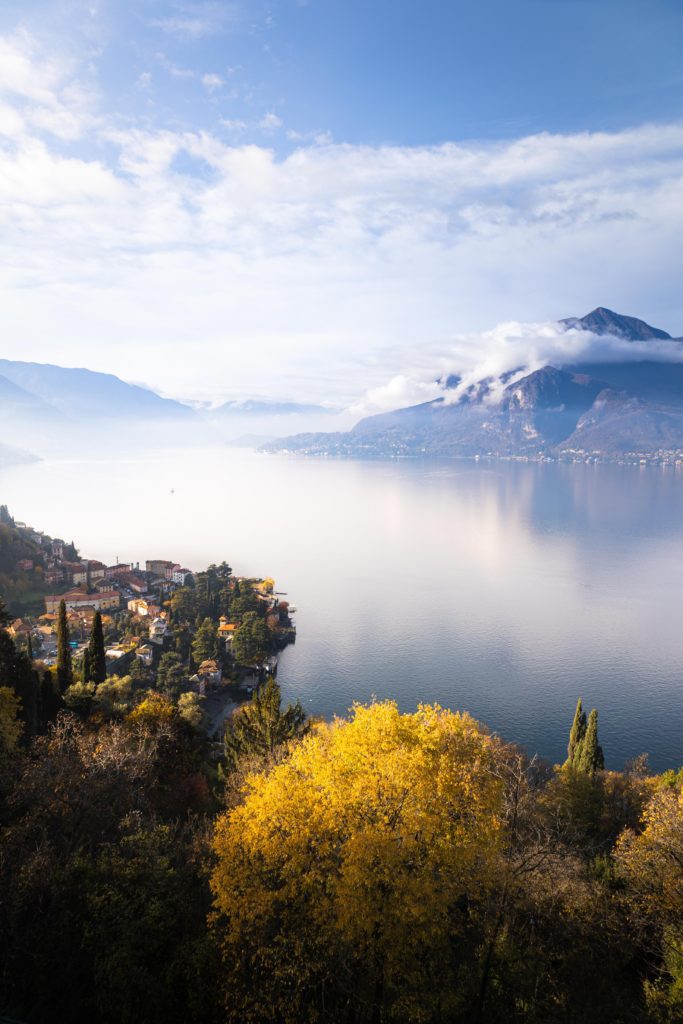
2. Calculate Estimated Cost Before Your Departure
This is something I do before every single trip. It allows me to look at the amount I have spent so far on flights, accommodation, etc. and therefore highlights my leftover budget for spending while on visiting. For example, this is what my pre-trip budget notes looked like for Italy:
Flight: $550
Accommodation: $287
Leftover: $162.5
Now, I did decide I wanted to spend a bit extra, so I added an additional $100 to my food fund, bringing my total spending budget for the week to be $262.50
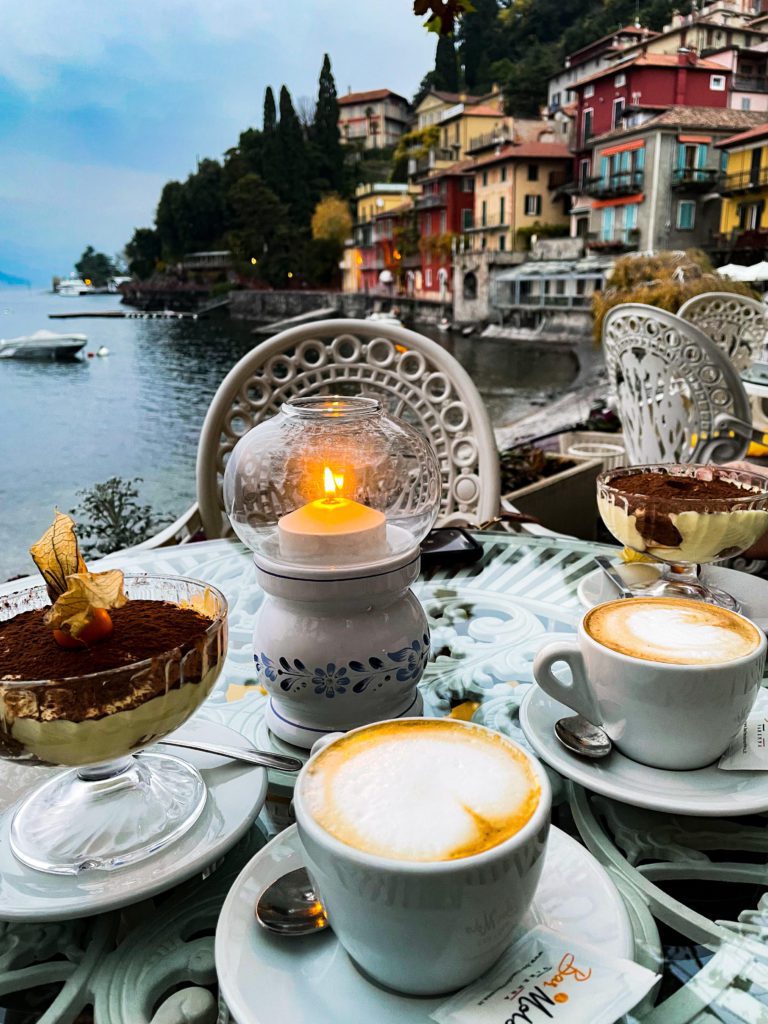
3. Avoid Eating in Super Touristy Areas
Food is always more expensive and less authentic in major tourist areas. That's because they are catering to the masses of travelers in the summer. All it takes it walked a couple of blocks down a scenic Italian side street to find something that is equally, if not more, delicious at half the cost.
Now, with my budget guides I also say stay clear of spending to much on alcohol, but Italy is the best place in the world to enjoy wine...SO ENJOY IT. A liter of wine (6 glasses) is only 12 Euro anyway.

4. Buy Yourself (Or Someone Else) ONE Nice Item
One of the biggest things I've learned while traveling is that snowglobes and tourist t-shirts are one of the biggest wastes of money. I can't tell you how many times I've bought some overpriced shitty souvenir only for it to sit in a forgotten corner or drawer the moment I got home.
If you are going to buy something: be picky. Remember whatever you buy has to come through customs on the way back. I usually try to keep whatever I buy small and under $40.
5. Take Part in Free Activities
When it comes to Italy on a budget, it's all about taking advantage of free activities, which are actually not that hard to find. Here is my go-to list of free things to do while traveling:
- Free Walking Tours
- Visiting Churches
- Sightseeing
- Garden/Park Walks
- Sunset Chasing
- Beach Days
- Read a Book a Cafe (OK this one costs like $2 but close enough)
- Farmers Markets
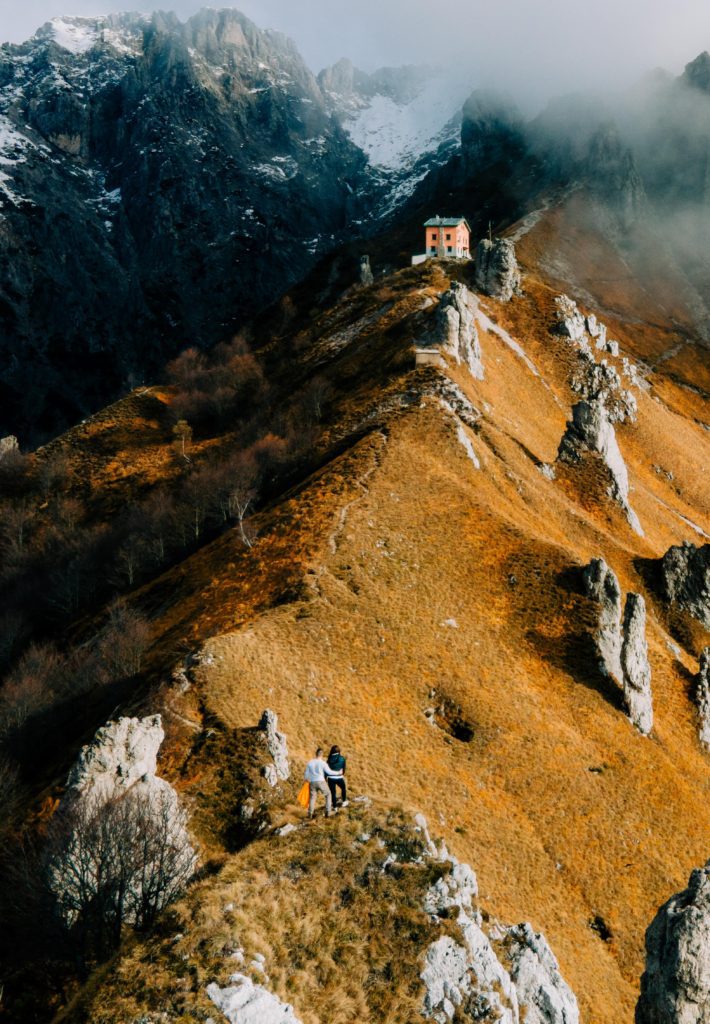
6. Pack Everything Into a Carry On
The lowest fare on a trip is always Basic Economy, which also does not come with free checked bags on international flights. Checking a bag one-way can easily cost $50. In order to avoid unexpected additional fees, I always back into a backpack (personal bag) and a carry-on. It might sound tough to do, but if I can do it carrying camera equipment, a drone, and all my other photography extras, you can do it! Not checking a bag also makes going through customs MUCH easier.
Coming back into the United States, those with a checked bag must pick their bag up and recheck it upon entry into the country. The lines for rechecking are often extremely long and stressful.
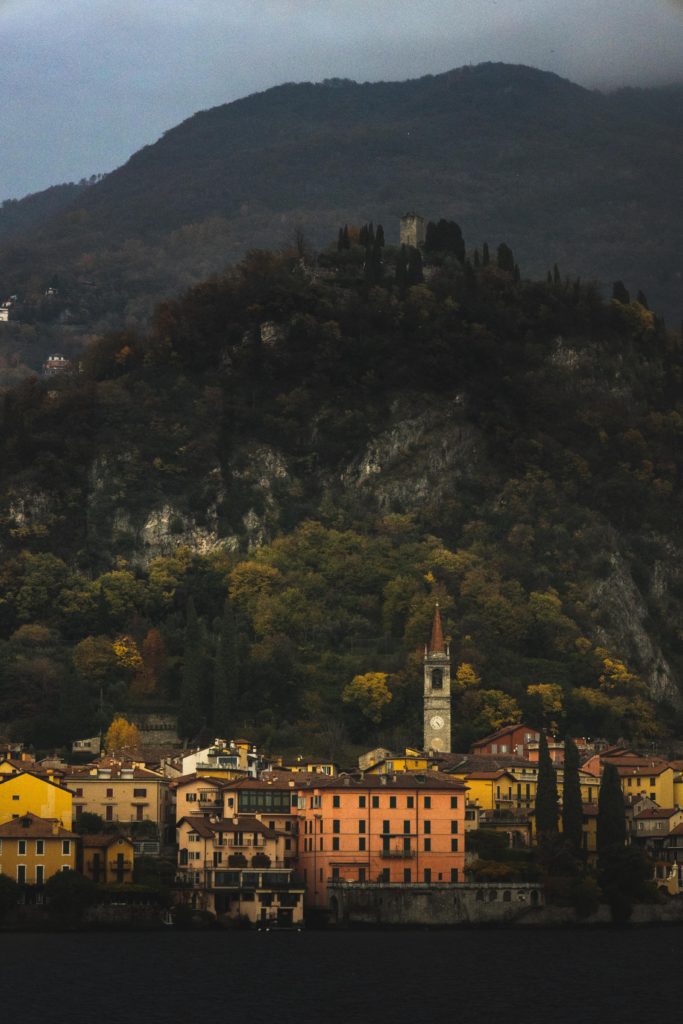
7. Avoid Upgrading
I know, I know, it might be tempting to upgrade to standard economy or pay the additional $60 to pick your seat on international trips, but to me, it is never worth it. I'm going to be uncomfortable and cramped no matter where I am in economy and I might as well be uncomfortable with more money in my pocket at the end of the trip. LOL
Extra Tip:
Create a 'Travel Fund' Before Your Trip
I use the app Digit, which automatically withdrawals money from your bank account and puts it into a designated savings account. The app monitors how much you spend on bills average and withdrawals amounts based on how much is currently in your account.
I love this app because it never withdrawals money if your account gets too low but will automatically add money back into your account if it detects it's been overdrawn in another way.
To be honest, I never notice when it takes money out of my account. But having a fund of a few hundred extra dollars set aside for a trip ALWAYS makes a big difference.

At any given moment, Shalee is either lost, hunting for ice cream, or obsessively planning her next adventure.
Born and raised in rural Michigan, she began exploring the shores of Great Lakes as a teen, often sleeping in her car to save money. Eventually, her urge to explore pushed beyond her Midwest borders. Today, Shalee shares her tips and stories to thousands of readers interested in adventure and outdoor tourism. Her pack now includes two spunky hiking cats and her partner, Josh. Learn more about her here .
Join the Adventure
Thanks for subscribing! Please check your email for further instructions.
shaleewanders

A Complete Guide to Road Tripping Western Scotland
I'm 26 and I've Traveled the World. Here's How I Afford it.
The Michigan Bucket List
Everything You Need to Know About the Eurail Pass
Hi this keyna. I’m Claudia neighbor and she says hi… She wants me to type this on my phone.. This is a great blog she says and she is very proud of you.. I love shalee .we’re still browzing
Leave a Comment Cancel Reply
This site uses Akismet to reduce spam. Learn how your comment data is processed .
Privacy Overview
Winter is here! Check out the winter wonderlands at these 5 amazing winter destinations in Montana
- Plan Your Trip
- Budget Travel
How To Travel Italy On A Budget
Published: October 14, 2023
Modified: December 28, 2023
by Ginelle Sills
- Hotel Reviews
- Travel Destinations
- Travel Guide
- Travel Tips
Introduction
Italy is a country known for its rich history, stunning architecture, delicious cuisine, and breathtaking landscapes. It’s a dream destination for many travelers, but it’s no secret that exploring Italy can be expensive. However, with some careful planning and budgeting, it is possible to experience the beauty and charm of Italy without breaking the bank.
In this article, we will provide you with valuable tips and insights on how to travel Italy on a budget. From the best time to visit, transportation options, accommodation choices, to money-saving tips and more, we have got you covered.
Whether you are a seasoned traveler or planning your first trip to Italy, this guide will give you all the information you need to make the most of your budget and have an unforgettable experience in the land of pasta, art, and romance.
So, let’s dive in and discover how to explore Italy on a budget without compromising on the quality of your journey.
Best Time to Visit Italy
Italy is a year-round destination, but the best time to visit depends on your preferences and priorities. Consider the following factors when planning your trip:
- Peak Season: The peak tourist season in Italy is from June to August. During these months, the weather is warm and sunny, but popular destinations are crowded, and prices for accommodations and attractions are high. If you don’t mind the crowds and want to experience the vibrant atmosphere, this can be a good time to visit.
- Shoulder Season: The shoulder seasons of spring (April to May) and fall (September to October) are ideal for budget travelers. The weather is pleasant, the crowds are thinner, and prices are generally lower. You can still enjoy sunny days and explore popular attractions without the long lines.
- Off-Season: Winter (November to March) is considered the off-season in Italy. While some popular tourist sites might have shorter opening hours or closures, this can be a great time to visit if you’re looking for lower prices and fewer tourists. Cities like Rome, Florence, and Venice are still bustling with activity, and you can enjoy a more authentic experience.
Consider your preferred travel style and the specific activities you want to engage in when choosing the best time to visit Italy. Keep in mind that weather can vary across the country, so it’s essential to research the climate of the specific regions you plan to visit.
Next, let’s explore the transportation options available in Italy and how you can save money on getting around the country.
Transportation Options
Italy has a well-developed transportation system that makes it easy to travel between cities and explore different regions. Here are some budget-friendly transportation options to consider:
- Trains: Trains are a popular and convenient mode of transportation in Italy. The national rail network, Trenitalia, connects major cities and towns, allowing you to explore different regions easily. Booking tickets in advance can help you secure the best fares, and opting for regional trains instead of high-speed trains can save you money.
- Buses: Buses are another affordable way to travel within Italy. Companies like FlixBus and Megabus offer comfortable rides at budget-friendly prices. While bus journeys may take longer than trains, they can be a good option for shorter distances or less frequented destinations.
- Car Rentals: Renting a car gives you the freedom to explore off-the-beaten-path destinations at your own pace. However, be aware that driving in major cities like Rome or Florence can be challenging due to traffic and limited parking options. If you plan to rent a car, compare prices from different rental companies and book in advance to secure the best deals.
- Local Transportation: Once you arrive in a city, make use of local transportation systems such as buses, trams, and metro trains to get around. These options are usually more affordable than taxis and offer a chance to experience the local culture.
Consider a combination of transportation options to optimize costs and efficiency during your trip. For longer distances, trains are often the most convenient and economical choice, while buses and local transportation are great for shorter journeys and exploring within cities.
Now that you know how to get around in Italy, let’s move on to finding budget-friendly accommodation options.
Accommodation
When it comes to accommodation in Italy, there are plenty of options to suit various budgets. Consider the following tips to find affordable places to stay:
- Hostels: Hostels are a popular choice for budget travelers and offer the chance to meet fellow adventurers. Look for hostels with good reviews, central locations, and amenities such as free Wi-Fi and common areas.
- Guesthouses and Bed & Breakfasts: Guesthouses and B&Bs are often more affordable than hotels and provide a cozy and personalized experience. These accommodations can be found in both cities and smaller towns, offering a homely atmosphere and a chance to interact with locals.
- Rental Apartments: Renting an apartment can be a cost-effective option, especially for longer stays or if you’re traveling with a group. Websites like Airbnb, Booking.com, and HomeAway offer a wide range of apartments to choose from, allowing you to have a kitchen to cook some of your meals and save money on dining out.
- Camping: If you enjoy the outdoors, consider camping in Italy’s beautiful countryside. There are numerous campsites, some with basic facilities and others with more amenities. Camping is a budget-friendly option and allows you to enjoy nature while saving on accommodation costs.
When searching for accommodation, remember to compare prices, read reviews, and consider the location. Staying slightly outside the city center can often result in lower prices, while still providing easy access to attractions through public transportation.
Now that you know where to lay your head at night, let’s move on to the exciting part: the food and dining experience in Italy.
Food and Dining
Italy is renowned for its delicious cuisine, and experiencing the local food is an essential part of any trip to the country. Here are some tips to enjoy the amazing Italian food while staying within your budget:
- Explore Local Markets: Visit local markets to buy fresh produce, cheese, bread, and other ingredients to create your own meals. Not only will this save you money, but it also allows you to immerse yourself in the local culture and flavors.
- Picnics and Takeaways: Instead of eating in restaurants for every meal, enjoy picnics in parks or grab some takeout from local eateries. Many places offer budget-friendly options like pizza al taglio (pizza by the slice) or panini, which you can enjoy while exploring the city.
- Try Street Food: Italy is home to delicious street food options that are both tasty and affordable. From arancini (fried rice balls) in Sicily to supplì (fried risotto balls) in Rome, you can indulge in local specialties without breaking the bank.
- Eat like the Locals: Opt for trattorias and osterias, which are small, family-run eateries that offer traditional, home-style Italian dishes at reasonable prices. Avoid dining in touristy areas, as prices tend to be higher.
- Lunch Specials: Many restaurants in Italy offer special lunch menus, known as “menu del giorno” or “pranzo fisso,” which provide a fixed-price meal with multiple courses. These menus are usually more affordable than ordering à la carte during dinner.
Remember to indulge in local specialties like pasta, gelato, and regional wines, as they are an integral part of the Italian food experience. By being mindful of your dining choices and seeking out budget-friendly options, you can savor the flavors of Italy without straining your wallet.
Next, let’s explore some of the top sights and activities in Italy that won’t break the bank.
Sightseeing and Activities
Italy is a treasure trove of historical landmarks, architectural marvels, and beautiful natural landscapes. Here are some tips to make the most of your sightseeing and activities while staying on a budget:
- Free Attractions: Take advantage of the many free attractions that Italy has to offer. From the grandeur of St. Peter’s Basilica in Vatican City and the iconic Trevi Fountain in Rome to the historic city centers of Florence and Venice, there are plenty of stunning landmarks and neighborhoods to explore without spending a dime.
- Museums and Galleries: Many museums and galleries in Italy have discounted or free admission days. Plan your visits accordingly to take advantage of these opportunities to explore world-renowned art collections and historical artifacts without breaking the bank.
- Outdoor Activities: Italy’s diverse landscapes make it ideal for outdoor activities. Take a hike in the picturesque Cinque Terre, explore the stunning Amalfi Coast, or enjoy a bike ride in the Tuscan countryside. These activities allow you to immerse yourself in the natural beauty of Italy without spending a fortune.
- Guided Walking Tours: Joining a guided walking tour is a great way to explore the cities and learn about their history and culture. Many cities offer free or low-cost walking tours, led by knowledgeable guides, who share interesting stories and provide insights into the local attractions.
- Festivals and Events: Check the calendar for festivals and events taking place during your visit. Italy is known for its vibrant festivals, including the Venice Carnival, the Siena Palio horse race, and various food and wine festivals. These events often offer free or affordable entertainment and a chance to experience the local traditions and celebrations.
Remember to do your research, plan ahead, and prioritize the attractions and activities that are most important to you. By taking advantage of free attractions, discounted admissions, and exploring the natural beauty of Italy, you can have a fulfilling and unforgettable experience without breaking the bank.
Now, let’s move on to some money-saving tips that can help you stretch your budget even further.
Free or Low-Cost Attractions
Italy offers a plethora of free or low-cost attractions that allow you to experience the beauty and culture of the country without straining your budget. Here are some top recommendations:
- Piazzas and Public Spaces: Italy’s piazzas, or town squares, are vibrant hubs of activity and often offer free entertainment. Visit Piazza Navona in Rome, Piazza del Campo in Siena, or Piazza San Marco in Venice to soak up the atmosphere, people-watch, and experience the beauty of these iconic public spaces.
- Churches and Cathedrals: Many churches and cathedrals in Italy are architectural marvels and offer free or low-cost entry. Visit St. Peter’s Basilica in Vatican City, the Duomo di Milano in Milan, or the Basilica di Santa Croce in Florence to admire stunning artwork and experience the spiritual significance.
- City Walks: Take a self-guided walking tour through the historic centers of Italian cities. Wander through the narrow streets of Venice, explore the ancient ruins in Rome’s city center, or stroll along the Ponte Vecchio in Florence. These walks offer a chance to discover hidden gems, stunning architecture, and local culture.
- Botanical Gardens and Parks: Enjoy the beauty of nature by exploring botanical gardens and parks. Villa Borghese in Rome, Giardino di Boboli in Florence, and Villa Cimbrone Gardens in Ravello are just a few examples of enchanting green spaces where you can relax and enjoy nature’s tranquility.
- Local Festivals and Events: Keep an eye out for local festivals and events that offer free or affordable entertainment. From street parades and live music performances to food tastings and cultural exhibitions, these events provide a glimpse into the local traditions and celebrations.
Be sure to check the opening hours and any restrictions before visiting these attractions. Additionally, some attractions may have optional paid activities or exhibitions within them, so it’s wise to plan accordingly and allocate your budget accordingly.
Now that we have explored the free and low-cost attractions, let’s move on to some money-saving tips that can help you make the most of your budget in Italy.
Money-Saving Tips
Traveling on a budget doesn’t mean sacrificing the quality of your experience. With these money-saving tips, you can make the most of your trip to Italy without breaking the bank:
- Plan and Book in Advance: Research and book your flights, accommodations, and major attractions in advance to secure the best prices. Last-minute bookings can be costly, so planning ahead is key to saving money.
- Travel during the Shoulder Season: Consider visiting Italy during the shoulder seasons of spring and fall when prices are generally lower, and the crowds are thinner. You can still enjoy pleasant weather and explore popular attractions without the peak season prices.
- Use Public Transportation: Take advantage of Italy’s efficient public transportation system, such as trains and buses, to get around. It’s often more affordable than renting a car and offers the opportunity to mingle with locals and experience the local culture.
- Cook Some of Your Meals: Save money on dining out by preparing some of your meals. Visit local markets and grocery stores to buy fresh ingredients and enjoy picnics or cook in your accommodation’s kitchen. This allows you to experience the local food culture and keep your budget in check.
- Stay Outside the City Center: Accommodation prices tend to be cheaper if you stay slightly outside the city center. Look for accommodations that are well-connected by public transportation, so you can easily reach the main attractions while enjoying more affordable rates.
- Research Free or Discounted Days: Many museums and attractions offer discounted or free entry on specific days or during certain hours. Take advantage of these opportunities to explore renowned sites without spending a fortune.
- Bring a Reusable Water Bottle and Snacks: Bottled water and snacks can quickly add up to your expenses. Instead, carry a reusable water bottle and refill it at public fountains, which are abundant in Italian cities. Pack some snacks for when you’re on the go to avoid impulse purchases.
- Avoid Tourist Traps: Touristy areas, especially around major attractions, tend to be more expensive. Venture slightly off the beaten path to find local restaurants, cafes, and shops that offer more affordable prices and an authentic experience.
- Use Free Wi-Fi: Save on data charges by taking advantage of free Wi-Fi offered in cafes, restaurants, and accommodation. This allows you to stay connected and avoid excessive roaming charges.
- Consider a Travel Insurance Plan: While it may seem counterintuitive to save money, having travel insurance can protect your investment in case of unforeseen events such as trip cancellations or medical emergencies. Compare different travel insurance plans to find one that suits your needs and budget.
By incorporating these tips into your travel planning and expenses management, you can make your budget go further and still have an incredible experience in Italy without overspending.
Now that we have covered money-saving tips, let’s briefly discuss the importance of travel insurance for your trip to Italy.
Travel Insurance
When planning your trip to Italy, it is important to consider purchasing travel insurance. While it may seem like an added expense, travel insurance provides valuable protection and peace of mind throughout your journey. Here are some reasons why travel insurance is essential:
- Trip Cancellation and Interruption: Travel insurance can reimburse you for non-refundable expenses if your trip is cancelled or cut short due to covered reasons such as illness, injury, or other unforeseen circumstances. This can help you recover the costs of flights, accommodations, and pre-paid activities.
- Medical Emergencies: In the event of a medical emergency while traveling in Italy, travel insurance can cover medical expenses, including hospital stays, doctor visits, and medications. Additionally, it can provide emergency medical evacuation to a nearby hospital or back home, ensuring you receive the necessary care without incurring high costs.
- Delayed or Lost Baggage: If your luggage is delayed, lost, or stolen during your trip, travel insurance can offer compensation to help you replace essential items and cover the cost of necessary purchases until your belongings are returned or replaced.
- Personal Liability: Travel insurance can provide coverage in case you accidentally cause damage to property or injure someone during your trip. This can protect you from potential legal expenses and claims against you.
- 24/7 Travel Assistance: Most travel insurance plans offer 24/7 travel assistance services, which can be invaluable during emergencies. These services can help with emergency cash transfers, providing emergency travel arrangements, and offering guidance in difficult situations.
Before purchasing travel insurance, carefully review the coverage details and exclusions of different plans. Consider factors such as the duration of your trip, the activities you plan to engage in, and any pre-existing medical conditions you may have. Compare prices and coverage options to find a travel insurance plan that suits your needs and budget.
Remember, unexpected events can happen during your travels, and having travel insurance can provide financial protection and support when you need it the most. It is a worthwhile investment to ensure a smooth and worry-free journey in Italy.
Now that we have covered the importance of travel insurance, let’s wrap up our guide on how to travel Italy on a budget.
Traveling to Italy on a budget is entirely possible with some careful planning and budgeting. By considering the best time to visit, utilizing affordable transportation options, opting for budget-friendly accommodations, enjoying local cuisine without breaking the bank, exploring free or low-cost attractions, following money-saving tips, and ensuring you have travel insurance coverage, you can have an amazing experience in Italy without overspending.
Remember to research and plan in advance, compare prices, and take advantage of discounts and free-entry days at attractions. Embrace the local culture by trying street food, shopping at local markets, and engaging in free activities such as exploring city centers, gardens, and public spaces.
Italy offers an abundance of historical sites, stunning landscapes, mouthwatering food, and vibrant culture. By being mindful of your expenses and making smart choices, you can create lasting memories and have a fulfilling trip that stays within your budget.
So go ahead, start planning, and get ready to embark on a budget-friendly adventure in the captivating country of Italy. Buon viaggio!

- Privacy Overview
- Strictly Necessary Cookies
This website uses cookies so that we can provide you with the best user experience possible. Cookie information is stored in your browser and performs functions such as recognising you when you return to our website and helping our team to understand which sections of the website you find most interesting and useful.
Strictly Necessary Cookie should be enabled at all times so that we can save your preferences for cookie settings.
If you disable this cookie, we will not be able to save your preferences. This means that every time you visit this website you will need to enable or disable cookies again.
- Travel Planning Guide
Italy Travel Budget - Visit Italy on a Budget or Travel in Style
- Italy Costs

- Is Italy Expensive?
- How much does a trip to Italy cost?
- Italy On-Your-Own Itineraries
- Northern Italy
- Central Italy
- Southern Italy
- Italy Hotel Prices
- Italy Cities: Hotel Prices by City
- Best Hotels for Skiing in Italy
- Best Business Hotels in Italy
- Best Adults Only Hotels in Italy
- Best Hotels for a Weekend Getaway in Italy
- Best Hotels for First Time Visitors in Italy
- Best Hotels for One Week in Italy
- Best Cheap Hotels in Italy
- Best Hotels for Scuba Diving in Italy
- Best Party Hotels in Italy
- Best Romantic Hotels for Couples in Italy
- Best Hotels for One Night in Italy
- Best Beach Hotels in Italy
- Best Hotels Near the Airport in Italy
- Best Pet-Friendly Hotels in Italy
- Best Family-Friendly Hotels in Italy
- Best Luxury Hotels in Italy
- Hostel Prices & Reviews
- Italy Activities
- Italy Tour Prices
- The Best Family-Friendly Tours to Italy
- The Best Hiking & Trekking Tours in Italy
- The Best Historical Tours in Italy
- The Best 10-Day Tours in Italy
- The Best One Week (7-Day) Tours in Italy
- The Best 3-Day Tours in Italy
- The Best 2-Week Tours in Italy
- The Best Bicycle Tours in Italy
- Tours for Outdoor and Nature Lovers in Italy
- The Best Christmas & New Years Tours in Italy
- The Best Coach Bus Tours in Italy
- The Best Adventure Tours to Italy
- The Best Eco Tours in Italy
- The Best Train & Rail Tours in Italy
- The Best Thrill-Seeking Tours in Italy
- The Best Sightseeing Tours in Italy
- The Best Cultural Tours in Italy
- The Best Vineyard & Wine Tours in Italy
- The Best Food and Culinary Tours in Italy
- The Best Music Tours in Italy
- The Best Romantic Tours for Couples in Italy
- The Best Walking Tours in Italy
- The Best Tours Under $1000 in Italy
- The Best Luxury Tours to Italy
- The Best Budget Tours to Italy
- The Best Tours for Seniors to Italy
- The Best Contiki Tours to Italy
- The Best G Adventures Tours to Italy
- Cinque Terre
- How much does it cost to travel to Italy? (Average Daily Cost)
- Italy trip costs: one week, two weeks, one month
How much do package tours cost in Italy?
Is italy expensive to visit.
- How much do I need for a trip to Italy?
- Accommodation, Food, Entertainment, and Transportation Costs
- Travel Guide
How much does it cost to travel to Italy?
You should plan to spend around $180 (€167) per day on your vacation in Italy. This is the average daily price based on the expenses of other visitors.
Past travelers have spent, on average for one day:
- $49 (€45) on meals
- $29 (€26) on local transportation
- $184 (€169) on hotels
A one week trip to Italy for two people costs, on average, $2,526 (€2,332) . This includes accommodation, food, local transportation, and sightseeing.
All of these average travel prices have been collected from other travelers to help you plan your own travel budget.
- Travel Style: All Budget (Cheap) Mid-Range Luxury (High-End)
- Average Daily Cost Per person, per day $ 180 € 167
- One Week Per person $ 1,263 € 1,166
- 2 Weeks Per person $ 2,526 € 2,332
- One Month Per person $ 5,413 € 4,996
- One Week For a couple $ 2,526 € 2,332
- 2 Weeks For a couple $ 5,052 € 4,663
- One Month For a couple $ 10,825 € 9,992
How much does a one week, two week, or one month trip to Italy cost?
A one week trip to Italy usually costs around $1,263 (€1,166) for one person and $2,526 (€2,332) for two people. This includes accommodation, food, local transportation, and sightseeing.
A two week trip to Italy on average costs around $2,526 (€2,332) for one person and $5,052 (€4,663) for two people. This cost includes accommodation, food, local transportation, and sightseeing.
Please note, prices can vary based on your travel style, speed, and other variables. If you're traveling as a family of three or four people, the price per person often goes down because kid's tickets are cheaper and hotel rooms can be shared. If you travel slower over a longer period of time then your daily budget will also go down. Two people traveling together for one month in Italy will often have a lower daily budget per person than one person traveling alone for one week.
A one month trip to Italy on average costs around $5,413 (€4,996) for one person and $10,825 (€9,992) for two people. The more places you visit, the higher the daily price will become due to increased transportation costs.
Organized tours are usually more expensive than independent travel, but offer convenience and peace of mind that your trip has been planned by a travel expert.
The average price for an organized tour package in Italy is $299 per day. While every tour varies by total price, length, number of destinations, and quality, this is the daily average price based on our analysis of available guided tours.
- Cycling in Sardinia 8 Days - 11 Destinations $ 1,360
- Ultimate Italy (Standard, 22 Days) 22 Days - 20 Destinations $ 4,749
Independent Travel
Traveling Independently has many benefits including affordabilty, freedom, flexibility, and the opportunity to control your own experiences.
All of the travel costs below are based on the experiences of other independent travelers.
Italy is a moderately priced destination to visit. It's about average with most other countries for travel costs. The prices for food, accommodation, and transportation are all fairly reasonable.
Within Europe, which is known to be an expensive region, Italy is moderately priced compared to the other countries. The overall cost of travel here is comparable to Andorra or the Netherlands.
For more details, see Is Italy Expensive?
How much money do I need for a trip to Italy?
The average Italy trip cost is broken down by category here for independent travelers. All of these Italy travel prices are calculated from the budgets of real travelers.
Accommodation Budget in Italy
Average daily costs.
Calculated from travelers like you
The average price paid for one person for accommodation in Italy is $92 (€85). For two people sharing a typical double-occupancy hotel room, the average price paid for a hotel room in Italy is $184 (€169). This cost is from the reported spending of actual travelers.
- Accommodation 1 Hotel or hostel for one person $ 92 € 85
- Accommodation 1 Typical double-occupancy room $ 184 € 169
Hotel Prices in Italy
Looking for a hotel in Italy? Prices vary by location, date, season, and the level of luxury. See below for options.
Find the best hotel for your travel style.
Actual Hotel Prices The average hotel room price in Italy based on data provided by Kayak for actual hotel rooms is $108. (Prices in U.S. Dollars, before taxes & fees.)
Kayak helps you find the best prices for hotels, flights, and rental cars for destinations around the world.
Recommended Properties
- Stunning Farmhouse In Passignano With Swimming Pool Budget Hotel - Kayak $ 163
- Grand Hotel Billia Luxury Hotel - Kayak $ 273
Local Transportation Budget in Italy
The cost of a taxi ride in Italy is significantly more than public transportation. On average, past travelers have spent $29 (€26) per person, per day, on local transportation in Italy.
- Local Transportation 1 Taxis, local buses, subway, etc. $ 29 € 26
Recommended Services
- Transfer package from Trapani airport to Favignana (transfer + hydrofoil ticket) Viator $ 95
- Transfer from Civitavecchia cruise port to Rome or FCO Viator $ 125
What did other people spend on Local Transportation?
Typical prices for Local Transportation in Italy are listed below. These actual costs are from real travelers and can give you an idea of the Local Transportation prices in Italy, but your costs will vary based on your travel style and the place where the purchase was made.
- Bus € 4.00
- Train to Naples € 14
- Taxi € 15
- Train to Lecce € 44
- Bus Ticket € 1.60
- Local Bus Ticket € 4.20
- Bus From Airport € 6.00
- Ferry to Capri (Round Trip) € 35
Food Budget in Italy
While meal prices in Italy can vary, the average cost of food in Italy is $49 (€45) per day. Based on the spending habits of previous travelers, when dining out an average meal in Italy should cost around $20 (€18) per person. Breakfast prices are usually a little cheaper than lunch or dinner. The price of food in sit-down restaurants in Italy is often higher than fast food prices or street food prices.
- Food 2 Meals for one day $ 49 € 45
Recommended
- Sicilian Cooking Class Viator $ 100
- Small Group Positano Cooking Class Gnocchi Tiramisù with Drinks Viator $ 146
What did other people spend on Food?
Typical prices for Food in Italy are listed below. These actual costs are from real travelers and can give you an idea of the Food prices in Italy, but your costs will vary based on your travel style and the place where the purchase was made.
- Espresso € 2.00
- Dinner € 58
- Bread € 1.00
- Coffee € 2.00
- Snacks € 4.00
- Cheese and bread € 10
- Dinner € 25
- Dinner € 35
Entertainment Budget in Italy
Entertainment and activities in Italy typically cost an average of $28 (€26) per person, per day based on the spending of previous travelers. This includes fees paid for admission tickets to museums and attractions, day tours, and other sightseeing expenses.
- Entertainment 1 Entrance tickets, shows, etc. $ 28 € 26
Recommended Activities
- Visit in Pompeii - Pompeii Private Tour with Ada Viator $ 205
- Golf Cart Driving Tour: Rome City Highlights in 2.5 hrs Viator $ 104
What did other people spend on Entertainment?
Typical prices for Entertainment in Italy are listed below. These actual costs are from real travelers and can give you an idea of the Entertainment prices in Italy, but your costs will vary based on your travel style and the place where the purchase was made.
- Archaeology Museum of Bologna (for 2) € 12
- National Gallery Museum Bologna (for 2) € 12
- Food Tour (for 2) € 31
- Hop-on-Hop-off Bus Tour (for 2) € 67
- Wine Tasting Tour (for 2) € 115
- Juliet's House Entry € 4.00
- Verona Card € 10
- Chair & Umbrella at Beach € 10
Tips and Handouts Budget in Italy
The average cost for Tips and Handouts in Italy is $14 (€12) per day. The usual amount for a tip in Italy is 5% - 15% .
- Tips and Handouts 1 For guides or service providers $ 14 € 12
Scams, Robberies, and Mishaps Budget in Italy
Unfortunately, bad things can happen on a trip. Well, you've just got to deal with it! The average price for a scam, robbery, or mishap in Italy is $48 (€44), as reported by travelers.
- Scams, Robberies, and Mishaps 1 $ 48 € 44
Alcohol Budget in Italy
The average person spends about $18 (€17) on alcoholic beverages in Italy per day. The more you spend on alcohol, the more fun you might be having despite your higher budget.
- Alcohol 2 Drinks for one day $ 18 € 17
- Sorrento Food & Wine Tour - 'Taste of Sorrento' Viator $ 115
- Brunello Wine Tour and Val D'Orcia Landscape Viator $ 243
What did other people spend on Alcohol?
Typical prices for Alcohol in Italy are listed below. These actual costs are from real travelers and can give you an idea of the Alcohol prices in Italy, but your costs will vary based on your travel style and the place where the purchase was made.
- Beer € 10
- Beer € 2.00
- Beer € 4.00
- Wine € 6.00
- Bottle of Wine € 11
- Bottle of Limoncello € 16
- Beer € 2.56
- Glass of Local Wine € 2.90
Water Budget in Italy
On average, people spend $4.55 (€4.20) on bottled water in Italy per day. The public water in Italy is considered safe to drink.
- Water 2 Bottled water for one day $ 4.55 € 4.20
Related Articles
Italy on a budget.
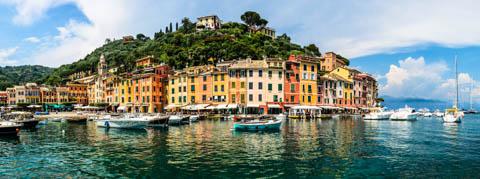
At A Glance
- Train travel can be expensive in Italy. Costs are generally comparable to what you will find elsewhere in Europe. You'll usually get the best prices if you book your tickets in advance. There are discount passes available, but these passes usually come with limitations and requirements, so they are rarely worth the deal.
- Southern Italy is less expensive than northern Italy. It's also less touristy. If you're looking to save some money and get off the beaten path, head to the south where your money will go farther and you'll see a whole different side to the country.
- You'll save money on food if you have a filling lunch in a restaurant and then prepare a picnic for dinner. There are many great markets where you can pick up Italian cheeses and breads as well as regional wine for a good price. Even if you don't have access to a kitchen, you can turn these items into and excellent meal.
- Most people visit Florence, Rome and Venice during their trip to Italy. Pick at least one small town to visit that is off the beaten path. Spend a day or two exploring its streets and neighborhoods and you'll leave with a whole new perspective on this country.
- Avoid doing a tour. Italy is easily visited independently. Transportation is excellent and the tourist infrastructure is well established. There is really no need to visit this country as part of a package tour.
Top Tourist Attractions
Popular foods, more related articles.
We've been gathering travel costs from tens of thousands of actual travelers since 2010, and we use the data to calculate average daily travel costs for destinations around the world. We also systematically analyze the prices of hotels, hostels, and tours from travel providers such as Kayak, HostelWorld, TourRadar, Viator, and others. This combination of expenses from actual travelers, combined with pricing data from major travel companies, gives us a uniqe insight into the overall cost of travel for thousands of cities in countries around the world. You can see more here: How it Works .
Subscribe to our Newsletter
By signing up for our email newsletter, you will receive occasional updates from us with sales and discounts from major travel companies , plus tips and advice from experienced budget travelers!

Search for Travel Costs
Some of the links on this website are sponsored or affiliate links which help to financially support this site. By clicking the link and making a purchase, we may receive a small commission, but this does not affect the price of your purchase.
Travel Cost Data
You are welcome to reference or display our travel costs on your website as long as you provide a link back to this page .
A Simple Link
For a basic link, you can copy and paste the HTML link code or this page's address.
Travel Cost Widget
To display all of the data, copy and paste the code below to display our travel cost widget . Make sure that you keep the link back to our website intact.
- Privacy / Terms of Use
- Activities, Day Trips, Things To Do, and Excursions
TRAVEL GUIDES
Popular cities, explore by region, featured guide.

Japan Travel Guide
Destinations.

A Creative’s Guide to Thailand
Creative resources, photography, videography, art & design.

7 Tips to Spice up Your Photography Using Geometry
GET INVOLVED
EXPERIENCES

#PPImagineAZ Enter to Win a trip to Arizona!
The journal, get inspired, sustainability.

How to Be a More Responsible Traveler in 2021
Budget travel , europe , guides , italy , travel stories, how to visit italy on a budget.

- Published November 1, 2020
Italy’s dynamic and one-of-a-kind offerings make it a must-visit destination for travelers around the globe. However, high-season flight prices, over-priced meals, and steep accommodation can be limiting factors for hopeful visitors. Since no one should have to forgo the wonders of Italy just because they’re on a budget, we’ve created a helpful guide to saving some cash while visiting the Bel Paese (beautiful country).
Read more about Italy with our food guide , list of the best small towns , and even where to go on literary tours around the Elena Ferrante Naples novels!

When to Visit
While you may have Lizzie McGuire-esque ideas of how your Italian vacation will play out (it’s summer, you meet an Italian pop star, etc. etc.…), visiting during the shoulder season will help you save some cash. That may mean sacr ificing a summer under the Tuscan sun, but your pockets will thank you. Plus, the country has a lot to offer during both shoulder seasons (April to mid-June and September to October) as well as the off-season (November to March). The most obvious benefit is a slash in airfare prices from the U.S., which can soar to $1,500 during high season and drop to the low hundreds during quieter months. Additionally, hotels and bed and breakfasts often lower their rates during these times to turn a profit with sparser crowds. So, consider putting off your vacation a few weeks — or even months — and you’ll see returns.
Because Italy is the birthplace of many of our favorite dishes (gelato and pasta and pizza, oh my!), chances are, you’re going to want to sample as much of it as possible — and that adds up fairly quickly. If you’re confident in your own culinary prowess, renting an apartment or a house with a kitchen is a great way to save cash. However, if you’re looking for a catered Italian experience, consider these tips.
Coffee Clamber
Ordering a morning cappuccino is a must and truly an experience in any Italian city, so we’re not going to deprive you of that. But do take our advice and forgo sitting. It’s true: if you sip your drink while standing at the bar, you’ll save on the extra charge added for table service! It’s only a couple of euros, but if cappuccino turns into a morning ritual (and it should), that change can really add up.

Most Important Meal of the Day
Dinner in Italian cities can be a fairly pricey affair, with an entree (plus drink) costing you upwards of € 15. To combat this steep check, consider making your main meal of the day lunch instead. You’ll be able to find inexpensive deals for multi-course mid-day offerings at nicer restaurants — just don’t fall into the “still or sparkling” trap. Your answer should always be “tap.” The selection will save you a handful of euros, and it’s also interesting to note that Italy is known for its incredibly fresh tap water. Don’t believe us? It’s said to be the secret behind the country’s delicious wines.
Picnic Party
Visiting Italy with a minimal food budget just means that you have to get creative at times. Those visiting during periods of pleasant weather should employ the picnic strategy whenever possible. Seek out a local market and fill up on an assortment of Italian breads, pizzas, produce, cheese, and fruit. Grab a blanket and head to the nearest park or piazza, and there you have it: a delicious breakfast, lunch, or dinner for a fraction of what you would have paid at a sit-down establishment. Plus, you’ll get some sun and an opportunity to people-watch!

Wine and Dine
It can be hard not to indulge while in Italy — after all, it is the land of wine. But instead of visiting a bar or ordering multiple glasses of this staple beverage at dinner (both practices will run your bill up considerably), try relegating your merriment to aperitivo , a pre-dinner drink served alongside munchies at most restaurants in the early evening. If you’ve followed our earlier suggestion and made lunch your primary meal, you can likely get away with aperitivo as supper, and you’ll only end up spending € 8 or € 10 for a cocktail plus a spread of goodies that includes sausages, cheeses, breads, fruits, and finger sandwiches.
Where to Go
Visitors short on change should flee the cities (sad, but true). While Italian centers like Milan , Rome , and Florence have higher price points and encourage increased spending, countryside towns and villages offer more budget-friendly experiences without skimping on charm, history, or culinary goodness. Visitors to Rome might escape to Castel Gandolfo, Tivoli, and Frascati; travelers in Milan should target the towns of Como, Lecco, Cremano, and Bergamo; and Florence-based budgeters can explore Lucca, Siena, and Prato. While some of these locales are more rustic than others, they’re all great options for travelers of modest budgets.

How to Travel
When sightseeing in Italy, it can be tempting to slide into the backseat of a cool cab after a long day, but instead of relying on taxis, Ubers, or other ride-sharing apps, resign yourself to the fact that public transport in Italy really is the best — and cheapest — way to go. (Rome and Milan, in particular, have incredible metro systems that are both efficient and easy to use.)
If you’re looking to travel across longer distances, you’re also in luck. Italy is known for its extensive system of trains (think TrenItalia or Italo ) and buses that link major cities, smaller towns, and quiet villages across the boot, from top to toe. When traveling within the country, do your research to ensure that you’re getting the best price and decide which class ticket your budget will allow. Tip: consider a splurge in warmer months as some train cars in lower-class cabins aren’t air-conditioned.

Where to Stay
In the major centers of Italy, it’s not difficult to fall prey to overpriced hotel offers specifically catered to clueless tourists. But we know better. Airbnbs are a safer bet, but you can often find cheaper options without wading into hostel territory (pun intended). Consider a regular B&B or a pensione , which sounds very Italian because it is. A rented room in a family home or apartment, a pensione is typically a comfortable and very inexpensive option. Though these family-run accommodations are getting harder to find, if you do stumble across one, remember that they’re a great, homey alternative to an unfamiliar, run-of-the-mill hotel room. Or, for a truly unique visit, research a convent or monastery stay. That’s right — you can stay in a historic religious building for a fraction of the cost that you might pay at a fancy hotel. But before you book, be sure to educate yourself on the institution’s rules, as some impose curfews and drinking restrictions.
Regardless of how you choose to spend your Italian vacation, know that you can do it for far less than you may have initially anticipated.
Interested in visiting other destinations on a budget? Check out our advice for traveling on a shoestring!
Header image by Karsten Wurth
Trending stories, the pursuit of self on south africa’s spectacular otter trail, two hours from: reykjavic, from the arabian sea to your plate: seafood in varkala , explore by region, explore by map.

SIGN UP TO OUR NEWSLETTER
Get your weekly dose of armchair travelling, straight to your inbox.
© Passion Passport 2024

How to Create a Budget for Italy Travel
euros || creative commons photo by Images of Money
When you’re contemplating a trip to Italy, the main things that will be constraints are time and money. Usually, people have more of one than the other – and chances are good that even if you’ve got money to spare, you’d rather not spend more than you have to. So budget questions are a big deal when you’re planning an Italy trip.
The thing is, answering those questions is really tricky. I can’t lay out one Italy travel budget that will work for everyone, nor can I answer every individual question that comes up. What I’ll try to do here, then, is help you set parameters for figuring out how much your Italy trip will cost, based on the type of trip you’re planning. I’ll also offer money-saving tips where I can, as well as let you know when I think splurges are warranted.
Keep in mind, however, that any actual figures I’m listing below are either estimates or may have changed between when I wrote them down and when you’re reading them. Use this as a guide, but double-check actual prices as you go.
Okay, then, let’s take a look at the cost of the different elements of an Italy trip.
Milan Airport || creative commons photo by Tilemahos Efthimiadis
Airfare to Italy is almost always going to be the biggest expense of your trip, but the actual cost can vary quite a bit depending on the season and your airport of origin.
Italy’s high season is basically May-September (although there are sometimes slight dips in August and slight spikes around Christmas , Easter, and other major holidays ), which is when flights will be most expensive. The cheapest flights tend to be in the winter months – November , January , and February in particular. That means putting up with some pretty damp and cold weather, though, so if you’re hoping for that middle ground of not-super-expensive flights and not-super-cold weather look at the shoulder seasons of spring and fall. April and October are generally thought of as the best of the shoulder seasons.
The further away your origin is from your Italian destination, the more costly your flight will be – that’s not rocket science. What’s inexplicable, however, is how flights from North America to Paris or London or Frankfurt are often quite a bit cheaper than flights to Rome or Milan. It’s annoying, and it’s just the way it is. If you’ve got the time and like puzzles, you can work out what I think of as a “two-step” flight plan to get to Italy – taking advantage of a cheap flight to, say, Amsterdam and then hopping on a European budget airline to get you to Italy.
Note that if your itinerary is basically moving in one direction through the country, you should look at what are called “open-jaw” tickets – flying into one city and out of another. They may be a little more expensive than a simple round-trip ticket, but the cost difference is often negligible. And, as far as I’m concerned, if an open-jaw ticket means you don’t have to backtrack and spend part of your precious vacation time in transit within the country, that’s a splurge that’s worth it.
Actual Numbers: The Cost of Airfare to Italy
In summer, fares from the US east coast to Rome can be $700-800, while fares from the US west coast can top $1,000-1,200 (or more). In the winter, prices are sometimes cut in half. There are often fare sales, especially in the shoulder and off-seasons, so if you’re still on the fence and looking for a deal then be sure to set up an email alert with your booking engine of choice. That way you’ll be kept in the know about the current fares, and you’ll be aware of when they start to drop – or rise.
Accommodation
Albergo Abruzzi || creative commons photo by Bruno
This line item can be all over the map, from a bunk in a hostel dorm to a 5-star hotel in Venice. Unlike airfare, however, this part of the budget varies primarily because of things within your control.
Accommodation in Italy follows roughly the same high and low seasons as airfare – May-September is high season, winter is low season. There are more mini-spikes and mini-dips in hotel prices, however, for seasonal holidays (there are spikes for Christmas, Easter, and Venice’s Carnevale, and there’s usually a dip in August), not to mention a point at which the hotels in your ideal price range are booked up well in advance of holidays. In some cities, weekend rates will be higher because they’re tourist destinations. In other cities, weekday rates will be higher because they draw a large number of business travelers.
You’ll need to make your decisions about the type of accommodation you’re looking at, and then start doing some research into what prices are in the places you want to visit. I’d caution you against looking at only a certain star-rating (the star rating system for hotels in Italy isn’t the same as it is elsewhere, nor is it consistent throughout the country), and I’d also suggest that you look at other types of lodging besides hotels. Some budget hotels and guesthouses are listed as “hostels,” although they’re not what we’d think of as hostels, and vacation rentals are becoming more and more common throughout the country.
Because I think you really need to spend one night in Venice in order to truly experience the city, I’m calling a Venice hotel a worthwhile splurge. Stay on the islands, not the mainland. It’ll cost you a little more, but it’s one night, and it’s Venice .
Actual Numbers: The Cost of Accommodation in Italy
Beds in hostel dorms can range from $15-40 per night – the more expensive ones are in the main tourist destinations – and prices rise if you want a private room. Hotels in the 2- and 3-star range (I usually start my hunting among the 2-star hotels) can start as low as $80 per night and go up to $200 or more. And, of course, if the hotel in question is more luxurious or overlooking a major attraction, the price of a room will shoot up dramatically. You can save money by staying in a hotel that’s a little further away from the main attractions (just make sure it’s near a bus or Metro stop), by traveling in the off-season, or by skipping the big tourist destinations in favor of less-visited places.
Transportation Within Italy
Milan Metro || creative commons photo by Matteo Mazziotti
Unlike some places (I’m talking to you, United States of America), there is a wealth of choice when it comes to transportation in Italy . You could rent a car in Italy if you’re seeking out more remote places, but most visitors are well-served by the country’s intricate train and bus network (not to mention the armada of boats that ferry people around the coast and islands). There is a transport method that fits every budget.
Most travelers get around Italy by train , which is sort of the happy medium between the most cost-effective and the most convenient. You can get individual train tickets as you go, or get an Italy Rail Pass before you leave home. There are good reasons for each one of those options, and to figure out which is the right choice for you there’s some math involved. (I’ve written about this in a separate article, “ How to Decide Whether to Buy a Rail Pass or Point-to-Point Train Tickets in Italy .”)
Bus travel in Italy can be even cheaper, but there’s no national bus network serving the whole country, so it’s not always easy to get from one region to another by bus. Renting a car can be more cost-effective if you’re traveling with a group (it can also be a necessity if your itinerary includes a bunch of places without train stations.) Keep in mind that there are also “train + drive” rail passes, which allow you to use trains for most of your trip but include a few days of a car rental for when you get to (let’s say) Sicily or Umbria and you want a little more freedom to roam.
When it comes to transportation within a city, I’m a big fan of public transportation – Metro first, buses second – if walking isn’t the best option. I also choose trains or shuttle buses to get into the city from the airport, rather than paying for a taxi. But once I get into the city center, I’ll splurge on a taxi to get to my hotel or apartment if I’m carrying luggage. On one trip to Italy many years ago, I negotiated the trip from Milan’s Malpensa Airport to my Milan apartment with two medium-sized suitcases and a carry-on bag via the Metro and a 20-minute walk. Sure, I saved money, but I was exhausted, aching, and cranky when I finally arrived at my door. Being frugal at the expense of one’s sanity isn’t math that adds up properly, if you ask me.
Actual Numbers: The Cost of Transportation in Italy
There are many options for Italy Rail Passes, depending on how many days of train travel you need, but – at the top end of the spectrum – a rail pass good for eight days of train travel in a one-month period ranges between $373-$465 (adults) or $304-373 (youth). A pass good for only three train travel days in one month costs between $212-$264 (adults) or $174-$212 (youth). Adding up the cost of individual train tickets (plus reservations, when needed) for the trips on your itinerary will tell you whether a pass or tickets is the more budget-friendly option. (Again, I go into more detail about doing the math on a rail pass vs. train tickets here .) As for car rentals, the cost will vary depending on the size of car and the season in which you’re traveling. An economy-sized (i.e. very small) car rented for a few days of driving around Tuscany could be as little as $50-70 per day. Note that rental cars are almost all manual transmission in Italy – automatics cost more.
Pizzas in Naples || creative commons photo by Henryk Rypinski
I’ve met some people for whom food is merely fuel. One guy even went so far as to tell me that he “wouldn’t cross the street for a good meal,” let alone travel across the planet. If this sounds like I’m describing you, feel free to skip this section – you’ll no doubt be content with whatever cheap grub you can find in Italy.
I, on the other hand, consider eating in Italy to be part of my souvenir-gathering process.
The good news for budget-conscious travelers is that even if you’ve got caviar tastes, you can eat pretty darned well in Italy without a trust fund. Some of Italy’s quintessential treats – espresso, pizza, gelato – are some of its least expensive. And, despite what traditional Italian menus will have you believe, there’s no need to order something from every course – antipasto, primo, secondo, contorno, dolce . The Italians rarely do it, so why should you?
The best Italian food is made from ingredients that are seasonal and found locally (both of which cut transport costs). You’d be smart to find an outdoor food market, even if you’re not stocking your own pantry – getting an idea of what’s fresh and local will help you order wisely in that town’s restaurants. You’d also be smart to avoid restaurants that cater specifically to tourists with their menus-in-many-languages and hawkers out front telling you you’re hungry as you walk by the front door. Not only is the food apt to be of lower quality, the prices in these places tend to be higher, too (often because they have views of or are near major attractions).
Getting a carafe of house wine is cheaper than ordering a bottle, and in Italy the house wine is almost universally exceptional. Asking for water means you’re buying bottled weater, unless you specify tap water ( acqua del rubinetto ). Tipping in Italy isn’t really a thing (no, really), so don’t factor that 15% tip into your food budget.
Actual Numbers: The Cost of Food in Italy
An Italian breakfast is a coffee and pastry, usually eaten standing at the bar (the same fare costs more if you get a table), which will only cost €2-3. (Your hotel or hostel may offer a breakfast with your stay at no extra charge, too.) Pasta dishes can cost from €7-15 (depending on where you are and what’s in it), meat courses from €10-25, and side dishes (vegetables or salad) from €4-10. The afternoon shot of espresso that Italians favor costs €1-2 (again, it’s more if you sit at a table), and a scoop of gelato costs from €1-2. One of Naples’ world-famous pizzas – a whole pizza to yourself – may only cost €5. The same dish at a restaurant often costs less at lunch than at dinner, so you can save money by having your largest meal at midday. You can also stock up on fabulous picnic items at the outdoor food markets – cheeses, cured meats, fresh bread, fruit – if you want to save even more money, eating one restaurant meal per day.
Attractions & Activities
St. Peter’s Basilica || creative commons photo by Dennis Jarvis
The variety of things on every traveler’s “what to do in Italy” list makes figuring out one budget for activities and attractions nearly impossible. One person will be content with sitting on a park bench and watching people walk by (cost – nothing!), while another will dream of helicopter trips over each major city (cost – astronomical!). What you can do, however, is narrow down your list of must-do activities and figure out what they will cost.
Browse the official websites for all the museums, monuments, art galleries, and churches on your itinerary to see what (if any) admission they charge. Some attractions are free, some offer free entry on certain days or at certain times. This is all good information to have when you’re planning your own trip. Note that even if a church doesn’t charge admission, the facilities cost quite a bit in upkeep – donations of a euro or two are always appreciated.
Consider the merits of getting a city pass for the places you’ll be visiting. Does the Roma Pass save you money over paying full price at the attractions you want to see, or will you not visit enough of them to make it a worthwhile expenditure? Keep in mind that these passes often include transportation, too, which can factor into your budget.
There are lots of DIY tours out there – you can follow along with a guidebook’s walk through a city, or download an audioguided tour of a museum – so look into those options before you leave home. Even with those free options, however, I’m a big fan of taking guided tours when I travel – whether it’s a walking tour of a city or neighborhood, or a tour of the highlights of a specific museum, expert guides almost always make me feel smarter and more engaged with a place. The cost of tours varies widely, which means there’s one for just about any budget, but this is another example of a part of my budget where I think a splurge is warranted. And don’t forget to tip your guides, you guys.
Actual Numbers: The Cost of Activities in Italy
As mentioned, you’ll want to look up current admission prices for the museums and attractions on your itinerary and do your own math. For reference, at the time of this writing, these are the admission fees for some of Italy’s top attractions:
- Colosseum €12
- Vatican Museums €16
- Uffizi Gallery €14
- The Last Supper €8
- Climb the Leaning Tower of Pisa €18
- Pompeii €11
- 3-day Roma Pass €36
San Lorenzo Market in Florence || creative commons photo by Monica Arellano-Ongpin
What you choose to bring home to remember your Italy trip by is the only thing that will determine this part of your budget.
You could spend hundreds on a genuine painted ceramic plate from Deruta, or less than €20 on a fake Gucci handbag (made in China, not Italy) from a sidewalk vendor in Milan. You could pick up a gorgeous piece of handblown glass on the island of Murano for the cost of a night in a fancy hotel, or spend a few euro on a miniature statue of David. It just depends on what you want to schlep back home with you – and what will give you the most joy when you look at it years from now.
Outdoor markets sometimes offer great souvenir-shopping opportunities – including inexpensive clothing, shoes, and leather goods. Those sidewalk vendors who sell knock-off designer brands from sheets or cardboard “tables” are selling illegally, and Italian police have the right to fine the buyer as well as the seller if they catch you – so think twice before you spend your money there.
There are a couple of official sales seasons in Italy – one in winter and one in summer – when every shop has what amounts to a clearance sale. Discounts usually start off at around 30% off, and drop throughout the sales period. If you’re visiting during one of those official sales, you may come home with some treasures obtained at bargain prices.
Also remember to do your research about what you’re allowed to bring home with you. This applies primarily to food and wine, as some foods can be confiscated at customs and with others you’re only allowed to bring home a certain amount. Each country’s rules differ on this, so you’ll have to find out what your home nation allows.
If you’re more of an “experiences as souvenirs” traveler, consider taking a class in Italy that will benefit you for years. Learn to make an authentic pizza in Naples, for instance, or take an intensive Italian language class in Siena – you won’t have anything to put in your suitcase afterward, but learning experiences like that outlast tangible souvenirs almost every time.
Actual Numbers: The Cost of Souvenirs in Italy
I can’t help you here, folks. This one is all on you. Happy shopping!
10 responses to “How to Create a Budget for Italy Travel”
I am planning on visiting Abruzzo two times to see if I can retire there. I have read that the cost of living is less than other parts of Italy. I was thinking of perhaps settling in Sultano. I would have to rent an apartment because I do not have enough money to purchase anything at his time.It is very, very difficult get residency in Italy. The Italian Consulates expect Americans to be rich – they say this to your face. They expect that you have a minimum budget of $4000 a month. I am on a fixed income of less than $2000 a month. I am a retired teacher of English as a second language. Could I give private classes and be paid in cash? Is that against the law? I was thinking of settling in Sultano because it has a population of 25000. That is not too small but still feels like a town and not a busy city. I speak Spanish and am now learning Italian. I want to live with Italians and not other Americans. Do you know anything about the abruzzo region? Sultana? I was hoping to take the bus to Sacco to swim in the lake, but it may be small a population to live there. I cannot find their population. I know that the better prepared I am the better chance of success I will have. Ii am very sincere about wanting to live in Italy. I would appreciate any help that you can give me.
Thanks for the note, Helene. As you’ve rightly said, this is a big decision and one for which you want to gather as much information as possible. I would highly recommend heading to your local library or bookstore to pick up the most recent copy of any number of books about living in Italy – there are a bunch of them (I used to own several), and the advice is largely similar, unless one is geared toward moving to Italy in order to work. I don’t know where you live, but you’ll need to do some of the paperwork through the Italian consulate for your area – so if that is close to you, you might want to make an appointment there and talk to someone in person about your options. This site lays out some of the details you would need to know about. I think the longer you can stay on your visits, the better you’ll know whether a place is right for you. You can currently stay 90 days without a visa, so perhaps you can rent an apartment for 2-3 months at a time to get to know a place. I hope that’s at least a bit helpful!
Thank you Jessica, everything that you suggested is very helpful – especially living three months in one location to see what it is actually like to live there. Thank you for your link to international living. I will order a subscription once I can afford to. Thank you also for explaining that I need to start at the Italian consulate and what documents I need to bring. I must travel 5 hours to get to an Italian consulate and it would have been extremely frustrating to arrive there without the basic papers necessary. It appears that the Italian consulates are telling Americans that they must be “rich” to obtain a residency permit. Apparently you must have an income of $4,000 per month, plus a lot of money in the bank account for the previous 6 months. There are Americans who have already purchased property but cannot obtain residency to live there! There is talk that, due to the large number of refugees coming into Italy, that the authorities do not want to take a chance that more people will become a burden on the government. Are there refugees trying to stay in Italy? What about in Abruzzo Province? Do you know of any English speaking bloggers in Abruzzo? It would be helpful to read of their experiences. Thank you again for all of your help. I hope that the information that I passed along to you will be helpful. I wish I could remember where I read this. If I can find a link I will pass it on to you. Helene Hensen
I don’t know of any Abruzzo-based bloggers, unfortunately, but that doesn’t mean they don’t exist! 🙂 Some clever web searching may reveal a few for you.
What about cash? How much cash do you need on hand and how many things can you purchase with a credit card? Do you exchange here or there? If there, is it easy to find a bank? I haven’t traveled for years and feel very rusty.
I usually bring some euro bills with me, exchanged at home, and then plan to take more out at cash machines using my debit card when I’m traveling. Cash is still much more common in Italy than credit cards, even in restaurants , so you’ll probably be using cash much more often than you do at home. You’ll just need to make sure you notify your bank that you’re traveling, so they don’t freak out and shut down your account when they see foreign charges on it, and then you’ll be able to use cash machines at Italian banks like you do at home. Here are some travel safety tips for Italy , and you’ve reminded me that I really ought to write an article about using money in Italy. 🙂
Great post, Jessica! Thanks for sharing. Budgeting and how to do it right is one of the hardest things to accomplish when it gets to travel. It is even harder if you are a compulsive buyer like myself. I am planning to get to Italy for the summer and I am going to find every pass available and make comparisons to save money. Thanks so much for this tip. This is what I did last summer in Greece. I found an e-pass for Greek Island Hopping at Hostelbay and I also booked passes for transportation and some museums. I want to discover everything there is about Tuscany, really looking forward to the wine tours 🙂 Where would you suggest I stay? Is Florence too expensive compared to Pisa, Lucca, Siena and Arezzo?
Really enjoyable blog to read, am planning a trip for my birthday later this year and visiting some of the big metros. I’m European but the customs and culture of each country varies so it’s always good to read such articles as this
Italy – not only my heritage (Minturno/maternal grandparent), but a beautiful country. We’ve been there three times and now that we are both retired educators (me just this past 2.1.18) one of our dreams is “rent a villa in Italy for a month.” We don’t need fancy, ideally “off the popular grid” beach town with typical Italian shops/eateries/etc. Our favorite Italy trip was a week in Florence living as a local…took my parents age 80…trip of a lifetime. So – looking for how best to find a small villa – we are spending this Feb 2018 in a Florida city, 1 bedroom condo near beach/pool, and finding the space just fine. Thanks for tips on “how to start the villa dream” – not in prime season, we’ve gone in May and found temps and costs just right!
Many vacation rental sites have listings in Italy, so whatever service you used for your Florida rental may have just what you’re looking for. You may also want to try the agriturismo route.
Leave a Reply Cancel reply
Your email address will not be published. Required fields are marked *
This site uses Akismet to reduce spam. Learn how your comment data is processed .
Get our Newsletter
Sites i love.
- At Home in Tuscany
- Bleeding Espresso
- Ciao Amalfi
- Cook in Venice
- Dream of Italy
- Driving Like a Maniac
- Italy Beyond the Obvious
- Jessica's Personal Site
- Ms. Adventures in Italy
- My Bella Basilicata
- My Bella Vita
- Napoli Unplugged
- Revealed Rome
- Sacred Destinations in Italy
- The Bittersweet Life Podcast


Visiting Italy on a budget: 50+ Important Tips And Tricks
From the Colosseum in Rome , through the charming channels of Venice , to the Leaning Tower of Pisa , Italy has some of the most iconic places for travelers to visit. However, most people believe that exploring Italy is expensive. But, the truth is that Italy offers a plethora of inexpensive cultural activities, beautiful nature , and superb public transport. The tips mentioned in this article will show you that visiting Italy on a budget isn’t impossible and that it’s actually much cheaper than what people generally think.
Let’s start from the beginning…
Finding Cheap Flights To Italy

- Embrace Flexibility: Your best bet for a bargain? Flexibility! If you can juggle dates, you might snag a deal. Who knows, flying on a Tuesday might just be cheaper than a Saturday!
- Off-Peak Travel: Italy in August? That’s like asking for a gelato to melt instantly! Try shoulder seasons (April-May, September-October). Fewer crowds, better deals, and still fabulous weather.
- Set Alerts: Let technology do the stalking! Set up price alerts on these platforms. When prices drop, you’ll know faster than you can say “Pasta e Fagioli!”
- Local Airlines: Don’t just stick to the big names. Explore regional carriers – they might just have deals hidden up their Italian sleeves. Another thing you can do is check out Qatar Airways’s Oh-la-la deals for the cheapest flights to Italy.
- Avoid Direct Flights: Direct flights are convenient but can be pricier. Embrace a layover – it’s an excuse to stretch your legs and maybe explore another city!
- Pack Light: Luggage fees can be sneaky. Travel light to avoid them. Besides, you’ll need space for all the Italian fashion you’ll want to bring back!
Italy’s Hidden Runways: Overview of Secondary Airports

Another great way to visit Italy on a budget is to start by landing in one of Italy’s secondary airports. If you’re flying from another continent, this might be costly but if your flight is not direct and you’re transiting through another European city, you can get a good deal if you add an extra stop and land on one of Italy’s secondary airports:
Bergamo Orio al Serio (Milan-Bergamo): Not Milan, but close enough! This airport is a haven for budget airlines and a gateway to Milan’s fashion streets. Plus, you get a bonus trip to the charming city of Bergamo.
Pisa International Airport: More than just a Leaning Tower! Landing here often means cheaper flights, and it’s just a stone’s throw from the Tuscan gems of Florence and the Cinque Terre.
Treviso Airport (Venice-Treviso): Venice’s lesser-known cousin. Fly here, enjoy lower prices, and take a scenic bus ride to Venice. You might even find time to explore Treviso’s medieval streets.
Ciampino Airport (Rome-Ciampino): Skip the hustle of Rome’s main airport. Ciampino offers a cozier alternative, with easy connections to the heart of Rome. Perfect for starting your Roman holiday.
Bologna Guglielmo Marconi Airport: A foodie’s paradise! Land here and you’re just a hop away from Bologna’s culinary wonders. It’s also a convenient spot for exploring Northern Italy.
Naples International Airport: Want to explore Southern Italy? Naples airport is your gateway to the Amalfi Coast, Pompeii, and, of course, authentic Neapolitan pizza.
Genoa Cristoforo Colombo Airport: A hidden gem by the sea. Perfect for those looking to explore the Italian Riviera and the picturesque villages of Portofino and Cinque Terre.
Brindisi Airport (Salento Airport): Dive into the charm of Italy’s heel. Less crowded, with access to Puglia’s stunning beaches and unique trulli houses.
Trapani-Birgi Airport (Sicily): A gateway to Sicily’s less-touristed spots. Ideal for those who wish to explore the island’s authentic side, from Marsala wines to ancient Greek ruins.
Alghero-Fertilia Airport (Sardinia): Sardinia without the sticker shock. This airport is a great starting point to discover the island’s beaches and its unique blend of Italian and Catalan cultures.
Consider Visiting During Shoulder Season

Shoulder season is that sweet spot between peak (expensive, crowded) and off-peak (less predictable weather) seasons. Think April-May and September-October. Instead consider between October and June, or even in the winter . Here are some of the main benefits of visiting Italy during the shoulder seasons.
Fewer Crowds: Imagine taking a leisurely stroll through Rome or Venice without playing human bumper cars. Shoulder season means fewer tourists and more breathing room.
Better Prices: Accommodations and flights often drop their prices during these months. It’s like a sale on Italy – and who doesn’t love a good sale?
Pleasant Weather: Not too hot, not too cold. It’s just right for exploring ancient ruins or leisurely sipping espresso at a streetside café.
Seasonal Delights: Shoulder season brings unique regional festivals and fresh seasonal produce. Think truffles in autumn and artichokes in spring – delizioso!
Great for Photography: The softer light is perfect for capturing Italy’s beauty without harsh summer sunlight. Your Instagram will thank you.
Outdoor Adventures: Whether it’s hiking in the Dolomites or walking through Tuscany’s vineyards, the temperate weather is perfect for outdoor activities.
Cultural Events: From wine harvests to historical reenactments, shoulder season is rich with cultural events that you might miss in the peak months.
Enjoying this post? Then you may also like this guide to visiting Thailand on a budget .
Transportation In Italy On A Budget

Italy has a decent bus network across the country and inside most big cities. Additionally, if you’re staying in a city for a short period of time, consider hopping on one of Big Bus’s tours that cover the main attractions in the city and make the most of your short stay.
Italy also has a superb train network . You can cover the main locations with the Trenitalia express train passing through Milan, Venice , Florence , Rome, and Naples. I know that you might be used to purchasing your tickets through intermediaries that offer a better price most of the time, but that’s not the case with the Italian Railways. You’ll get the cheapest tickets by purchasing them directly from the Italian Railways. And if you book in advance, the fare will be even cheaper. For more tips about train travel in Europe, check out our detailed train travel guide .
Enjoying this article? Then, check out this list of the best places to visit in Puglia and our list of hidden gems in Florence .
Riding the Rails in Italy on a Budget

Invest in a Pass: If you’re train-hopping, consider purchasing a rail pass. It’s the all-you-can-ride buffet of train travel.
Regional Trains Over High-Speed: High-speed trains are the Ferraris of the rail world, but regional trains are the trusty Fiats. They’ll get you there with fewer euros spent.
Youth and Senior Discounts: Whether you’re a sprightly youth or a wise senior, discounts await. It’s like the train version of a student discount or a senior’s brunch special.
Night Trains are Cheaper: Overnight rides can save you a penny, and you get a moving hotel experience. Just don’t snore too loud for your fellow budget adventurers.
Points Mean Prizes: Sign up for the train operator’s loyalty program. It’s like a frequent flyer program, but you’re less likely to get jet lag.
Tips For Using Public Transport In Italy

Next in our guide to visiting Italy on a budget, let’s cover some basic tips about public transport in Italy that will help make your trip more affordable and easier.
Buses & Trams: Your Urban Chariots : Cities like Rome and Milan have extensive networks. It’s like a dance floor – lots of options and some occasional stepping on toes during rush hour. Buy tickets at tabaccherias (tobacco shops) or newsstands before boarding. It’s like getting the invite before the party – necessary.
Metro Systems: Rome, Milan, Naples, and Turin have metros. They’re like underground race tracks – minus the speeding cars and with more pickpocket warnings. Typically, metro tickets won’t cost you more than a cup of espresso, and you can usually transfer between lines on the same ticket.
Ferries: Ferries connect the mainland to islands like Sicily and Sardinia. It’s like a mini-cruise , but with less fanfare and more seagulls. Public ferries also ply the Amalfi Coast. It’s the picturesque route – with views so good they belong on a postcard.
Bicycles & Scooters: Feel the Wind in Your Hair : Many cities have bike-sharing. It’s like having your own Vespa, but with more pedaling and less engine noise. And if you want the authentic experience, rent a scooter. Just remember, it’s not a Roman chariot race.
Accommodation Tips And Tricks
There are a lot of famous hotel chains in Italy that offer a lot of perks, but for an insane price. Luckily for backpackers, there are a lot of affordable pensions (family-run guesthouses) and affordable hotels (use my Booking discount code to save even more). In addition to this, here are a few more options for people looking to visit Italy on a budget.
Hostel Havens: Hostels in Italy are like pasta, they come in all shapes and sizes, and you can find some tailored just for adults seeking quiet comfort. And Who says hostels are just dorms? Many offer private rooms so you can snore in peace.
Agriturismo for the Soul: These are farm stays that offer a taste of rural life . Think of it as sleeping at a vineyard, minus the grapes in your bed. These options often include breakfast, and sometimes even dinner. It’s like having an Italian nonna on demand.
Monastery Stays: Divine Deals: Monastic lodgings are Italy’s best-kept secret. They offer spartan rooms at saintly prices and are perfect for those seeking a serene escape from the buzz of the city.
Budget Hotels: No-Frills Comfort: They might not have a spa, but they’re clean, comfortable, and kind to your wallet. Many are centrally located, which means more time sightseeing, less time commuting.
Camping: Campsites in Italy can be as beautiful as a Botticelli and many have facilities that could rival hotels, minus the solid walls
Free Walking Tours In Italy

Next on our guide to visiting Italy on a budget, we’ll briefly go through free walking tours. Most major tourist cities in Italy have at least a couple of free walking tours that you can join throughout most of the years. These tours are designed for solo travelers or small groups and most hostels offer these tours. The only thing you would have to pay would be a tip to the guide. Here are some of the most popular free walking tours in Italy.
- Rome offers five distinct types of free tours , covering ancient Rome, the city center, the Vatican museums, St. Peter’s Basilica, the charming Trastevere neighborhood, and even food tours that give a taste of local cuisine. These tours are diverse, allowing you to pick a theme that resonates with your interests .
- “Free tour di Roma Imperiale” is one of the most popular tours in the eternal city. This classic tour, unfortunately in Italian only, takes you through the ancient splendor of Rome over approximately 2 hours, including iconic stops like the Spanish Steps, the Trevi Fountain, the Pantheon, and Piazza Navona .
- The Free Walking Tour Assisi spans 3 hours, perfect for those who love photography and history. It weaves through the medieval history of St. Francis and Saint Clare, explores Roman temples, and reveals the city’s hidden alleys. It starts twice daily at Piazza Del Commune’s fountain of the three lions .
- Dive into the cradle of the Renaissance with a free walking tour in Florence . Led by certified and expert Florentine guides, this tour reveals the city’s artistic heritage, the Medici family saga, and tantalizing tidbits about local food. Tours leave twice daily and give you a well-rounded introduction to this iconic city .
- Free Walking Tours Venice are about 2 ½ hours long and promise to show you the lesser-known parts of the city, panoramic views, and local dining tips. Tours are available on Thursdays and Mondays, offering a delightful glimpse into the hidden corners of this labyrinthine city .
Other Budget-Friendly Activities

- Rent a bicycle: this will cost you between 10 and 15 EUR per day, but it will allow you to see much more of the city and not to be dependent on the public transport.
- Visit cathedrals and basilicas: most of those will be free of charge. Not only that, but these breathtaking buildings will give you a glimpse of the amazing architecture and history .
- If you’re a museum fan: most of the museums in Italy have one day per week when they don’t charge an entrance fee. Make sure you find out which days those are for the museum you want to visit before you make your plans.
- Head to the beach: Many of Italy’s beaches are free. Bring a towel, and the Mediterranean is your swimming pool. Prefer land to sea? The coastal paths offer breathtaking views and exhilarating walks.
- Self-guided tours: Download a free walking tour app. It’s like having a guide in your pocket without the cost. Follow historical plaques and signs for an impromptu lesson on Italy’s past.
Dining In Italy On A Budget

The aperitivo hour is one of my favorite things about Italy ! Most bars in Italy serve a light meal with the drink for around 10 EUR. The aperitivo hour usually happens in the evening when people are meeting friends after work. The aperitivo is a good dinner substitute and will keep you full. Plus it’s a much cheaper option than going for a full meal. If you don’t take part in aperitivo when visiting, you will be missing one of the quintessential cultural expressions of Italy as a country.
Another must tip is to have your coffee and morning pastry at the bar. Most Italian restaurants have an extra fee in a form of tax you have to pay if you sit down at a table. Since I mentioned coffee, one bonus tip is to avoid having a cappuccino after your lunch. Unless you want to get some funny looks . Italians consider this to be a morning-only drink. Italians are firmly convinced that drinking milk after a meal slows down the digestion.
Lunch Deals in Trattorias: Many trattorias offer a ‘menu del giorno’ – a set lunch menu with a primo (first course), secondo (main course), and sometimes even a dolce (dessert) at a fixed, wallet-friendly price. Look for places packed with locals; they know where to find the best deals.
Don’t be afraid of street food: From arancini in Sicily to pizza al taglio in Rome, street food is delicious and economical. It’s fast food without the drive-through. Portions can be generous. Consider sharing a meal or ask for mezzo porzione (half portion) if available.
Water wisdom: Ask for tap water where possible, and refill your bottle at public fountains. It’s safe to drink and free!
Dine away from the piazza: Restaurants on main squares charge for the view. Just a short walk away, prices often drop and the food stays divine.
Breakdown of Italy Travel Costs

Lastly, before we conclude this guide to Italy on a budget, let’s crunch the numbers and give you some rough estimates of just how much a trip to Italy will cost you on average.
Accommodation
- Hostels offer a bed in a dorm room starting from €20-€35 per night.
- Budget Hotels can range between €60-€100 per night.
- Mid-range Hotels offer more comfort and location convenience for €100-€200.
- Luxury Hotels and resorts start from €200 and can go up to €500+ for opulence.
- Street Food and quick bites like paninis can cost around €5-€10.
- Trattoria Meals or pizzerias offer heartier meals for €10-€20.
- Mid-range Restaurant meals can set you back €20-€40 per person.
- Fine Dining experiences start at €40 and can soar to €100+ for gourmet feasts.
- Free Walking Tours are tip-based, with €5-€15 being a generous tip.
- Paid Tours like museum entries and guided tours can range from €20-€50.
- Day Tours outside the city or specialized experiences may cost €50-€150.
- Private or Luxury Tours can easily cost €150+ for exclusive access or experiences.
What About The Beaches?
We’ve all seen the beautiful pictures of endless rows of beach chairs under umbrellas. But, if you want to rent one of those prices go up to 50 EUR per day in the high season. That’s why even Italians go to the rugged, off-the-map beaches . Italy has plenty of those , and chances are, you probably haven’t heard about most of them. Check out my article about hidden gems in Italy to discover some of them. However, if you want to visit some of these, the best option is to rent a car. Do that with this special offer and save up to 20%.
If you’re planning a trip to Italy soon, I hope these tips will be helpful! If you have some more budget tips for exploring Italy that I missed, share those with me in the comments section below Finally, for more information about traveling around Europe check my tips for traveling around Europe on a budget .
Helpful Resources For Visiting Italy On A Budget
Get the cheapest flights to Italy using this Qatar Airways special offer . Yes, this is an affiliate link, but the flights are so affordable, even I use it when booking my flights.
For the best travel insurance deals for your trip to Italy, I always choose and recommend SafetyWing .
If you want to rent a car in Italy, this AutoEurope coupon gets you 15% off on all car rentals in Italy.
For transportation bookings, use Busbud to save up to 10% on all bus rides in Italy.
And last but not least, if you want to save on all booking.com rentals in Italy, use my discount code . Alternatively, if you want to stay in some of the nicest hotels in Italy, use this special offer to get you great discounts on all Radisson hotels in Italy.

Saturday 3rd of July 2021
Grazie I enjoyed your article on traveling in Sicily.🇺🇸🇮🇹
Passport Symphony
Tuesday 6th of July 2021
thank you for your comment, Pia, I'm glad you liked my post :)
Thursday 14th of March 2019
Hello there,
My name is Aly and I would like to know if you would have any interest to have your website here at passportsymphony.com promoted as a resource on our blog alychidesign.com ?
We are in the midst of updating our broken link resources to include current and up to date resources for our readers. Our resource links are manually approved allowing us to mark a link as a do-follow link as well . If you may be interested please in being included as a resource on our blog, please let me know.
Thanks, Aly
Wednesday 20th of March 2019
Thank you, Aly- I really appreciate it. I just sent you an email.
Bhushavali N
Tuesday 18th of December 2018
Wow! This bring back memories. I did a Italy trip with a shoe-string budget! It was incredible! I stayed in hostels and it was my first time. I loved it! And they were pretty close to the attractions as well. I have to visit Italy again to those cities which I didn't go last time!!!! Your post is my reminder to book tickets!
Wednesday 19th of December 2018
You should definitely visit again, Bhushavali :)
Monday 17th of December 2018
Italy is one of my favorite destinations. Aside from good food, the sites and spots are really beautiful. I would have to agree that I also thought a trip to Italy is expensive but I was surprised that it was not exactly what I expected.
Thank you so much for your tips. They are very helpful.
Thank you, Clarice- I really appreciate it.
Blair villanueva
I am planning to visit Italy next year with my boyfriend, and your post is very helpful. I will add your recommended places to visit in my list. Which of them are your top favorite?
Thank you, Blair and I hope you have a great time. It's really hard to choose a few but do take a look at my post about hidden gems in Italy - you'll get a lot more suggestions there :)
Italy on a Budget – Visit Italy Affordably

Italy is the fifth most visited country in the world , and with a such a rich mix of culture, history, art, fashion, breathtaking countryside, and internationally-renowned gastronomy, it’s not hard to see why. But visiting Italy doesn’t mean you have to break the bank on expensive meals or pricey tickets for attractions.
With such a wealth of free natural spaces, excellent beaches, and ancient architecture to fill up your time, it is actually quite easy to visit Italy on a budget . However, in order to stay within your limits, it’s a good idea to first know when to visit Italy for the cheapest prices and best deals , and to learn about some of the more expensive tourist traps to avoid.
Before planning your trip , you may first need to apply for a visa or obtain an ETIAS for Italy visa waiver to visit the country. The latter will be available through the simple ETIAS application online and will allow multiple entries to Italy for short stays during its validity , meaning you only have to pay a fee once and will save even more for your budget if you decide to return to Italy next year!
When to Visit Italy on a Budget
If you’ve ever visited Italy in the summer , you may have left with the opinion that it is a rather expensive country. Prices reach their peak from June to early September and airfare and accommodation bookings can be costly. If you have a small budget to travel to Italy , you might, therefore, want to avoid the summer months , even more so because the major cities and tourist attractions can be incredibly crowded, and temperatures can reach extreme heights.
However, these conditions do not apply during the rest of the year, and prices begin to drop after the peak of the high season in August . The best time to visit Italy for those traveling on a budget is the tourist off-season from November 1st to December 14th, and from December 24th to March 31st.
In addition to cheaper flights and rooms , you will be able to find plenty of discount rates for guided tours – a highly recommended activity, especially for cities rich in Italian art history such as Florence. During the off-season, you can find the best deals at companies that sell tour packages from street booths or local offices, so avoid the temptation to book online in advance.
Overall, November is the cheapest time to visit Italy , but if you choose to visit in the winter, make sure you pack at least some warm clothes and wet weather gear , as the country can see its fair share of rainy days and cold temperatures during the late Fall as well. However, if you’re planning to spend most of your time in the countless museums, galleries, and historic churches the country has to offer , this may not be too much of a problem.
Tips for an Affordable Stay in Italy
Just because you’re traveling on a budget, it doesn’t mean you have to avoid the most beautiful places to visit in Italy , as there are plenty of wallet-friendly attractions and accommodation and transport options in all of the country’s major cities. If you’re traveling with the ETIAS for Italy, you could also plan to focus on visiting one region with each entry to the country, and save money on inter-city transportation costs.
If you are set on experiencing a full tour of the country, try to narrow down the attractions in each city you really want to visit before you go, so you can save time and money when you get there. To further cut down on costs, try to mix in some lesser known attractions with the bigger ones, for example:
- Rome - Although it will cost you a little to visit the world-famous Colosseum and breathtaking Basilica of San Clemente , the impressive attractions really are worth it. Besides, there are plenty of other must-see attractions you can visit in the city for free, such as the iconic Trevi fountain and the ancient Pantheon.
- Venice - Although you have to pay to experience some of the city’s highlights, such as the museums in the Doge’s Place and St Mark’s Basilica , there are plenty of things to enjoy in Venice without paying. Take a stroll around St Mark’s Square and over the famous Rialto Bridge and explore the famous canals at sunset on a vaporetto or waterbus instead of the more expensive gondolas to save money.
- Florence - The Duomo of Santa Maria del Fiore Cathedral is of course the biggest attraction in Florence, and you will have to pay to see it. However, there is a wealth of of smaller and equally worthwhile attractions to visit in the city, such as the the Uffizi Gallery, or the impressive Fra Angelico frescoes at the Convent of San Marco.
Some further tips to help you keep your budget to travel to Italy under control :
- Book flights well in advance , and make early morning airplane reservations if you want to save even more for your budget in the country.
- Make direct bookings for major attractions , and avoid third parties who may charge an extra service cost.
- Stay in an Airbnb or hostel with a kitchen and save money on eating out. Italian produce is generally very cheap, fresh and of excellent quality, so you won’t really be sacrificing much.
- Make use of the excellent Italian public transport system , as it is relatively cheap. To save extra money, make sure you take the local intercity trains instead of the more expensive high-speed options.
- Enjoy picnics in the piazzas . Italian towns and cities are full of charming local squares where it’s perfectly acceptable to crack out a bottle of wine and save money in a bar, so feel free to join in!
- Explore the countryside . One of the best ways to avoid the temptation to spend lots of money in the cities is to leave them behind for a day trip to explore some of the many charming towns in the surrounding areas. Not only are accommodation and meal prices significantly lower, but you’ll be able to explore some of the unique local traditions preserved in the more rural parts of the country.
Related Posts

Working in Italy as an Australian
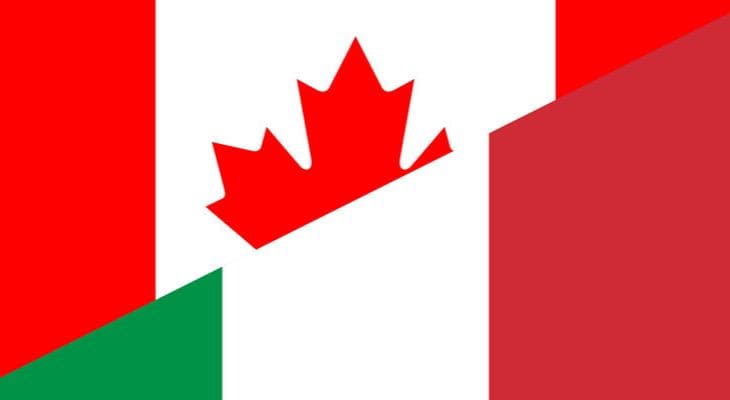
Working in Italy as a Canadian

Italy leading post-pandemic tourism

GUIDE To Backpacking Italy – How To Backpack Italy on a Budget!
Categories Europe , Italy
Backpacking Italy is possible! And Italy is one of the best Countries to backpack around in Europe. Why? Firstly because there are so many places to visit in Italy from iconic Cities to Hidden Villages and they’re all pretty easy to see.
Secondly, Italy is set up for backpackers and travellers with lots of Hostels, Free Walking Tours and Cheap Transport options.
Thirdly, it really doesn’t cost that much to visit Italy , even 2 days in Venice is affordable if you pick the right time and I have found Italy be to much cheaper than many other Western European Countries and you can travel Italy on a budget!
If you’re wondering how much does a backpacking trip to Italy cost? In this post, I’m going to share the costs of travelling around Italy and tips on how to travel Italy on a budget so you can go do that backpacking Italy trip you’ve always wanted to do!
Backpacking Italy

Best Time of Year To Backpack Italy
Avoiding Summer (late June, July & August) is the best way to visit Italy cheaply!
Summer brings the European School Holidays and not only do the prices of everything go up including a huge spike in accommodation, but Italy also becomes extremely hot, busy and not a nice time of year to visit.
In fact, many locals will leave Italy or at least the major Cities in the Summer and escape somewhere cooler which also means you won’t get as much of a local experience.
I backpacked Italy for one week in September which was a great time to go as the crowds had died down but it was still warm. I’ve been to Rome in February and had the most beautiful Spring weekend there and I’ve been to Verona & Trentino in early June which was getting hot and felt like Summer but didn’t have huge crowds just yet!
Related Post: How Much Money I Spent Travelling to Italy for 1 Week on a Budget.
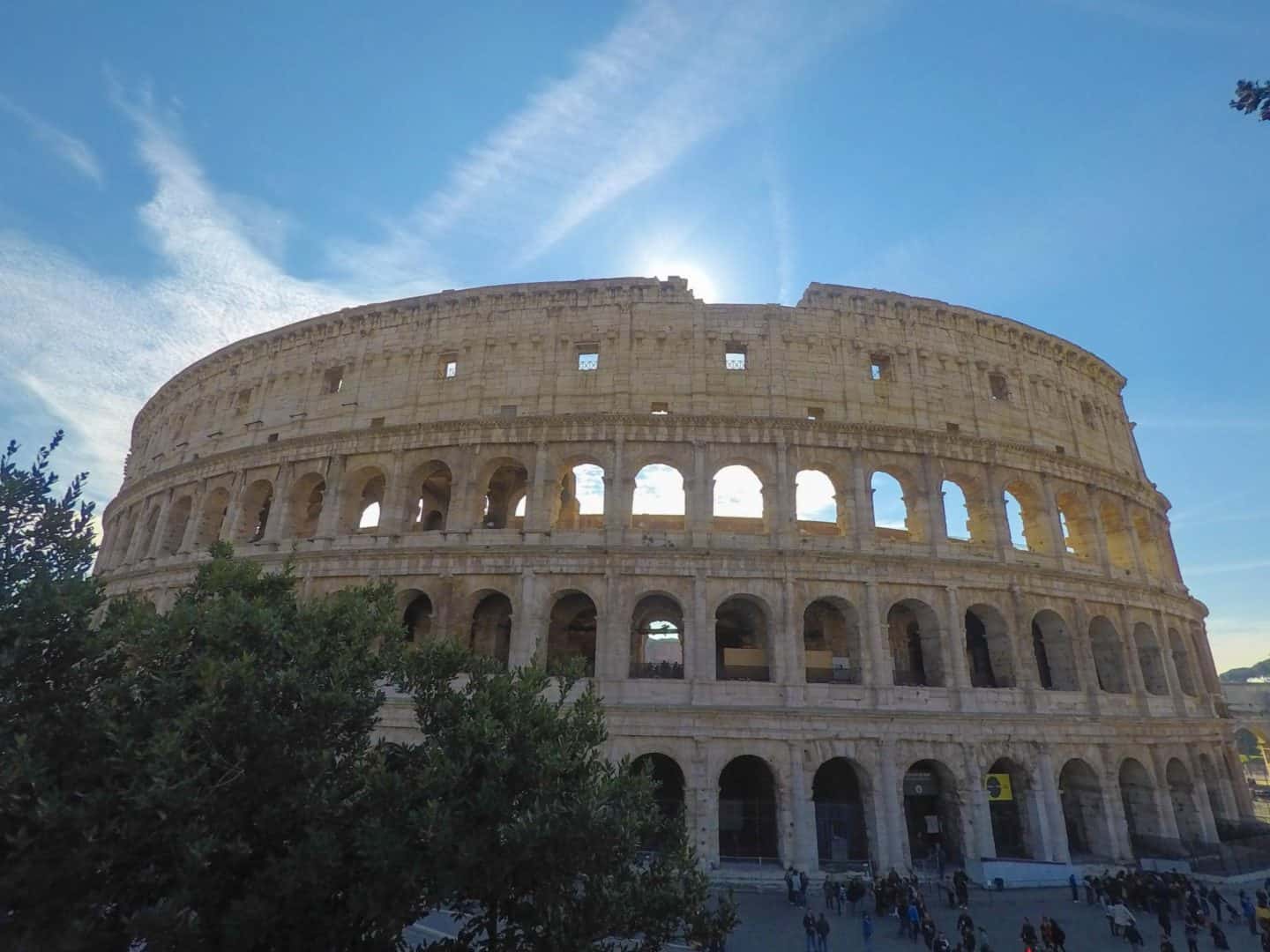
Getting to Italy on a Budget
Flexibility is key here! Italy has airports in all it’s major Cities but they can really range in price depending on where you are coming from and the time of year. The good thing about Italy is that it is very small so you can often fly into one airport and get to the place you actually want to go by train or bus cheaper than flying directly into that airport.
I would suggest planning your backpacking Italy itinerary around the flight costs. I use Skyscanner to check and book my flights and get the best price. You can choose your departing airport, search ‘Italy’ and the whole month you want to travel into work out the cheapest airport and dates to fly on.
As you can see below, London is a great airport to fly to Italy from and flights can start from €15.00 one way!
Related post: How to Plan, Book and Have a European City Break on a Budget!

Backpacking Italy Tip: One of the best things about playing flight roulette on Skyscanner in Italy (aka flying into the cheapest airport) is that you may end up in a City you hadn’t thought about.
For example, Turin often comes up as one of the cheapest airports to fly into, Turin is not a well-known place however you’ll be able to avoid the crowds there, if you look on a map of Italy it isn’t far from Milan and is one of the best airports to fly into to visit the well known Clinique Terre, a popular place to visit when backpacking Italy!
Once you’re at the airport be sure to look out for Airport Buses and / or Public Buses to take you into the City rather than getting a taxi. The Airport bus for Verona and Rome are both €6.00 which gives you an indication of costs.
Travelling Around Italy on a Budget
Italy is known for its train travel and train is the best and fastest way to travel between the Cities and Towns of Italy.
When I’m backpacking Italy, I check prices and book my tickets in advance on The Train Line . I’ve found that Trenitalia is one of the cheapest train companies to use in Italy especially if you are backpacking Northern Italy, however, to search this company and others The Train Line is the best platform to use to make sure you are getting the best price.
Travelling around Italy by Bus may work out to be the cheapest way to travel in Italy if trains are showing as quite expensive. Buses do take longer of course but if you are backpacking Italy you may have more time to do this. The Train Line also searches Bus and Coach Travel in Italy.
Tip: In order to get the cheapest tickets, book in advance and avoid rush hour times like 9:00 am and 5:00 pm.
Budget Accommodation in Italy
Italy has plenty of hostels offering good value backpacker accommodation and if hostels aren’t your thing there are also plenty of Pensions and Guesthouses with private rooms so you don’t have to stay in expensive hotels.
Don’t expect these hostels and pensions to be really cheap though, accommodation will be what you spend most of your money on in Italy but you can expect good quality in return.
As in all Countries you pay for what you get . For example, I’ve stayed in some cheap hostels for less than €20.00 a night however this has shown in the bad beds, lack of social areas and staff that don’t speak English as well, as opposed to hostels that cost around €25.00-35.00 a night which offer really good quality beds and bedrooms with a bar or social lounge and really good staff.
Hostels I’ve stayed in and would recommend in some of the major cities when backpacking Italy myself are:
Rome: The RomeHello
Verona: The Hostello
Milan: Ostello Bello Grande
Venice: Generator Venice
If you’re working out costs for a trip to Italy for two people be sure to look at private rooms too as by the time you’ve paid for 2 hostel beds it may be just as much to get a private room somewhere.
Backpacking Italy Tip: Try to avoid the big and popular Cities on weekends , for example visiting Venice or Rome during the week will be cheaper than staying on a Friday and Saturday night.
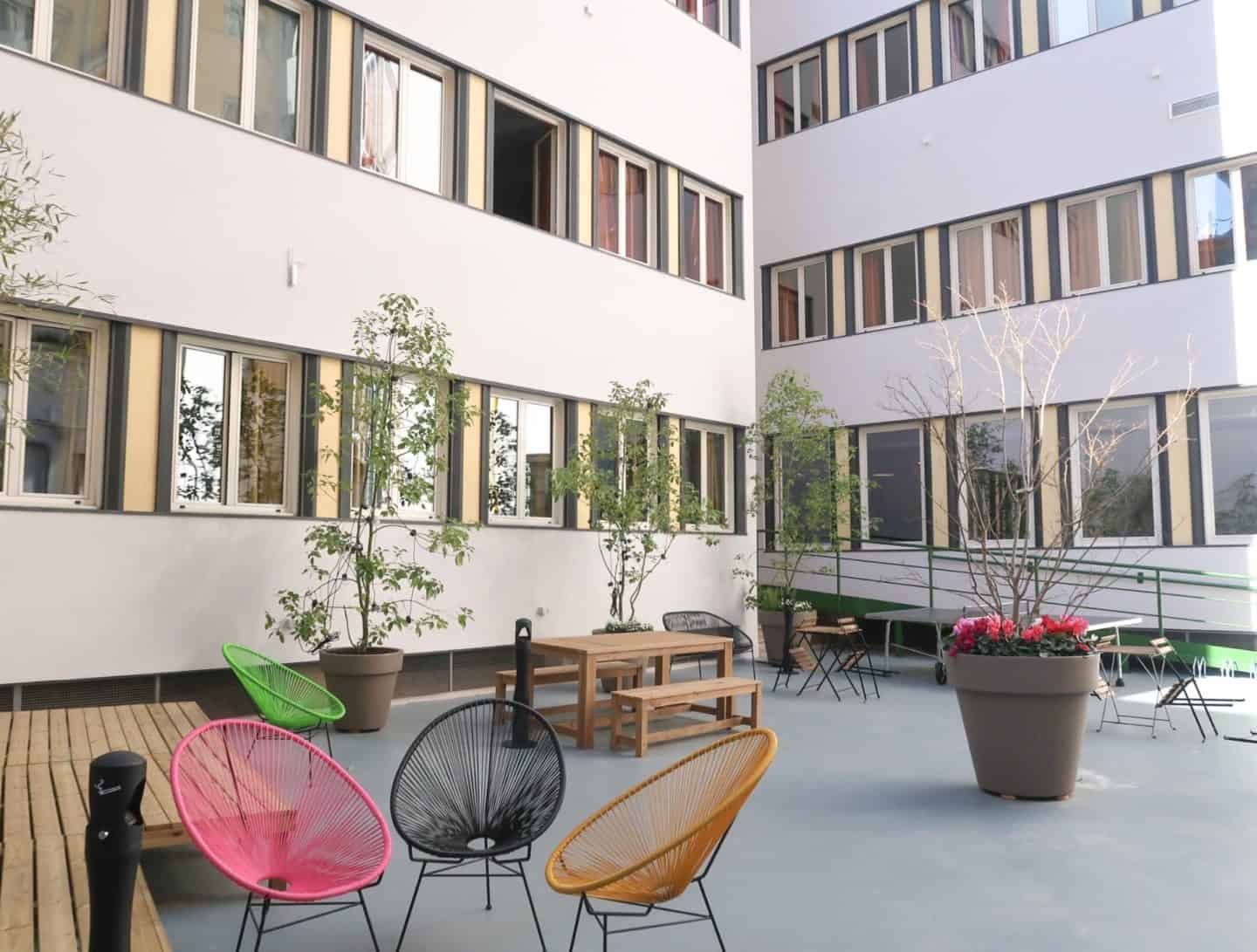
Eating & Drinking in Italy on a Backpacker Budget
This is where you can really stick to a budget in Italy… or go crazy!
It’s surprisingly possible to eat inexpensively in Italy by eating in cheaper restaurants outside of the main tourist areas and by grabbing food like Pizza and Focaccia in takeaway shops and this is how I really travelled Italy on a budget a few years ago and is the best way to stay on budget when backpacking Italy!
Related Post: How Much Money I Spent Travelling Italy for 1 Week on a Budget.
Here’s an idea of some costs of food in Italy:
Pizza Slice: Range from €2.00-€5.00
Ice Cream: Range from €2.50-€7.00
Beer / Glass of Wine / Aperol Spritz: Range from €3.00-€6.00
Pizza in a Restaurant: Range from €5.00-€15.00
Pasta Dish in Restaurant: Range from €8.00-€15.00
If you are spending 2 weeks in Italy or even longer you’ll probably get a bit bored of eating out all the time so be sure to check out the Supermarkets too. I found that hostels in Italy do have kitchens so you can make some meals yourself. The fruit is also very inexpensive, I recently bought 2 apples, 2 oranges, an avocado and a loaf of bread for €4.50! I also got a huge piece of delicious Focaccia in a Spar Supermarket for €1.50 .
Tip: A lot of restaurants will add on a service charge so be aware of this to avoid unexpected costs.
Tip: Look out for breakfast and lunch deals on offer.
Top Tip: Just embrace the carbs! It’s the cheapest and most delicious way to travel to Italy!
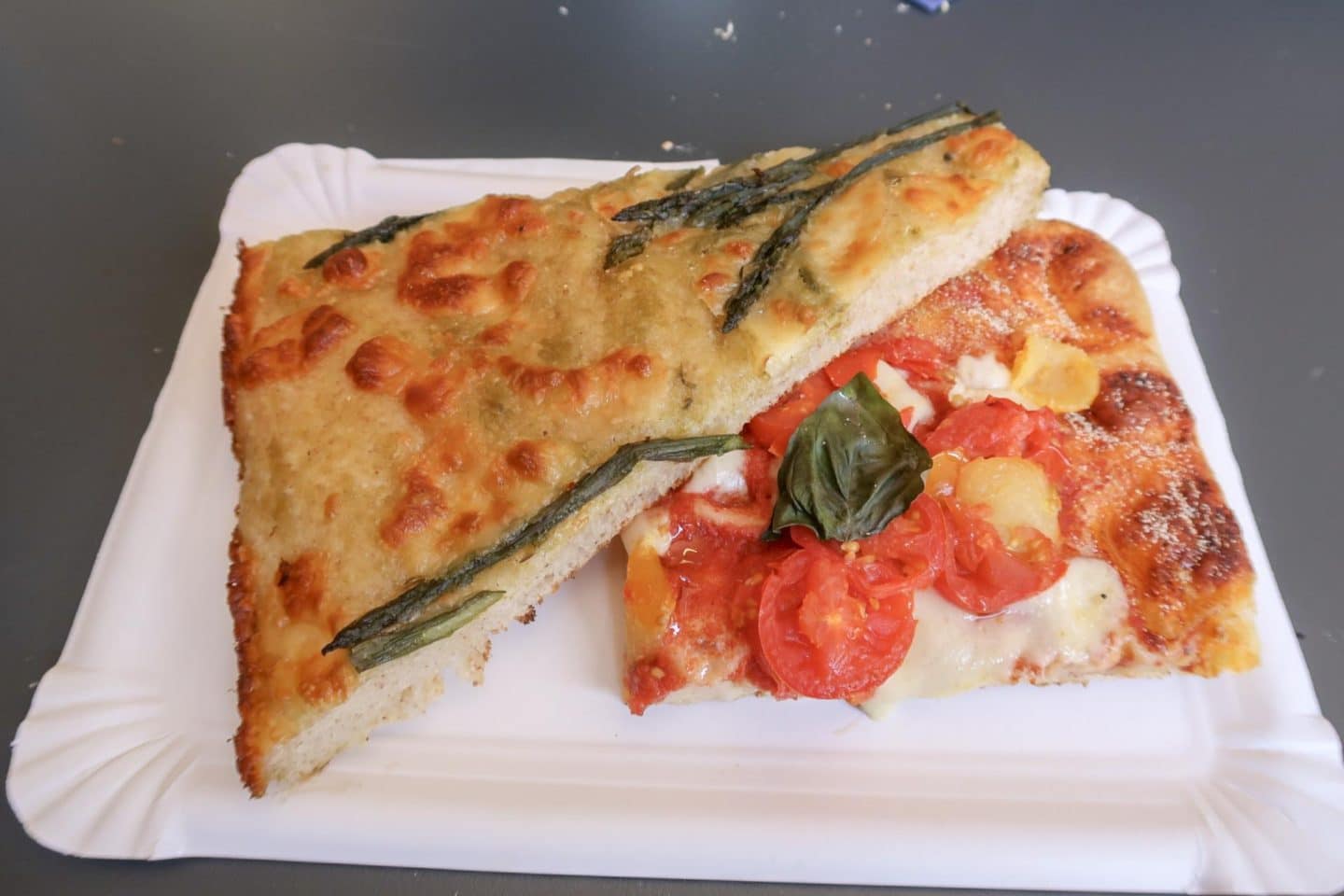
Travel Insurance for Italy
Remember that you will need travel insurance to travel around Italy even if you are coming from the UK or a nearby European Country. I am insured with World Nomads and I really recommend them. You can get a quote here .
Things To Do in Italy on a Budget!
Free Walking Tours in Italy need to become your best friend when backpacking Italy! Not only are they cheap (they aren’t actually free as you pay a tip at the end if you enjoyed it) but you’ll get to learn a lot about the place you’re in and if you’re backpacking Italy alone they are a good way to meet fellow backpackers.
Walking, in general, is also the best way to see Italy including the big cities, smaller towns and rural areas as there are many popular hikes in Italy. Remember that Italy isn’t all about the cities!
The Churches and Basilicas are generally free to enter and most museums in major cities will have a day of the week that they offer free entry so be sure to look into this.
A lot of cities, beaches and towns in Italy can be visited on a day trip! So if you look and accommodation is expensive, see if you can go on a day trip from a bigger city where accommodation is cheaper. These day trips from Bologna will give you some ideas!
In terms of visiting attractions in Italy, prioritising is key . Cities in Italy offer so much and if you pay to enter everywhere the costs will soon add up, instead deicide what you really want to visit and what you can see for free from the outside.
I hope this shows you that backpacking Italy is a good idea and that you can visit Italy on a budget!
- For more of my posts on Italy see:
- How Much Money I Spent Travelling to Italy for 1 Week on a Budget.
- The Best Way to see Venice and Escape the Crowds!
- ALL ITALY POSTS
If you liked this please share it! 🙂
- Click to share on Facebook (Opens in new window)
- Click to share on Twitter (Opens in new window)
- Click to share on Pinterest (Opens in new window)
- Click to email a link to a friend (Opens in new window)
By using this form you agree with the storage and handling of your data by this website. *
A Student’s Guide to Exploring Italy on a Budget
Author: Cory Shilling –
This guide is for you if you’re a student who wants to travel across Italy but is concerned about the cost. Italy is a well-liked travel destination for students because of its fascinating history, stunning scenery, mouthwatering cuisine, and many cultural treasures . But, it is feasible to experience all that Italy has to offer on a budget with a little bit of preparation. In this article we provide you some tips and advice in this to help you travel across Italy on a budget .
Exploring Italy on a budget – A Student’s Guide
1. schedule your trip for off-peak season.
Firstly, the all important question: when to go ? During June through August , which is considered Italy’s high season , rates for travel, lodging, and attractions are at their highest. Plan your vacation during the off-season, which runs from November to March , to save money. You’ll have a better chance of obtaining economical lodging and less expensive flights during this time because rates are lower and there are less tourists around.
=> It’s important to bear in mind that the more popular cities , like Venice , Florence or Rome have tourists all year round . That means prices are generally much higher than smaller towns or off-the-beaten track places. It’s also advisable to check out special events that are on in these cities during certain times (like Pitti fashion show in Florence or the Venice Biennale) to avoid higher prices.

2. Plan Ahead
When it comes to finding cheap vacation, preparation is key . To identify the most affordable options for travel, lodging, and activities, do some prior research on your chosen trip. Traveling off-season, when costs are cheaper, is another way to save money. Think about other lodging options like hostels, homestays, or couchsurfing . These choices can offer a distinctive cultural experience and be far less expensive than motels. Use the student discounts available for travel, tours, and attractions. Bring your student ID with you as many companies may give students discounts.
Of course you need to carefully plan your study time and course work too. If you need online help with any assignments, including nursing assignment help, take advantage of AssignmentBro so you can have a little peace of mind on your trip. Skilled writers can assist you with everything from writing your topic, to producing a paper that is free of plagiarism. If you’re feeling anxious about the written exam, think about contacting a firm that can help you with your health and safety nursing assignment. They might be able to assist you in achieving the grade you need to enrol in the nursing program of your choice.
3. Opt for Affordable Accommodation
When visiting Italy, lodging might be one of the most expensive expenses. However, there are a number of affordable lodging options , including hostels, guesthouses, and low-cost hotels. Hostels are an excellent choice for travellers on a tight budget since they provide economical dormitory-style lodging, common kitchens, and social activities. Budget hotels and guesthouses are also a wonderful choice because they offer the essentials at a reasonable cost.
4. Check out the Free Sights & Activities
Many well-known tourist destinations may be found in Italy, including the Colosseum in Rome, the Leaning Tower of Pisa, and the canals of Venice. While some of these sights can be pricey, you can admire many of them without paying for entrance tickets. Discover the free sites in Italy to save money, including the Pantheon, the Trevi Fountain in Rome, Florence Cathedral and all the beautiful squares you can imagine. Without breaking the bank, these attractions provide a look into the history and culture of Italy.
=> Check out the Best Things to do in Florence on a budget , and some Budget-Friendly Outdoor Adventures in Tuscany !

5. Use public transportation as much as you can
Italy’s public transportation is inexpensive and effective , making it a fantastic choice for travellers on a tight budget. Use the buses, trains, and trams as a substitute for a rental car or a cab. Italy’s railways are dependable, reasonably priced, and connect to the majority of the country’s major cities, making countrywide travel simple.
Insider’s tip => if you’re planning a trip to lesser touristy parts of Italy, or travel to smaller towns in the countryside, check bus routes and timetable – they are less frequent than between the major destinations.
6. Eat Like a Local
Pasta, pizza, and gelato are three of the most popular dishes in Italian cuisine. Nonetheless, eating at restaurants can be pricey. Eat like a native to save money , and check out the street cuisine and regional markets. You can choose from a wide range of street food alternatives in Italy, including arancini , pizza al taglio , and panini . Local markets also provide fresh foods including meat, cheese, and a great selection of food products at far less money than eating establishments.

7. Study a little Italian
When visiting Italy, learning a little basic Italian might be really helpful . It can assist you save money in addition to facilitating communication with the community. Italian-speaking patrons frequently receive discounts at restaurants and tourist destinations, and it can be useful when haggling over costs at nearby markets.
=> Check out the Best places to study Italian in Italy .
8. Benefit from student discounts
You are entitled to a number of discounts in Italy as a student . Student discounts are available at many sites, including museums and galleries , and they can save you up to 50% off the standard fee. Also, you can benefit from savings on lodging and public transportation. Always take your student card around with you!
9. Sign up for Complimentary Walking Tours
Numerous Italian cities provide free walking tours , which are an excellent opportunity to see the city and discover its history and culture. These guided tours are a terrific opportunity to meet other travellers and are run by knowledgeable tour guides.
=> Check out Free Tours in Florence and Free Walking Tours in Rome .
10. Choose less well-known locations
Rome, Florence, and Venice are well-liked travel destinations, but they can also be pricey. Try traveling to less well-known Italian cities like Bologna, Perugia, Padua or Palermo . These cities provide a distinctive cultural experience and are frequently more affordable than popular tourist hotspots.
=> New Rules for tourists in Italy in 2023

11. Think of a homestay
In Italy, staying with a local family can be an excellent opportunity to explore the local culture while also saving money. Homestays provide inexpensive lodging and the chance to encounter genuine Italian hospitality . Also, you’ll get a chance to practice your Italian and discover more about regional customs and traditions.
12. Make wise souvenir purchases
The best way to remember your trip to Italy is with a souvenir, but they may be quite pricey. Consider purchasing at neighborhood markets or from street vendors rather than tourist shops if you want mementos. These sellers provide distinctive and genuine souvenirs at a portion of the price of tourist shops.
=> 10 Small Gifts to buy in Florence
13. Vacationing with Friends
Taking a trip with friends can help you save money on lodging and transportation . Sharing meals and the cost of a hostel or guesthouse accommodation might save your travel expenses dramatically. Also, it’s a fantastic chance to make enduring memories with your pals.
14. Make use of the free WiFi
In Italy, the majority of cafes and eateries have free WiFi , which can help you avoid paying for data usage. Use the free WiFi to connect with relatives and friends back home rather than utilizing your data plan. Remember: hotels, hostels also usually have free WI FI, as do local libraries .
15. Be flexible while making travel arrangements
Having a flexible approach to your travel arrangements can help you find cheaper flights and lodging. Instead of traveling on the weekends, think about going during the week when rates are frequently lower. Search engines for travel can also be used to compare costs and get the greatest offers on lodging and travel.
16. Enjoy Italy’s beautiful nature with plenty of activities
At the end of the day, some of the best experiences you can have in Italy are free. Enjoy its unspoilt nature, varied landscapes, fabulous beaches for swimming or sunbathing (Italy has 7500 Kilometres of coastline!) and the idyllic countryside in Tuscany and Umbria. You’ll find dramatic scenery of the Alps in the North, and the Apennines that run along the spine of the country, with plenty of natural parks and nature reserves for hiking or cycling.
=> Top 12 Unesco Sites in Italy
=> Best Places to study abroad in Italy

To recap – Students Travelling to Italy on a budget
In summary, with some preparation and ingenuity , it is feasible to travel around Italy on a tight budget . You may take advantage of everything Italy has to offer without spending a fortune by using these suggestions and tactics. There are many ways to save money while taking advantage of all that Italy has to offer, from exploring the free attractions to dining like a native and taking advantage of student discounts.
Author’s Bio
Cory Shilling is a talented and dedicated writer who treats every writing gig as something valuable to the person who orders it. He understands the difficulty that non-ending school and college assignments present to the students, and this is why he is always keen to provide the best help. He has gained popularity with his hard work and exceptional writing skills.
Your friendly online guide to Florence and Tuscany. Get our insider travel tips delivered to your mailbox every month.
Email address:


Living in Italy: Where You Can Budget a Lifestyle Under $2000
I t's the dream of many to explore the unique natural wonders, culture-rich towns, and delicious cuisine Italy offers. Is moving to this country on a budget possible in retirement, after graduating or simply on a low income? What places can I expect to find in Italy where life is nice and affordable?
This time, we'll dive into the best places to live in Italy on a $2,000 budget . When considering budgets, housing is always the most significant expense. As such , we've sorted through hundreds of locations in Italy, looking at the average cost for a two-bedroom apartment, to uncover the most wonderful places for a couple to live within in this budget.
$2,000 per month is a very reasonable amount for a high quality of life in Italy. It opens up plenty of beautiful places for whatever home or type of city you want, from sunny towns on the beach to medieval villages in the hills.
5. Pescara, Abruzzo
- Population: 120,420
- Rent for a two-bedroom apartment: $680
- Estimated monthly living costs $2,040
Pescara, a town facing the Adriatic Sea, is one of the biggest cities in Abruzzo and the region's capital. Whether young or old, if you're looking for beaches, fun nightlife, and beautiful beaches, Pescara is a great place that offers a high quality of life for all ages.
The city is also very well connected, with solid public transportation in the city limits, a major railway station, and interregional bus station connecting you with the rest of Italy, and an airport connecting you with the rest of Europe and the world.
If you plan on moving to Pescara, Abruzzo , you'll have more to look forward to than beaches during warmer weather. On the edge of Abruzzo National Park, the biggest in Italy, you can find tons of outdoor activities. Pescara is also around an hour's drive from the Maiella mountain range, which has skiing options for the winter.
You'll find very little English use in this area, though, as Pescara is mainly visited by Italians looking to spend their vacation away from tourists. This could be a positive or a negative. If you plan on finding work in Pescara, you'll likely find it difficult if you don't know Italian. On the other hand, it means you'll get a more authentic Italian experience.
On top of this, the town is a bit industrial-looking and, for the most part, doesn't have the same charm that so many smaller towns have. Perhaps this is why the town is a bit more affordable than other Italian beach towns . You can find two-bedroom apartments for around $680, and our estimated monthly living costs will run you around $2,040.
4. Arezzo, Tuscany
- Population: 96,000
- Rent for a two-bedroom apartment: $690
- Estimated monthly living costs: $2,070
Tuscany is one of the most popular regions in Italy for expats to settle. It's no wonder, as the region offers incredible wines, rich local food, and picturesque settings. Arezzo, perched atop a hill, perfectly represents what people love about about this region.
Despite its deep cultural richness, Arezzo has quite an easygoing atmosphere. Often compared to Florence, the city is full of stone buildings and medieval cobblestone streets weaving through the historic center. Though it has deep ties to Florence, as the Medici family's rule heavily influenced the city, the city offers a quiet escape from the typical tourist hubs.
If you're looking for a more modern area, the San Donato district provides a variety of cafes, bars, restaurants, and well-maintained public parks. The district is also easily accessible through the city's public transportation.
Arezzo is a convenient base for exploring the area. The city is on the eastern edge of the Chianti wine region and is equidistant to Florence, Siena, and Perugia. On top of this, the city is close the the Casentino Forest and other parks and natural reserves, giving you plenty of outdoor options for hiking, biking, and more.
One complaint many Arezzo residents have is the weather. Surrounded by mountains, lakes, and forests, when clouds cover the city, they often get stuck there for a while. Though the climate is mainly Mediterranean, you can go through several days of rain, especially in the winter.
Arezzo offers the best of Tuscany at affordable prices . Two-bedroom apartments in the city average for about $690. Compared to Pisa, a similar city in the region and a popular destination for travel and living, apartments of the same size will cost you $890.
3. Lecce, Puglia
- Population: 95,000
- Estimated monthly living costs: $2,040
Lecce is known as the "Florence of the South" because of its baroque influences, limestone buildings, and ornate architecture. This moderately-sized town in Puglia , of 95,000 people, offers a vibrant atmosphere without the overcrowded feeling of busier cities. The town is considered one of the most beautiful in Italy because of its blend of Byzantine, Greek, and European influences, not only in its buildings but also in its art and culture.
There are many amazing things to do in the city and the Salento area in general , and the year-round sunshine and proximity to the beach make it a desirable place to live. Plus, the highly-rated university brings in 18,000 students to the city, adding a dynamic, young energy. This also provides a great option for English speakers looking for work in the city.
On any given Sunday, you can walk down the whitewashed streets and stop in at one of the restaurant, wine bar, or cafe options in the city. Dozens of museums showcase the history, art, and cultural exhibits, while there are inexpensive theaters that feature operas, symphonies, and other events.
However, navigating public administration can be challenging, as it's often unorganized and confusing for locals, let alone foreigners. Simple tasks like getting an ID or signing up for a Codice Fiscale can take much more time than expected.
Despite this, its affordability, with two-bedroom apartments averaging around $680 a month, beauty, and vibrant lifestyle make it a fantastic place to settle.
2. Palermo, Sicily
- Population: 674,000
Palermo, the biggest city in Sicily and on our list, offers a meager cost of living with plenty of opportunities for exploration. Living in this city gives access to the rest of Sicily and, as a Ryanair hub, connects you to the rest of Europe.
Palermo provides a wide variety of experiences. Of course, Sicily is most famous for its diverse food offerings. You'll find food for the pickiest eaters, like refreshing granita, crushed ice topped with seasonal fruit, coffee, or chocolate. For seafood lovers, you can find freshly caught seafood like grilled swordfish or raw tuna with pistachio cream. If you need a quick snack, the city offers quick street food like arancini, fried rice balls stuffed with ragu, a mix of meat, spices, and tomato sauce.
The best part of living in a city like Palermo is the fresh food in restaurants and local markets. By choice or perhaps by necessity, Sicilians prefer produce grown on the island or caught in the nearby sea, making it cheap, healthy, and delicious. The city is full of locals, snacking on the streets outside of restaurants or sipping on cocktails on any weeknight.
Beyond the culinary choices, Palermo is also a gumbo pot of cultural and historical importance. Greek, Spanish, Romans, Moors, Arabs, and Normans are just a few people who came through Palermo. You can see it in the architecture, the unique Sicilian dialect, and the fantastic food.
Despite its positives, Palermo has a few setbacks if you plan to live here. The most worrying aspect is the economic issues the city and region face. Sicily is often considered Italy's forgotten region, so much-needed infrastructure investments often don't happen. You'll run into late and crowded buses and inconsistent trains. On top of this, you may find it challenging to find a job if you plan on searching the area when you move there.
But some of this can also be seen as a positive, as many areas in Palermo are untouched by tourism, giving you an authentic Sicilian experience in a large, busy town. Very few cities in Italy and abroad are this big and offer this much excitement while adhereing to smaller budgets.
1. Perugia, Umbria
- Population: 162,000
- Rent for a two-bedroom apartment: $670
- Estimated monthly living costs: $2,010
Perugia is nestled in the Italian hillside in Umbria , the heart of Italy, and blends medieval charm and modern amenities. This centrally located city is just a few hours away from the center of Rome, Assisi, and Florence. Additionally, national parks are a quick drive or train ride away, offering a quiet weekend outdoors.
One of Perugia's best features is its vibrant community. As home to the University of Perugia, around 30,000 live in the city for most of the year. Despite its medium size of 162,000 people, the city pulsates with life. A melting pot of cultures, 8% of the city's population comprises expats.
You'll find tons of cultural expreiences in the town. The first is the music scene, with bars and clubs hosting bands, DJ sets, and open mics nightlight. The town's musical ties are highlighted by the popular festivals in the summer, with Music Fest Perugia and the Umbria Jazz festival attracting thousands of visitors every year.
Of course, it wouldn't be a popular Italian town without its food. Umbria is famous for its truffles, which are often mixed with pecorino cheese in pasta. You can find colorful displays of fresh fruit, vegetables, cheese, wine, and more at the several farmers markets that are held throughout the week.
As a hilltop town, there's lots of climbing and descending in the city, so you may want to look elsewhere if you have mobility issues. However, the city is one of the few in Italy that provides tons of great public transportation options, including the cute minimetro. Despite areas of high elevation, it's pretty easy to get around. In some places, there are escalators that will take you to the top of the hill.
Perugia is also one of the cheaper cities on our list, with the average two-bedroom apartment costing around $670 a month. A couple could easily live off of a budget of around $2,010 a month while still enjoying the amazing restaurants and scenic landscapes the city has to offer.
This article originally appeared on MyDolceCasa and was syndicated by MediaFeed.
More from MediaFeed:
- 25 Terrifying Bridges in the US and Beyond
- 8 Guns That Have Vanished From the Market
Like MediaFeed’s content? Be sure to follow us.
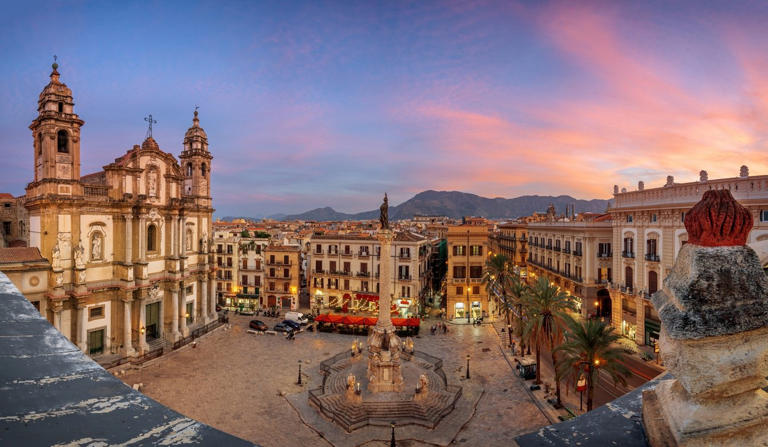
We've detected unusual activity from your computer network
To continue, please click the box below to let us know you're not a robot.
Why did this happen?
Please make sure your browser supports JavaScript and cookies and that you are not blocking them from loading. For more information you can review our Terms of Service and Cookie Policy .
For inquiries related to this message please contact our support team and provide the reference ID below.
Italy regulator orders Ryanair to stop curbing ticket sales by travel agencies
- Medium Text
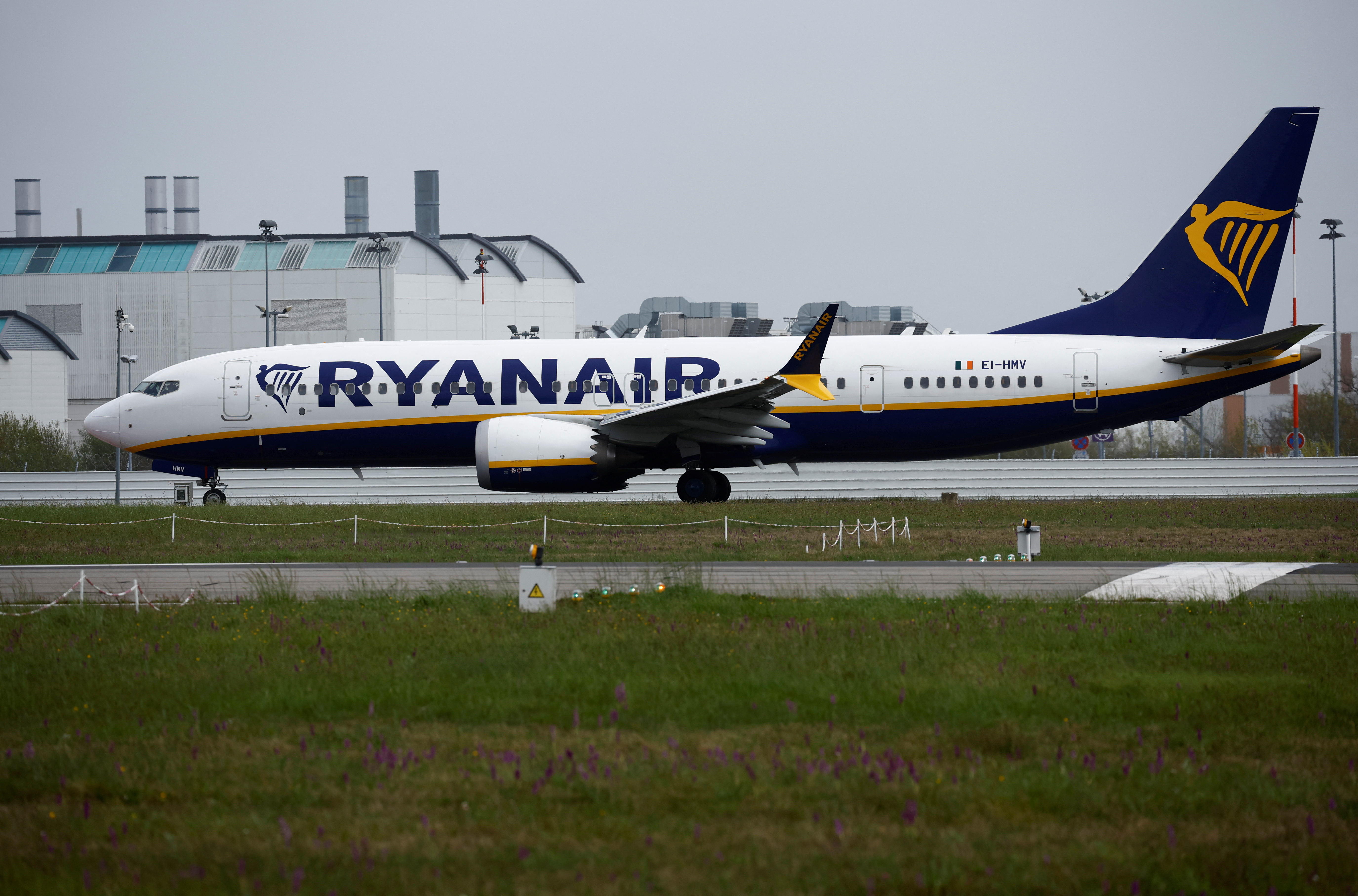
- Company Il Messaggero Società Per Azioni Follow
- Company Ryanair Holdings PLC Follow
- Company Deutsche Lufthansa AG Follow
Make sense of the latest ESG trends affecting companies and governments with the Reuters Sustainable Switch newsletter. Sign up here.
Reporting by Giulia Segreti, Alvise Armellini and Elisa Anzolin; Editing by Janane Venkatraman, Ros Russell and Richard Chang
Our Standards: The Thomson Reuters Trust Principles. New Tab , opens new tab
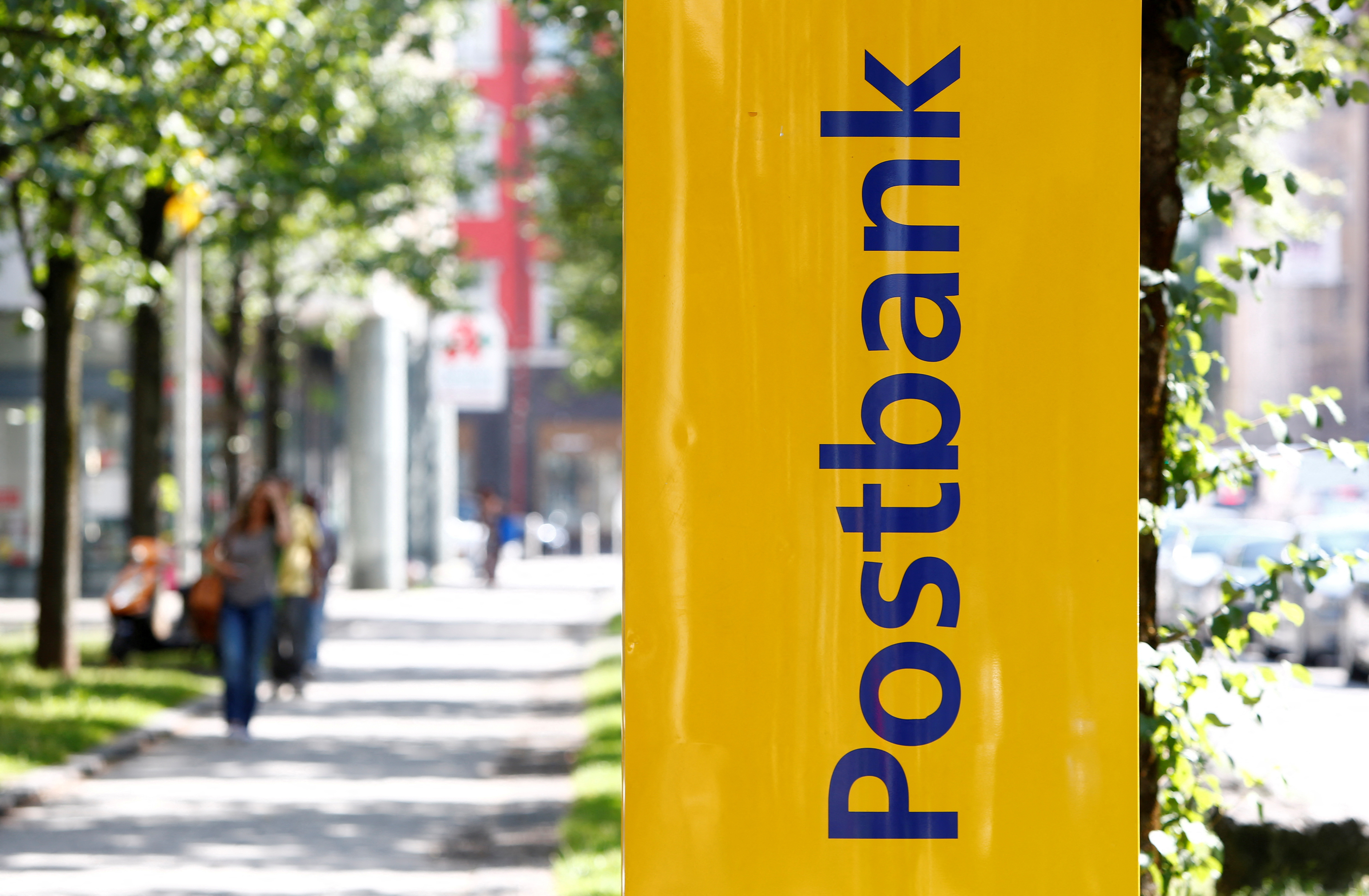
Business Chevron

Dollar edges down but still close to 5-1/2 month high, Fed, Middle East in focus
The dollar edged down but was still within striking distance of its 5-1/2-month high on Wednesday, keeping the yen rooted near 34-year lows after Federal Reserve officials reiterated interest rates are likely to stay higher for longer.


IMAGES
VIDEO
COMMENTS
In Rome and Florence, prices throughout the year are about 20% higher than anywhere else. For those traveling with a tent, campgrounds are available around the country, usually costing between 15-30 EUR per night for a basic plot for two people. A night in a two-star budget hotel ranges between 70-125 EUR per night.
Public transport options and costs. Public transport is an economical way to get around when traveling in Italy. Depending on the city, various options are available, including buses, trams, metro systems and even boats. Single-use tickets can range from €1.50 to €5, while daily passes usually cost between €4 and €15.
Bed in a hostel dorm: €25 to €50 per night. Double room in an agriturismo (farm stay): from €80 per night. High-speed train ticket from Florence to Milan: €56. Urban bus or tram ride: €1.50. Glass of Chianti wine: €5 to €8. Dinner for two: from €50. Margherita pizza: €6 to €8.
The cost of a trip to Italy varies, allowing travellers to match the costs to their preferences. The average budget for a week-long visit can range from €1,300 to €2,600 per person, excluding airfare. This amount includes accommodation, meals, local transport and entertainment. Luxury travellers seeking a premium experience can incur costs ...
Traveling to Italy on a budget: Cheapest places to stay in Italy. Staying at the most popular locations in Italy like Rome, Venice, Florence, Cinque Terre, and the Amalfi Coast, are not going to be cheap. Don't be afraid to explore other, lesser-known parts of the country to stay within your budget for an Italy trip.
Italy's landscapes are a masterpiece, and exploring them doesn't cost much. Hiking the cliff-side paths of Cinque Terre, strolling through the olive groves of Umbria, or basking in the sun on the Amalfi Coast's free beaches—nature's beauty is Italy's most generous gift to a budget traveler.
Use your points. Marriott has more than 60 hotel properties in Italy from Category 2 AC properties to luxurious Category 8 St Regis hotels. Hilton has around 20 hotels and Hyatt has more than 50 properties. IHG and Radisson also have a presence in the country. This gives you numerous options from budget to luxury to use your points.
Italy is a beautiful and diverse country that offers endless opportunities for exploration and adventure. Whether you're interested in history, culture, or nature, there's something for everyone in Italy. Moreover, traveling to Italy on a budget is possible thanks to the many budget-friendly options available.
how to plan a trip to Italy on a budget. The best way to plan a cheap trip to Italy is to do some serious planning. Research cheap flights, budget airlines, trains, budget hotels, and free things to do in Italy. I highly recommend downloading our Italy Planner, which you can find here. A great way to save money on traveling to Italy is to use ...
Once a temple, now a church, the 2,000-year-old building is one of the best preserved structures from the Roman Empire. Eat a gelato or street snack on the staircase of the Spanish Steps. It's free to see the main floor of St. Peter's Basilica. Get there early in the morning or after 2pm for shortest lines.
Budget-Friendly Cities In Italy If you're in need of a budget-friendly Italy travel itinerary, our 2 Weeks In Italy Travel Guide is made for you. This guide covers the cities of Rome, Venice, Florence, Pisa, and the stunning Cinque Terre. Below, we list a few budget travel tips for each of these amazing cities: Rome
How to Travel Italy on a Budget: A Step-by-Step Guide. 1. Go in The Off-Season. Tickets are always going to be more expensive during peak holiday months. With that being said, it's not a bad thing to travel to Italy in the slower months. If I'm being honest, Italy in the summer is one of my least favorite countries, while Italy in the fall ...
Traveling to Italy on a budget is entirely possible with some careful planning and budgeting. By considering the best time to visit, utilizing affordable transportation options, opting for budget-friendly accommodations, enjoying local cuisine without breaking the bank, exploring free or low-cost attractions, following money-saving tips, and ...
Budget Travel, Italy, Travel Hacks. More News & Features. 50 Ultimate Things to Do in Los Angeles; 35 Ultimate Things to Do in New York City; 10 Things to Do in Orlando Besides Disney World;
Two people traveling together for one month in Italy will often have a lower daily budget per person than one person traveling alone for one week. A one month trip to Italy on average costs around $5,413 (€4,996) for one person and $10,825 (€9,992) for two people.
Top Tips for Traveling to Italy on a Budget. 1. Travel off-peak season. Believe it or not, this photo above is October on the Amalfi Coast! The sun was shining and there were much fewer tourists around. Traveling during the shoulder season brings in many benefits: cheaper prices, fewer crowds, and more.
Budget Travel, Europe, Guides, Italy, Travel Stories. How to Visit Italy on a Budget. Camille Danielich Published November 1, 2020 Italy's dynamic and one-of-a-kind offerings make it a must-visit destination for travelers around the globe. However, high-season flight prices, over-priced meals, and steep accommodation can be limiting factors ...
There are many options for Italy Rail Passes, depending on how many days of train travel you need, but - at the top end of the spectrum - a rail pass good for eight days of train travel in a one-month period ranges between $373-$465 (adults) or $304-373 (youth). A pass good for only three train travel days in one month costs between $212 ...
Go contactless with digital tickets on your phone. Compare ticket prices from hundreds of train companies. Check live train times. Book tickets. + More. Whether you're visiting for the historical landmarks, the breathtaking scenery or the mouth-watering food - travelling around Italy on a budget is easier than you think.
Helpful Resources For Visiting Italy On A Budget. Get the cheapest flights to Italy using this Qatar Airways special offer. Yes, this is an affiliate link, but the flights are so affordable, even I use it when booking my flights. For the best travel insurance deals for your trip to Italy, I always choose and recommend SafetyWing.
The best time to visit Italy for those traveling on a budget is the tourist off-season from November 1st to December 14th, and from December 24th to March 31st. In addition to cheaper flights and rooms, you will be able to find plenty of discount rates for guided tours - a highly recommended activity, especially for cities rich in Italian art ...
Related Post: How Much Money I Spent Travelling Italy for 1 Week on a Budget. Here's an idea of some costs of food in Italy: Pizza Slice: Range from €2.00-€5.00. Ice Cream: Range from €2.50-€7.00. Beer / Glass of Wine / Aperol Spritz: Range from €3.00-€6.00. Pizza in a Restaurant: Range from €5.00-€15.00.
Florence 5. Use public transportation as much as you can. Italy's public transportation is inexpensive and effective, making it a fantastic choice for travellers on a tight budget.Use the buses, trains, and trams as a substitute for a rental car or a cab. Italy's railways are dependable, reasonably priced, and connect to the majority of the country's major cities, making countrywide ...
Arezzo, Tuscany. Population: 96,000. Rent for a two-bedroom apartment: $690. Estimated monthly living costs: $2,070. Tuscany is one of the most popular regions in Italy for expats to settle. It's ...
"From the lush landscapes to the faultless food, you'll never be short of things to do - or eat - on an Italian escape," says tour guide Lorne Blyth. After travelling around the country - both ...
April 6, 2024 at 8:12 AM PDT. Italy's government expects debt this year to "surely" stay below 140% of gross domestic product. Speaking to reporters on the sidelines of the Ambrosetti ...
Italy's antitrust regulator ordered Ryanair on Monday to stop limiting or blocking the sale of its flight tickets by travel agencies, as it probes the Irish budget carrier's possible abuse of its ...